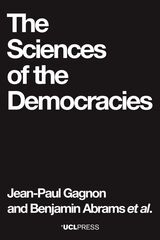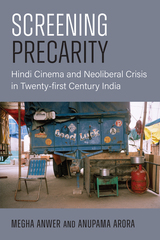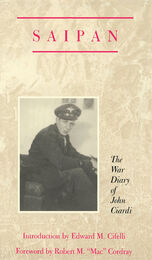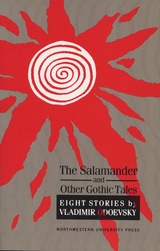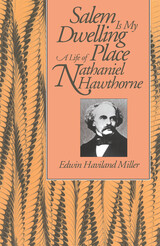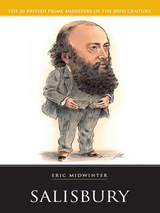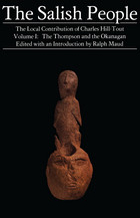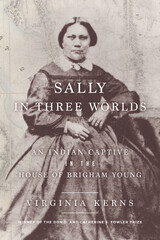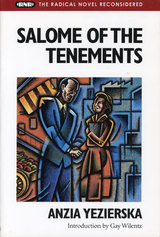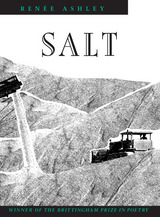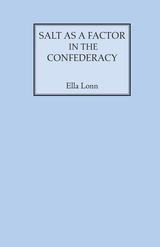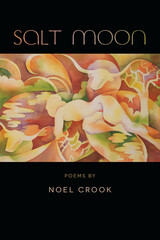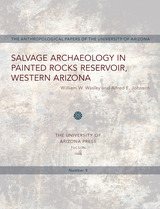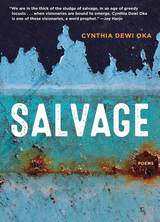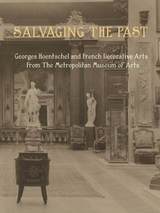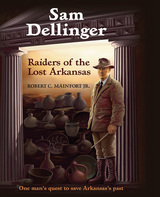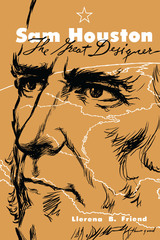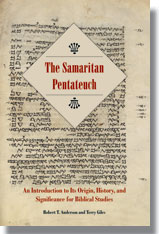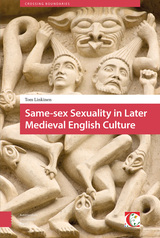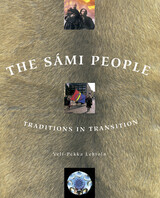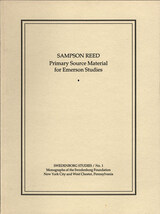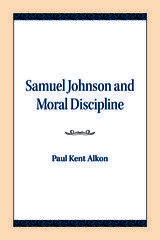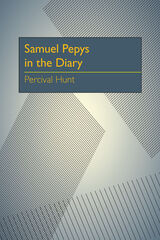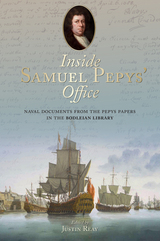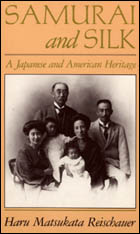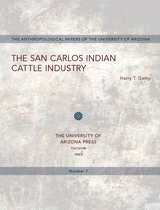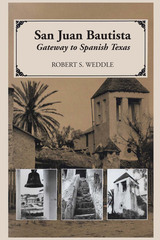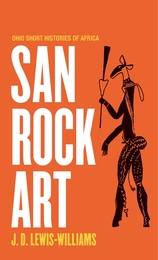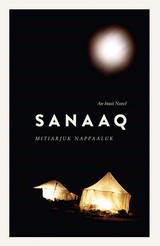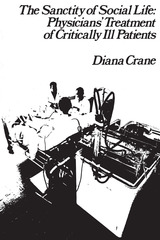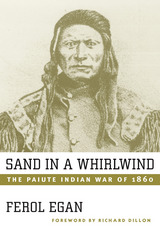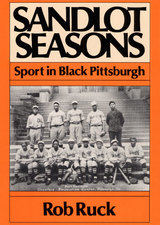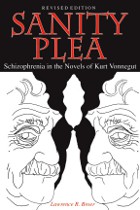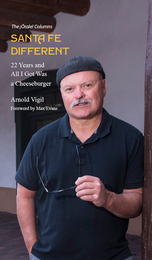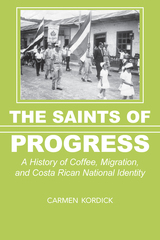 The Saints of Progress: A History of Coffee, Migration, and Costa Rican National Identity
Carmen Kordick
University of Alabama Press, 2019 A reshaping of traditional understandings of Costa Rica and its national identity
The Saints of Progress: A History of Coffee, Migration, and Costa Rican National Identity chronicles the development of the Tarrazú Valley, a historically remote—although internationally celebrated—coffee-growing region. Carmen Kordick’s work traces the development of this region from the early nineteenth century to the first decades of the twenty-first century to consider the nation-building process from the margins, while also questioning traditional scholarly works that have reproduced, rather than deconstructed, Costa Rica’s exceptionalist national mythology, which hail Costa Rica as Central America’s “white,” democratic, nonviolent, and egalitarian republic.
In this compelling political, economic, and lived history, Kordick suggests that Costa Rica’s exceptionalist and egalitarian mythology emerged during the Cold War, as revolution, civil war, military dictatorship, and state violence plagued much of Central America. From the vantage point of Costa Rica’s premier coffee-producing region, she examines local, national, and transnational processes. This deeply textured narrative details the inauguration of coffee capitalism, which heightened existing class divisions; a successful armed revolt against the national government, which forged the current political regime; and the onset of massive out-migration to the United States.
Kordick’s research incorporates more than one hundred oral histories and thousands of archival sources gathered in both Costa Rica and the United States to produce a human history of Costa Rica’s past. Her work on the recent past profiles the experiences of migrants in the United States, mostly in New Jersey, where many undocumented Costa Ricans find low-paid work in the restaurant and landscaping sectors. The result is a fine-grained examination of Tarrazú’s development from the 1820s to the present that reshapes traditional understandings of Costa Rica and its national past.
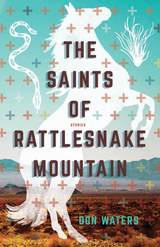 The Saints of Rattlesnake Mountain: Stories
Don Waters
University of Nevada Press, 2017 Master storyteller Don Waters returns to the desert in his third book set in the American Southwest. With the gothic sensibility of Flannery O’Connor and emotional delicacy of Raymond Carver, these nine contemporary stories deftly explore the lives of characters losing or clinging to a fleeting faith and struggling to find something meaningful to believe in beneath overpowering desert skies.
Soldiers, seekers, priests, prisoners, and surfers pursue their fate amid bizarre, sometimes overwhelming circumstances. In “La Luz de Jesús,” a gutless Los Angeles screenwriter, a believer in nothing but the god of Hollywood, must reorient after he encounters a group of penitents in New Mexico’s Sangre de Cristo Mountains. The decorated soldier in “Española” faces more chaos back home than he did during his tour in Iraq. And “The Saints of Rattlesnake Mountain” pairs a “trustee” prison inmate and a wild mustang horse, both wards of the state of Nevada, as they fumble toward a spiritual truth.
These stories capture the spirit of a region and its people. Once again Waters assembles an unconventional cast of characters, capturing their foibles and imperfections, and always rendering them with compassion as these modern-day martyrs and spiritually haunted survivors strive for some kind of redemption.
Ingenious, sometimes forbidding, often absurd, and altogether original, The Saints of Rattlesnake Mountain is a stirring tribute to the lives, loves, and hopes of the faithful and the dispossessed.
Saints of the Christianization Age of Central Europe: Tenth to Eleventh Centuries
Cristian Gaspar
Central European University Press, 2012 This volume is the first of two containing hagiographical narratives from medieval Central Europe. The lives of the saints in this volume, from the tenth to eleventh centuries, written not much later, are telling witnesses for the process of Christianization of Bohemia, Poland, Hungary and Dalmatia. Most of them became patrons of their region and highly venerated throughout the Middle Ages. The volume presents the first English translation of a legend of each of these saints with the most recent critical edition of the Latin original and prefaces discussing the textual tradition. In an appendix the extensive hagiographical literature of the saints is being critically surveyed.
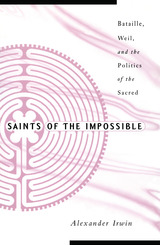 Saints Of The Impossible: Bataille, Weil, And The Politics Of The Sacred
Alexander Irwin
University of Minnesota Press, 2002 A surprising exploration of the relationship between these two twentieth-century thinkers The transgressive writing of Georges Bataille (1897-1962) and the rigorous ethical philosophy of social activist and Christian mystic Simone Weil (1909-1943) seem to belong to different worlds. Yet in the political ferment of 1930s Paris, Bataille and Weil were intellectual adversaries who exerted a powerful fascination on each other. Saints of the Impossible provides the first in-depth comparison of Bataille’s and Weil’s thought, showing how an exploration of their relationship reveals new facets of the achievements of two of the twentieth century’s leading intellectual figures, and raises far-reaching questions about literary practice, politics, and religion. Considering the seeming antithesis between Weil’s heroic political engagement and Bataille’s antipolitical aestheticism, Saints of the Impossible brings out the insufficiently recognized performative dimension of Weil’s politics, while revealing the political reach of Bataille’s mystical writings. As it opens a new perspective on both Weil and Bataille, the book also points to a new way of understanding the uses and abuses of sacred power and the performative in an era of philosophical disorientation, social chaos, and war.
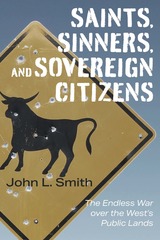 Saints, Sinners, and Sovereign Citizens: The Endless War over the West's Public Lands
John L. Smith
University of Nevada Press, 2021 Listed as one of the Reno News & Review's "New Books from Nevada Authors," December 29, 2021
The grazing rights battle between Nevada rancher Cliven Bundy and the federal government, resulting in a tense, armed standoff between Bundy’s supporters and federal law enforcement officers, garnered international media attention in 2014. Saints, Sinners, and Sovereign Citizens places the Bundy conflict into the larger context of the Sagebrush Rebellion and the long struggle over the use of federal public lands in the American West.
Author John L. Smith skillfully captures the drama of the Bundy legal tangle amid the current political climate. Although no shots were fired during the standoff itself, just weeks later self-proclaimed Bundy supporters murdered two Las Vegas police officers and a civilian. In Eastern Oregon, other Bundy supporters occupied the federal offices of the Malheur National Wildlife Refuge, and one of them died in a hail of bullets.
While examining the complex history of federal public land policies, Smith exposes both sides of this story. He shows that there are passionate true believers on opposite sides of the insurrection, along with government agents and politicians in Washington complicit in efforts to control public lands for their wealthy allies and campaign contributors. With the promise of billions of dollars in natural resource profits and vast tracts of environmentally sensitive lands hanging in the balance, the West’s latest range war is the most important in the nation’s history. This masterful exposé raises serious questions about the fate of America’s public lands and the vehement arguments that are framing the debate from all sides.
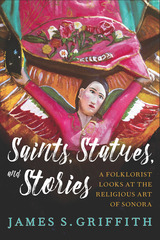 Saints, Statues, and Stories: A Folklorist Looks at the Religious Art of Sonora
James S. Griffith
University of Arizona Press, 2019 . . . we move to the town of Aconchi on the Río Sonora, where the mission church once contained a life-sized crucifix with a black corpus, known both as Nuestro Señor de Esquipulas . . . and El Cristo Negro de Aconchi . . .
So describes well-known and beloved folklorist James S. Griffith as he takes us back through the decades to a town in northern Sonora where a statue is saved—and in so doing, a community is saved as well.
In Saints, Statues, and Stories Griffith shares stories of nearly sixty years of traveling through Sonora. As we have come to expect through these journeys, “Big Jim”—as he is affectionately known by many—offers nothing less than the living traditions of Catholic communities. Themes of saints as agents of protection or community action are common throughout Sonora: a saint coming out of the church to protect the village, a statue having a say in where it resides and paying social calls to other communities, or a beloved image rescued from destruction and then revered on a private altar. A patron saint saves a village from outside attackers in one story—a story that has at least ten parallels in Sonora’s former mission communities. Details may vary, but the general narrative remains the same: when hostile nonbelievers attack the village, the patron saint of the church foils them.
Griffith uncovers the meanings behind the devotional uses of religious art from a variety of perspectives—from artist to audience, preservationist to community member. The religious artworks transcend art objects, Griffith believes, and function as ways of communicating between this world and the next. Setting the stage with a brief geography, Griffith introduces us to roadside shrines, artists, fiestas, saints, and miracles. Full-color images add to the pleasure of this delightful journey through the churches and towns of Sonora.
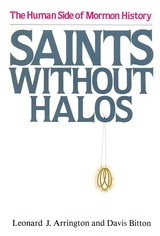 Saints Without Halos: The Human Side of Mormon History
Leonard J Arrington
Signature Books, 1981 Unlike most Mormon histories, Saints without Halos is a treatment of the human, rather than institutional side of Mormon history. Through the fascinating experiences of seventeen Latter-day Saints, Leonard J. Arrington and Davis Bitton sketch Mormonism from its earliest beginnings to modern times. These are Saints presented not as objects of veneration, but as "human beings who, like the rest of us, struggle to be worthy of the title Latter-day Saint." Two were apostles. One was an enthusiastic supporter and friend of Joseph Smith, who eventually left the main body of the Church to lead his own band to Texas. The other was a link in the chain of a renowned Mormon family whose positions in the leading councils of the Church span virtually the entire history of Mormonism. The other fifteen individuals, except for one colorful non-Mormon advocate, are "ordinary" Latter-day Saints-faithful members who helped realize the vision of their prophetic leaders: a personal friend of Joseph Smith, missionaries and converts, a plural wife, an Indian woman, a widowed immigrant, pioneers and philosophers, bishops and blacksmiths, and even a historian. In this book, the authors of The Mormon Experience draw on their vast knowledge of Mormon diaries and other first-hand accounts to disclose the rich diversity of Mormonism as well as its unity of purpose.
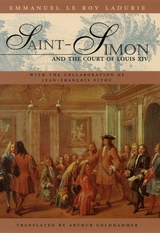 Saint-Simon and the Court of Louis XIV
Emmanuel Le Roy Ladurie
University of Chicago Press, 2001 The Duke of Saint-Simon (1675—1755) was by all accounts, including his own, a sensitive, self-obsessed, ill-tempered man. A courtier and phenomenal chronicler of court life under Louis XIV, he produced the monumental work Memoirs, running to thousands of pages, in which the intrigues, personalities, activities, and gossip of life at Versailles are recorded in acerbic detail. Drawing heavily on these Memoirs, renowned historian Emmanuel Le Roy Ladurie offers a wonderful portrait of life under Louis XIV, focusing on the fundamental issues of hierarchy and rank in this tightly controlled universe.
Saint-Simon and the Court of Louis XIV, expertly translated by Arthur Goldhammer, is a historical essay about court life, built with the wide range of tools Ladurie so expertly employs: ethnography, history, literary criticism, and historiography. Ladurie recreates a world in which man is most definitely born unequal, a world circumscribed entirely by purity of bloodline, which nonetheless directly preceded the birth of democratic thought and political action. Locked into a virtual caste system, courtiers formed within their ranks cabals, factions, and groups bonded by common ideological principles in order to survive the political order of the court. Thus Saint-Simon and the Court of Louis XIV is not only about Saint-Simon's place in this constellation but also the constellation itself and how understanding it forces us to a reevaluation of political life in France during the Old Regime.
Including a biographical sketch of Saint-Simon and more than 30 illustrations of court life and its members, Saint-Simon and the Court of Louis XIV will delight those interested in French history as well as instruct those interested in political history.
Saipan: The War Diary of John Ciardi
John Ciardi
University of Arkansas Press, 1988 Ciardi records his days and nights as a gunner on a B-29 in the South Pacific during four of the last terrible months of World War II.
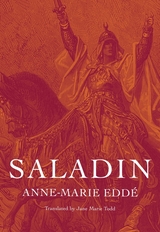 Saladin
Anne-Marie Eddé
Harvard University Press, 2011 Working simultaneously on two levels, Saladin represents the best kind of biography—a portrait of a man who is said to have made an age, and the most complete account we have to date of an age that made the man. Unlike biographies that focus on Saladin’s military exploits, especially the recapturing of Jerusalem from European Crusaders in 1187, Eddé’s narrative draws on an incredible array of contemporary sources to develop the fullest picture possible of a ruler shaped profoundly by the complex Arabian political environment in which he rose to prominence. The result is a unique view of the Crusades from an Arab perspective.
Saladin became a legend in his own time, venerated by friend and foe alike as a paragon of justice, chivalry, and generosity. Arab politicians ever since have sought to claim his mantle as a justification for their own exercise of power. But Saladin's world-historical status as the ideal Muslim ruler owes its longevity to a tacit agreement among contemporaries and later chroniclers about the set of virtues Saladin possessed—virtues that can now be tested against a rich tapestry of historical research. This tension between the mythical image of Saladin, layered over centuries and deployed in service of specific moral and political objectives, and the verifiable facts of his life available to a judicious modern historian is what sustains Anne-Marie Eddé's erudite biography, published to acclaim in France in 2008 and offered here in smooth, readable English translation.
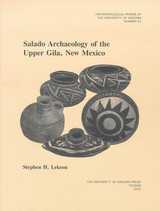 Salado Archaeology of the Upper Gila, New Mexico
Stephen H. Lekson
University of Arizona Press, 2002 Salado is an enigma of the past. One of the most spectacular cultures of the ancient Southwest, its brilliant polychrome pottery has been subjected to varied interpretations, from religious cult to artistic horizon. Stephen Lekson now uses data from two Salado sites—a large pueblo and a small farmstead—to clarify long-standing misconceptions about this culture. By combining analysis of the large whole-vessel collection at Dutch Ruin with the scientific excavation of Villareal II, a picture of Salado emerges that enables Lekson to evaluate previous competing theories and propose that Salado represents a major fourteenth-century migration of Pueblo peoples into the Chihuahuan deserts. Lekson demonstrates that late, short-lived Salado farmsteads—difficult to identify archaeologically in areas with larger Mimbres concentrations—coexisted with larger Salado towns, and he argues that Salado in the Upper Gila region appears as a substantial in-migration of Mogollon Uplands populations into what was a vacant river valley. Throughout the fourteenth century, Salado communities in the Upper Gila were integrated into the larger Salado horizon and were closely connected to Casas Grandes, as indicated by the export of serpentine to the city of Paquimé and the occurrence of Casas Grandes pottery at Upper Gila Salado sites. The book includes illustrations of 71 vessels from Dutch Ruin plus a full-color frontispiece. Through analysis of these two sites, Lekson has taken a large step toward clearing up the mystery of Salado. His work will be welcomed by all who study the movements of peoples in the prehispanic Southwest.
Salafism and the State: Islamic Activism and National Identity in Contemporary Indonesia
Chris Chaplin
National University of Singapore Press, 2021 Focusing on the nexus between religion, the nation, citizenship and political identity, this first comprehensive ethnographic study of the Salafi Islamic movement in Indonesia explores the role of Islamic activism amongst Indonesian youth and how it has transformed the country’s religious and political discourse.
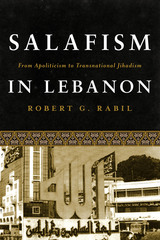 Salafism in Lebanon: From Apoliticism to Transnational Jihadism
Robert G. Rabil
Georgetown University Press, 2014 Salafism, comprised of fundamentalist Islamic movements whose adherents consider themselves the only “saved” sect of Islam, has been little studied, remains shrouded in misconceptions, and has provoked new interest as Salafists have recently staked a claim to power in some Arab states while spearheading battles against “infidel” Arab regimes during recent rebellions in the Arab world. Robert G. Rabil examines the emergence and development of Salafism into a prominent religious movement in Lebanon, including the ideological and sociopolitical foundation that led to the three different schools of Salafism in Lebanon: quietist Salafists, Haraki (active) Salafists; and Salafi Jihadists. Emphasizing their manhaj (methodology) toward politics, the author surveys Salafists’ ideological transformation from opponents to supporters of political engagement. Their antagonism to Hezbollah, which they denounce as the party of Satan, has risen exponentially following the party’s seizure of Beirut in 2008 and support of the tyrannical Syrian regime. Salafism in Lebanon also demonstrates how activists and jihadi Salafists, in response to the political weakness of Sunni leadership, have threatened regional and international security by endorsing violence and jihad. Drawing on field research trips, personal interviews, and Arabic primary sources, the book explores the relationship between the ideologies of the various schools of Salafism and their praxis in relation to Lebanese politics. The book should interest students and scholars of Islamic movements, international affairs, politics and religion, and radical groups and terrorism.
The Salamander and Other Gothic Tales
Vladimir Odoevsky
Northwestern University Press, 1992 The Salamander and Other Gothic Tales contains eight stories by Vladimir Odoevsky (1804-69). These include The Salamander, The Cosmorama, and The Sylph, Odoevsky's three main metaphysical tales. The collection as a whole represents some of the best of Russian Romantic fiction from the first half of the nineteenth century. This is the first English edition of Odoevsky's work to be published since 1965 and six of the tales are here translated for the first time.
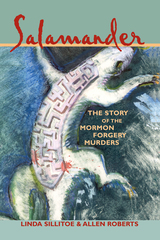 Salamander: The Story of the Mormon Forgery Murders
Linda Sillitoe
Signature Books, 2006 Drawing from thousands of pages of police reports, court documents, interviews, letters, and diaries, Sillitoe’s and Roberts’s narrative cuts through the complexities of this famous crime investigation to deliver a gripping, Capote-esque tale. They embrace the details but lay them out systematically as seen through the eyes of the detectives, victims, and the perpetrator. The darkest secrets unravel gradually—allowing the reader fleeting glimpses of the infamous white salamander as it ducks in and out of its fabricator’s head. What was the “salamander letter” and why were so many people determined to possess—and to conceal—it? Why was this one of the most unusual cases in American forensic history? A skilled con artist by anyone’s assessment, Mark Hofmann eluded exposure by police and document authenticators—the FBI, Library of Congress, the LDS historical department, and polygraph experts—until George Throckmorton discovered the telltale microscopic alligatoring that was characteristic of the forgeries. What ensued was a suspense-ridden cat-and-mouse game between seasoned prosecutors and a clever, homicidal criminal. In the end, this story only verifies that some facts are indeed stranger than fiction.
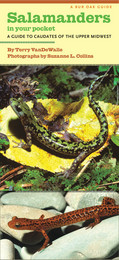 Salamanders in Your Pocket: A Guide to Caudates of the Upper Midwest
Terry L. VanDeWalle and Suzanne L. Collins
University of Iowa Press, 2013 Finding a salamander in the woodlands rates as one of the most enjoyable surprises of an early morning hike. Active mainly at night, these secretive, shiny, lizardlike amphibians often glow like jewels when found under the logs or rocks that many prefer. This colorful addition to Iowa’s popular series of laminated guides—the twenty-fifth in the series—will inform both amateur and professional naturalists about twenty-five species of salamanders found in the Upper Midwest states of Minnesota, Wisconsin, Illinois, Indiana, Michigan, Ohio, South Dakota, North Dakota, Kansas, Nebraska, Iowa, and Missouri.
Common mudpuppies and lesser sirens spend their entire lives in water, never losing the gills that they developed as larvae; the lungless four-toed salamander distracts predators by detaching its tail; the eastern newt discourages predators by secreting poisonous chemicals from its skin; the flat-bodied hellbender, which can reach twenty-nine inches in length, breathes by absorbing oxygen through the folds of its skin. These, plus the well-named slimy, zigzag, tiger, and other salamanders in this guide, are now threatened by loss of habitat, pollution, and a deadly fungus.
Terry VanDeWalle provides a complete description of each species as well as distinguishing characteristics for twenty-one subspecies, from the striking orange and yellow spots of the spotted salamander to the lichenlike patches of the green salamander to the prominent rounded head of the mole salamander. He also includes information about the salamanders’ range and habitat preferences, from twilight zones of limestone caves and crevices to seepages and spring-fed bogs. His comparisons of similar species and his comprehensive key are most helpful for identifying individuals in the field. Superb photographs by Suzanne Collins make this new guide the perfect companion for outdoor expeditions in all kinds of moist environments.
Salat
Dujie Tahat
Tupelo Press, 2020 Dujie Tahat’s Salat is a book of poems written in a compelling new form of the poet’s own invention that participate, fully — they praise, weep, spit, beg, laugh, choke, sing. In this murderous age it is increasingly unconscionable to be inert, in one’s living or in one’s art. Tahat tells us: “There’s a river in heaven, and I am the star that belongs to it.” Salat is boisterously, resoundingly alive.
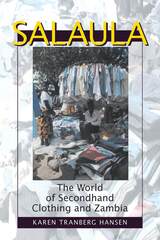 Salaula: The World of Secondhand Clothing and Zambia
Karen Tranberg Hansen
University of Chicago Press, 2000 When we donate our unwanted clothes to charity, we rarely think about what will happen to them: who will sort and sell them, and finally, who will revive and wear them. In this fascinating look at the multibillion dollar secondhand clothing business, Karen Tranberg Hansen takes us around the world from the West, where clothing is donated, through the salvage houses in North America and Europe, where it is sorted and compressed, to Africa, in this case, Zambia. There it enters the dynamic world of Salaula, a Bemba term that means "to rummage through a pile."
Essential for the African economy, the secondhand clothing business is wildly popular, to the point of threatening the indigenous textile industry. But, Hansen shows, wearing secondhand clothes is about much more than imitating Western styles. It is about taking a garment and altering it to something entirely local, something that adheres to current cultural norms of etiquette. By unraveling how these garments becomes entangled in the economic, political, and cultural processes of contemporary Zambia, Hansen also raises provocative questions about environmentalism, charity, recycling, and thrift.
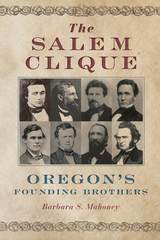 The Salem Clique: Oregon's Founding Brothers
Barbara S. Mahoney
Oregon State University Press, 2017 During the decade of the 1850s, the Oregon Territory progressed toward statehood in an atmosphere of intense political passion and conflict. Editors of rival newspapers blamed a group of young men whom they named the “Salem Clique,” along with the Oregon Statesman newspaper that they controlled, for the bitter party struggles of the time. They accused the so-called Clique of dictatorship and corruption. They charged it with the intention of imposing slavery on the Territory. The Clique, they maintained, even conspired to establish a government separate from the United States, conceivably a “bigamous Mormon republic.”
While not in agreement with some of the more extreme contemporary accusations against the Clique, many historians have concluded that its members were vicious men who were able, because of their command of the Democratic party, to impose their hegemony on the Oregon Territory’s inhabitants. Other scholars have seen them as merely another instance of the contentious politics of the period.
Although the Salem Clique has been given considerable prominence in nearly every account of Oregon’s Territorial period, there has not been a detailed study of its role until now. What sort of people were these men? What was their impact on the issues, events, and movements of the period? What role did they play in the years after Oregon became a state? In The Salem Clique, Historian Barbara Mahoney sets out to answer these and many other questions in this comprehensive and deeply researched history.
Salem Is My Dwelling Place: Life Of Nathaniel Hawthorne
Edwin Haviland Miller
University of Iowa Press, 1992 In one of his public disavowals of autobiography, Nathaniel Hawthorne informed his readers that external traits "hide the man, instead of displaying him," directing them instead to "look through the whole range of his fictitious characters, good and evil, in order to detect any of his essential traits." In this multidimensional biography of America's first great storyteller, Edwin Haviland Miller answers Hawthorne's challenge and reveals the inner landscapes of this modest, magnetic man who hid himself in his fiction. Thomas Woodson hails Miller's account as "the best biography of this most elusive of American authors."
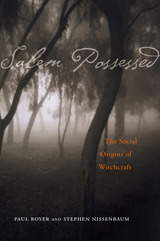 Salem Possessed: The Social Origins of Witchcraft
Paul Boyer and Stephen Nissenbaum
Harvard University Press, 1974 Tormented girls writhing in agony, stern judges meting out harsh verdicts, nineteen bodies swinging on Gallows Hill.
The stark immediacy of what happened in 1692 has obscured the complex web of human passion, individual and organized, which had been growing for more than a generation before the witch trials. Salem Possessed explores the lives of the men and women who helped spin that web and who in the end found themselves entangled in it.
From rich and varied sources—many previously neglected or unknown—Paul Boyer and Stephen Nissenbaum give us a picture of the events of 1692 more intricate and more fascinating than any other in the already massive literature on Salem. “Salem Possessed,” wrote Robin Briggs in The Times Literary Supplement, “reinterprets a world-famous episode so completely and convincingly that virtually all the previous treatments can be consigned to the historical lumber-room.”
Not simply a dramatic and isolated event, the Salem outbreak has wider implications for our understanding of developments central to the American experience: the breakup of Puritanism, the pressures of land and population in New England towns, the problems besetting farmer and householder, the shifting role of the church, and the powerful impact of commercial capitalism.
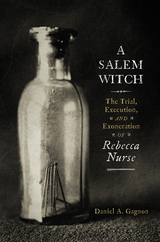 A Salem Witch: The Trial, Execution, and Exoneration of Rebecca Nurse
Daniel A. Gagnon
Westholme Publishing, 2023 In the winter of 1692 something terrible and frightening began in Salem Village. It started with several villagers having strange fits, screaming, and unnaturally contorting themselves, and ended with almost two hundred people in jail, and at least twenty-five dead. Witchcraft accusations—claims that some inhabitants had forsaken God to become servants of the Devil—spread from Salem Village across Massachusetts, ensnaring innocent people from all strata of society under a burden of assumed guilt. One of the most significant accusations, and most unlikely, was against a seventy-one-year-old grandmother, Rebecca Nurse.
The accusations against Nurse, a well-respected member in the community, seemed unbelievable. Unflinchingly, this ailing elderly woman insisted on her innocence and refused to falsely confess. Supported by many in Salem, Nurse’s family and neighbors challenged her accusers in court and prepared a thorough defense for her, yet nothing could surmount the fear of witchcraft, and she was sentenced to death. Nurse, seen as a martyr for the truth, later became the first person accused of witchcraft to be memorialized in North America.
In A Salem Witch: The Trial, Execution, and Exoneration of Rebecca Nurse, the first full account of Nurse’s life, Daniel A. Gagnon vividly recreates seventeenth-century Salem, and in the process challenges previous interpretations of Nurse’s life and the 1692 witch hunt in general. Through primary source research, he reveals how the Nurse family’s role in several disputes prior to the witch hunt was different than previously thought, as well as how Nurse’s case helps answer the important question of whether the accusations of witchcraft were caused by mental illness or malicious intent. A Salem Witch reveals a remarkable woman whose legacy has transformed how the witch hunt has been remembered and memorialized.
 The Salem World of Nathaniel Hawthorne
Margaret B. Moore
University of Missouri Press, 2001 Although most writers on Nathaniel Hawthorne touch on the importance of Salem, Massachusetts, to his life and career, no detailed study has been published on the powerful heritage bequeathed to him by his ancestors and present to him during his years in that town. In The Salem World of Nathaniel Hawthorne, Margaret B. Moore thoroughly investigates Hawthorne's family, his education before college (about which almost nothing has been known), and Salem's religious and political influences on him. She details what Salem had to offer Hawthorne in the way of entertainment and stimulation, discusses his friends and acquaintances, and examines the significant role of women in his life—particularly Mary Crowninshield Silsbee and Sophia Peabody. Nathaniel Hawthorne felt a strong attachment to Salem. No matter what he wrote about the town, it was the locale for many of his stories, sketches, a novel, and a fragmentary novel. Salem history haunted him, and Salem people fascinated him. And Salem seems to have a perennial fascination for readers, not just for Hawthorne scholars. New information from primary sources, including letters (many unpublished), diaries, and contemporary newspapers, adds much not previously known about Salem in the early nineteenth century. Moore has found new sources in various manuscript collections, such as the privately owned Felt-White Collection and the Richards and Ashburner Papers in the National Library in Scotland. She also uses extensively the many manuscript collections at the Peabody Essex Museum. By tracing the effect of Salem on Hawthorne's writing, The Salem World of Nathaniel Hawthorne makes clear that Hawthorne not only was aware of his "own dear native place" but also drew upon it consciously and subconsciously in his work. This book contributes to a better understanding of Hawthorne as man and writer and of Salem's vital part in his life and work.
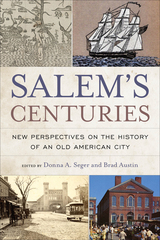 Salem's Centuries: New Perspectives on the History of an Old American City
Edited by Donna A. Seger and Brad Austin
Temple University Press, 2026 Salem, MA is best known today for its infamous witch trials in 1692, yet there is much more to this small city. An important trading center since its founding in 1626, Salem was also the scene of dynamic social and material changes in the twentieth century. Salem’s Centuries develops a more inclusive and comprehensive historical framework and expands upon the city’s signature eras of witch trials and maritime ascendancy.
In advance of the city’s quadricentennial, the editors and contributors highlight the depth and diversity of Salem’s history, including stories of indigenous peoples, early settlers, African Americans, and immigrants, spanning from the American and industrial revolutions to World War II and the present. Chronologically arranged by century, chapters examine how Salem’s history has been lost or distorted in its public presentations over time.
Salem’s Centuries is a fresh look at an old American city. And yes, it includes the accused witches.
Contributors: Kimberly S. Alexander, Emerson W. Baker, Aviva Chomsky, Andrew Darien, Elizabeth Duclos-Orsello, Theresa Giard, Marilyn Hayward, Bethany Jay, Michele Louro, Elizabeth McKeigue, Robert W. McMicken, Dane A. Morrison, Maria Pride, J.D. Scrimgeour, Margo Shea, Hans Schwartz, Brian Valimont, Maryann Zujewski, and the editors
In the series History and the Public
 Sales and Celebrations: Retailing and Regional Identity in Western New York State, 1920–1940
Sarah Elvins
Ohio University Press, 2004 Between the two world wars, the retail world experienced tremendous changes. New forms of competition, expanded networks of communication and transportation, and the proliferation of manufactured goods posed challenges to department store and small shopkeeper alike. In western New York, and in Buffalo and Rochester in particular, retailers were a crucial part of urban life, acting as cultural brokers and civic leaders. They were also cultivators of area pride. Even as they adopted the latest merchandising techniques or stocked the newest items, merchants emphasized their local roots and their ability to put a local spin on national trends and innovations. Regional identity became a powerful selling tool not only during the prosperity of the 1920s but also through the economic crisis of the Great Depression. Sales and Celebrations explains how local traditions and institutions affected the evolution of American consumer culture. It expands our understanding of American consumerism, demonstrating that local particularities and loyalties could often coexist with, and occasionally challenge, the spread of mass consumption. In her award-winning study, Professor Sarah Elvins provides new insight into the relationship between America’s largest metropolises and its smaller centers. Retailers in Buffalo and Rochester did not simply imitate the practices of their counterparts in Manhattan and Chicago; they highlighted their unique ability to serve the wants and needs of their particular markets. By drawing attention to this persistent power of the local, Sales and Celebrations illuminates a neglected aspect of the story of American culture in the interwar period.
Salisbury
Eric Midwinter
Haus Publishing, 2006 Biography of the first Prime Minister of the 20th Century during the height of the British Empire
 Salleyland: Wildlife Adventures in Swamps, Sandhills, and Forests
Whit Gibbons
University of Alabama Press, 2023 Adventures and misadventures exploring nature on a patch of “worthless” abandoned farmland
Winner of the South Carolina Outdoor Press Association's excellence in craft for the best outdoor book award.
Following his retirement from academic life, renowned naturalist and writer Whit Gibbons and his family purchased a tract of abandoned farmland where the South Carolina piedmont meets the coastal plain. Described as backcountry scrubland, it was originally envisioned as a family retreat, but soon the property became Gibbons’s outdoor learning laboratory where he was often aided by his four grandchildren, along with a host of enthusiastic visitors.
Inspired by nature’s power to excite, educate, and provide a sense of place in the world, Gibbons invites readers to learn about their surrounding environments by describing his latest adventures and sharing expert advice for exploring the world in which we live. Peppered throughout with colorful personal anecdotes and told with Gibbons’s affable style and wit, Salleyland: Wildlife Adventures in Swamps, Sandhills, and Forests is more than a personal memoir or a record of place. Rather, it is an exercise in learning about a patch of nature, thereby reminding us to open our eyes to the complexity and wonder of the natural world.
Starting with the simple advice of following your own curiosity, Gibbons discusses different opportunities and methods for exploring one’s surroundings, introduces key ecological concepts, offers advice for cultivating habitat, explains the value of and different approaches to keeping lists and field journals, and celebrates the advances that cell phone photography and wildlife cameras offer naturalists of all levels. With Gibbons’s guidance and encouragement, readers will learn to embrace their inner scientists, equipped with the knowledge and encouragement to venture beyond their own front doors, ready to discover the secrets of their habitat, regardless of where they live.
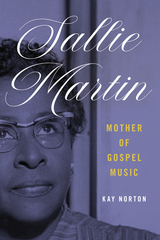 Sallie Martin, Mother of Gospel Music
Kay Norton
University of Illinois Press, 2026 Sallie Martin combined fame as a performer with a far-sighted business acumen that brought Black gospel music to a national audience and laid the foundation for the industry that followed. Kay Norton’s biography follows Martin’s parallel careers from her early plans to grow the genre through her celebrity in the 1960s–1970s and eventful retirement. “Same old Sallie Martin, same old Jesus,” she once told audiences, a reflection of both her musical style and unapologetic approach to life. Cofounder of the National Conference of Gospel Choirs and Choruses, Martin also co-established the pioneering Black music publisher Martin and Morris Music Studio. Her group the Sallie Martin Singers took Chicago gospel to all points of the compass and Martin mentored and employed dozens of aspiring vocalists and instrumentalists. Norton looks at Martin’s important relationships and the challenges she faced, while placing her accomplishments and legacy on the arc of gospel music history. In-depth and powerful, Sallie Martin, Mother of Gospel Music tells the story of one woman’s role in shaping the music and business of Black gospel.
Sally in Three Worlds: An Indian Captive in the House of Brigham Young
Virginia Kerns
University of Utah Press, 2021 In this remarkable and deeply felt book, Virginia Kerns uncovers the singular and forgotten life of a young Indian woman who was captured in 1847 in what was then Mexican territory. Sold to a settler, a son-in-law of Brigham Young, the woman spent the next thirty years as a servant to Young’s family. Sally, as they called her, lived in the shadows, largely unseen. She was later remembered as a “wild” woman made “tame” who happily shed her past to enter a new and better life in civilization. Drawing from a broad range of primary sources, Kerns retrieves Sally from obscurity and reconstructs her complex life before, during, and after captivity. This true story from the American past resonates deeply in the current moment, attentive as it is to killing epidemics and racial injustices. In telling Sally’s story, Kerns presents a new narrative of the American West.
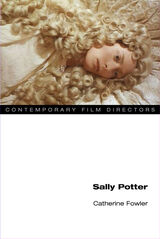 Sally Potter
Catherine Fowler
University of Illinois Press, 2008 This survey of Sally Potter’s work explores her cinematic development from the feminist reworking of La Bohème in Thriller to the provocative contemplation of romantic relationships after 9/11 in Yes. Catherine Fowler traces a clear trajectory of developing themes and preoccupations and shows how Potter uses song, dance, performance, and poetry to expand our experience of cinema beyond the audiovisual. Potter has relentlessly struggled against predictability and safe options. Again and again, her works grapple with the complexities of being a woman in charge. Instead of the quest to find a romantic partner that drives mainstream cinema, Potter’s films feature characters seeking answers to questions about their sexual, gendered, social, cultural, and ethnic identities. They find answers by retelling stories, investigating mysteries, and traveling and interacting with people. At the heart of Potter’s work is a concern with the ways narrative circumscribes women's ability to act, speak, look, desire, and think for themselves. Her first two films, Thriller and The Gold Diggers, largely deconstruct found stories, clichés, and images. By contrast, later films like Orlando and The Tango Lesson create new and original narratives that place female acts, voices, looks, desires, and thoughts at their center. Fowler’s analysis is supplemented by a detailed filmography, bibliography, and an extensive interview with the director.
 Sally Rooney: Perspectives and Approaches
Ellen Scheible
Bucknell University Press, 2026 Bestselling Irish novelist Sally Rooney has emerged as the defining voice of a generation, a cultural phenomenon whose spare, intelligent prose and sharp social insight have reshaped contemporary fiction and sparked a global conversation about intimacy, politics, and the millennial condition.This new collection brings together contributors from a wide range of disciplines to offer fresh critical readings of Rooney’s influential novels, alongside adaptable strategies for teaching her work in today’s undergraduate and graduate classrooms. The essays situate Rooney within literary traditions from Romantic poetry to the Bildungsroman and the contemporary campus novel, while engaging with contemporary topics such as gender politics, late capitalism, and media adaptation. Providing accessible yet rigorous frameworks for exploring Rooney’s fiction, this volume affirms her significance not only within contemporary literary studies, but also as a cultural force whose work reaffirms the relevance of the humanities in the twenty-first-century classroom. Published by Bucknell University Press. Distributed worldwide by Rutgers University Press.
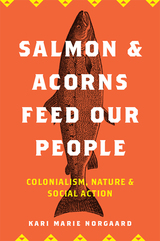 Salmon and Acorns Feed Our People: Colonialism, Nature, and Social Action
Kari Marie Norgaard
Rutgers University Press, 2019 Finalist for the 2020 C. Wright Mills Award from the Society for the Study of Social Problems
Since time before memory, large numbers of salmon have made their way up and down the Klamath River. Indigenous management enabled the ecological abundance that formed the basis of capitalist wealth across North America. These activities on the landscape continue today, although they are often the site of intense political struggle. Not only has the magnitude of Native American genocide been of remarkable little sociological focus, the fact that this genocide has been coupled with a reorganization of the natural world represents a substantial theoretical void. Whereas much attention has (rightfully) focused on the structuring of capitalism, racism and patriarchy, few sociologists have attended to the ongoing process of North American colonialism. Salmon and Acorns Feed Our People draws upon nearly two decades of examples and insight from Karuk experiences on the Klamath River to illustrate how the ecological dynamics of settler-colonialism are essential for theorizing gender, race and social power today.
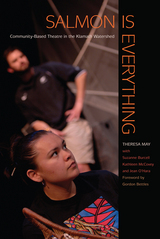 Salmon Is Everything: Community-Based Theatre in the Klamath Watershed
Theresa May with Susanne Burcell, Kathleen McCovey, and Jean O'Hara
Oregon State University Press, 2014 After a devastating fish kill on the Klamath River, tribal members and theatre artist Theresa May developed a play to give voice to the central spiritual and cultural role of salmon in tribal life. Salmon Is Everything presents the script of that play, along with essays by artists and collaborators that illuminate the process of creating and performing theatre on Native and environmental issues.
Salmon Is Everything simultaneously illuminates the logistics of a crisis in the third largest watershed in the Pacific Northwest—the premature death of more than 30,000 salmon on the Lower Klamath River in 2002—and documents what happened when one community decided to use art to amplify the experiences of its members. The fish kill had unprecedented impact throughout the watershed, and for many tribal communities it signified an ongoing loss of traditional cultural practices. But in the political and ecological upheaval that followed, the role of salmon in tribal life went largely unacknowledged, which inspired the collaboration between May and members of the Yurok, Hoopa Valley, and Karuk tribes, as well as farmers, ranchers, and others invested in the Klamath watershed.
Salmon is Everything will appeal to readers interested in the environmental and cultural history of the Pacific Northwest and the ecological and civil challenges its communities face. For artists and activists, it’s a useful case study. Salmon is Everything offers a unique interdisciplinary resource for high school and college level courses in environmental studies, Native American studies, and theatre arts education.
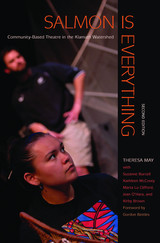 Salmon is Everything: Community-Based Theatre in the Klamath Watershed
Theresa May with Susanne Burcell, Kathleen McCovey, and Jean O'Hara
Oregon State University Press, 2018 After a devastating fish kill on the Klamath River, tribal members and theatre artist Theresa May developed a play to give voice to the central spiritual and cultural role of salmon in tribal life. Salmon Is Everything presents the script of that play, along with essays by artists and collaborators that illuminate the process of creating and performing theatre on Native and environmental issues.
Salmon Is Everything simultaneously illuminates the logistics of a crisis in the third largest watershed in the Pacific Northwest—the premature death of more than 30,000 salmon on the Lower Klamath River in 2002—and documents what happened when one community decided to use art to amplify the experiences of its members. The fish kill had unprecedented impact throughout the watershed, and for many tribal communities it signified an ongoing loss of traditional cultural practices. But in the political and ecological upheaval that followed, the role of salmon in tribal life went largely unacknowledged, which inspired the collaboration between May and members of the Yurok, Hoopa Valley, and Karuk tribes, as well as farmers, ranchers, and others invested in the Klamath watershed.
Salmon is Everything will appeal to readers interested in the environmental and cultural history of the Pacific Northwest and the ecological and civil challenges its communities face. For artists and activists, it’s a useful case study. Salmon is Everything offers a unique interdisciplinary resource for high school and college level courses in environmental studies, Native American studies, and theatre arts education.
New materials in this second edition include additional essays by Native faculty and actors, an updated introduction by the author, minor textual corrections throughout, and a new online resource guide.
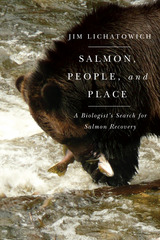 Salmon, People, and Place: A Biologist's Search for Salmon Recovery
Jim Lichatowich
Oregon State University Press, 2013 Each year wild Pacific salmon leave their oceanic feeding grounds and swim hundreds of miles back to their home rivers. The salmon’s annual return is a place-defining event in the Pacific Northwest, with immense ecological, economic, and social significance. However, despite massive spending, efforts to significantly alter the endangered status of salmon have failed.
In Salmon, People, and Place, acclaimed fisheries biologist Jim Lichatowich eloquently exposes the misconceptions underlying salmon management and recovery programs that have fueled the catastrophic decline in Northwest salmon populations for more than a century. These programs will continue to fail, he suggests, so long as they regard salmon as products and ignore their essential relationship with their habitat.
But Lichatowich offers hope. In Salmon, People, and Place he presents a concrete plan for salmon recovery, one based on the myriad lessons learned from past mistakes. What is needed to successfully restore salmon, Lichatowich states, is an acute commitment to healing the relationships among salmon, people, and place.
A significant contribution to the literature on Pacific salmon, Salmon, People, and Place: A Biologist’s Search for Salmon Recovery is an essential read for anyone concerned about the fate of this Pacific Northwest icon.
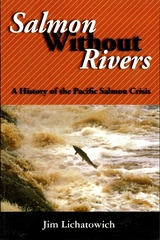 Salmon Without Rivers: A History Of The Pacific Salmon Crisis
Jim Lichatowich
Island Press, 1999 "Fundamentally, the salmon's decline has been the consequence of a vision based on flawed assumptions and unchallenged myths.... We assumed we could control the biological productivity of salmon and 'improve' upon natural processes that we didn't even try to understand. We assumed we could have salmon without rivers." --from the introduction From a mountain top where an eagle carries a salmon carcass to feed its young to the distant oceanic waters of the California current and the Alaskan Gyre, salmon have penetrated the Northwest to an extent unmatched by any other animal. Since the turn of the twentieth century, the natural productivity of salmon in Oregon, Washington, California, and Idaho has declined by eighty percent. The decline of Pacific salmon to the brink of extinction is a clear sign of serious problems in the region. In Salmon Without Rivers, fisheries biologist Jim Lichatowich offers an eye-opening look at the roots and evolution of the salmon crisis in the Pacific Northwest. He describes the multitude of factors over the past century and a half that have led to the salmon's decline, and examines in depth the abject failure of restoration efforts that have focused almost exclusively on hatcheries to return salmon stocks to healthy levels without addressing the underlying causes of the decline. The book: - describes the evolutionary history of the salmon along with the geologic history of the Pacific Northwest over the past 40 million years
- considers the indigenous cultures of the region, and the emergence of salmon-based economies that survived for thousands of years
- examines the rapid transformation of the region following the arrival of Europeans
- presents the history of efforts to protect and restore the salmon
- offers a critical assessment of why restoration efforts have failed
Throughout, Lichatowich argues that the dominant worldview of our society -- a worldview that denies connections between humans and the natural world -- has created the conflict and controversy that characterize the recent history of salmon; unless that worldview is challenged and changed, there is little hope for recovery. Salmon Without Rivers exposes the myths that have guided recent human-salmon interactions. It clearly explains the difficult choices facing the citizens of the region, and provides unique insight into one of the most tragic chapters in our nation's environmental history.
Salms
Aaron McCollough
University of Iowa Press, 2024 Salms navigates the ancient, vexed lyric landscape of the biblical psalm, where gratitude is arrived at through complaint and yearning is smuggled in alongside tribute. Formally restless and diverse, Aaron McCollough’s style moves from flinty Anglo-Norman terseness through folktale to long-lined, journal-like confessional. The poems’ sounds and forms bind to the divine histories of the Western lyric tradition at points of fragility and potential disintegration.
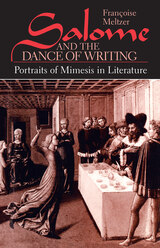 Salome and the Dance of Writing: Portraits of Mimesis in Literature
Françoise Meltzer
University of Chicago Press, 1987 How does literature imagine its own powers of representation? Françoise Meltzer attempts to answer this question by looking at how the portrait—the painted portrait, framed—appears in various literary texts. Alien to the verbal system of the text yet mimetic of the gesture of writing, the textual portrait becomes a telling measure of literature's views on itself, on the politics of representation, and on the power of writing.
Meltzer's readings of textual portraits—in the Gospel writers and Huysmans, Virgil and Stendhal, the Old Testament and Apuleius, Hawthorne and Poe, Kafka and Rousseau, Walter Scott and Mme de Lafayette—reveal an interplay of control and subversion: writing attempts to veil the visual and to erase the sensual in favor of "meaning," while portraiture, with its claims to bringing the natural object to "life," resists and eludes such control. Meltzer shows how this tension is indicative of a politics of repression and subversion intrinsic to the very act of representation. Throughout, she raises and illuminates fascinating issues: about the relation of flattery to caricature, the nature of the uncanny, the relation of representation to memory and history, the narcissistic character of representation, and the interdependency of representation and power.
Writing, thinking, speaking, dreaming, acting—the extent to which these are all controlled by representation must, Meltzer concludes, become "consciously unconscious." In the textual portrait, she locates the moment when this essential process is both revealed and repressed.
Salome of the Tenements
Anzia Yezierska
University of Illinois Press, 1951 The story of a young, aspiring Jewish woman from the ghetto who will do anything to get her man in this case an upper-class WASP. When she discovers he is not really what she wanted, she will do anything to get away. Based on the real-life story of the Jewish immigrant activist Rose Pastor's fairytale romance with the millionaire socialist Graham Stokes, the novel also reflects Yezierska's own doomed romance with the famous educator John Dewey. Passionate and engagingly sardonic, it criticizes the concept of the American "Melting Pot" in the language of the Lower East Side and exposes the hypocrisy of the "good works" of the privileged class and their so-called dedication to the poor. Gay Wilentz's introduction discusses Anzia Yezierska's life and work.
Originally published in 1923.
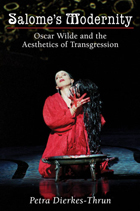 Salome's Modernity: Oscar Wilde and the Aesthetics of Transgression
Petra Dierkes-Thrun
University of Michigan Press, 2014 Oscar Wilde's 1891 symbolist tragedy Salomé has had a rich afterlife in literature, opera, dance, film, and popular culture. Salome's Modernity: Oscar Wilde and the Aesthetics of Transgression is the first comprehensive scholarly exploration of that extraordinary resonance that persists to the present. Petra Dierkes-Thrun positions Wilde as a founding figure of modernism and Salomé as a key text in modern culture's preoccupation with erotic and aesthetic transgression, arguing that Wilde's Salomé marks a major turning point from a dominant traditional cultural, moral, and religious outlook to a utopian aesthetic of erotic and artistic transgression. Wilde and Salomé are seen to represent a bridge linking the philosophical and artistic projects of writers such as Mallarmé, Pater, and Nietzsche to modernist and postmodernist literature and philosophy and our contemporary culture. Dierkes-Thrun addresses subsequent representations of Salome in a wide range of artistic productions of both high and popular culture through the works of Richard Strauss, Maud Allan, Alla Nazimova, Ken Russell, Suri Krishnamma, Robert Altman, Tom Robbins, and Nick Cave, among others.
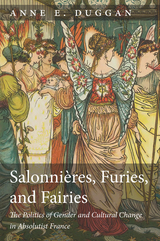 Salonnières, Furies, and Fairies, revised edition: The Politics of Gender and Cultural Change in Absolutist France
Anne E. Duggan
University of Delaware Press, 2021 The original edition of Salonnières, Furies, and Fairies, published in 2005, was a pathbreaking work of early modern literary history, exploring women’s role in the rise of the fairy tale and their use of this new genre to carve out roles as major contributors to the literature of their time. This new edition, with a new introduction and a forward by acclaimed scholar Allison Stedman, emphasizes the scholarly legacy of Anne Duggan’s original work, and its continuing field-changing implications. The book studies the works of two of the most prolific seventeenth-century women writers, Madeleine de Scudéry and Marie-Catherine d'Aulnoy. Analyzing their use of the novel, the chronicle, and the fairy tale, Duggan examines how Scudéry and d'Aulnoy responded to and participated in the changes of their society, but from different generational and ideological positions. This study also takes into account the history of the salon, an unofficial institution that served as a locus for elite women's participation in the cultural and literary production of their society. In order to highlight the debates that emerged with the increased participation of aristocratic women within the public sphere, the book also explores the responses of two academicians, Nicolas Boileau and Charles Perrault.
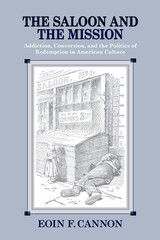 The Saloon and the Mission: Addiction, Conversion, and the Politics of Redemption in American Culture
Eoin F. Cannon
University of Massachusetts Press, 2013
Since the middle of the nineteenth century, sobriety movements have flourished in America during periods of social and economic crisis. From the boisterous working-class temperance meetings of the 1840s to the quiet beginnings of Alcoholics Anonymous in the 1930s, alcoholics have banded together for mutual support. Each time they have developed new ways of telling their stories, and in the process they have shaped how Americans think about addiction, the self, and society.
In this book Eoin Cannon illuminates the role that sobriety movements have played in placing notions of personal and societal redemption at the heart of modern American culture. He argues against the dominant scholarly perception that recovery narratives are private and apolitical, showing that in fact the genre's conventions turn private experience to public political purpose. His analysis ranges from neglected social reformer Helen Stuart Campbell's embrace of the "gospel rescue missions" of postbellum New York City to William James's use of recovery stories to consider the regenerative capabilities of the mind, to writers such as Upton Sinclair and Djuna Barnes, who used this narrative form in much different ways.
Cannon argues that rather than isolating recovery from these realms of wider application, the New Deal–era Alcoholics Anonymous refitted the "drunkard's conversion" as a model of selfhood for the liberal era, allowing for a spiritual redemption story that could accommodate a variety of identities and compulsions. He concludes by considering how contemporary recovery narratives represent both a crisis in liberal democracy and a potential for redemptive social progress.
The Saloon: Public Drinking in Chicago and Boston, 1880-1920
Perry R. Duis
University of Illinois Press, 1983 This colorful and perceptive study presents persuasive evidence that the saloon, far from being a magnet for vice and crime, played an important role in working-class community life. Focusing on public drinking in "wide open" Chicago and tightly controlled Boston, Duis offers a provocative discussion of the saloon as a social institution and a locus of the struggle between middle-class notions of privacy and working-class uses of public space.
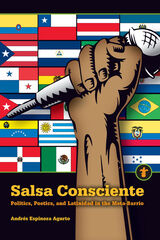 Salsa Consciente: Politics, Poetics, and Latinidad in the Meta-Barrio
Andrés Espinoza Agurto
Michigan State University Press, 2021 This volume explores the significations and developments of the Salsa consciente movement, a Latino musico-poetic and political discourse that exploded in the 1970s but then dwindled in momentum into the early 1990s. This movement is largely linked to the development of Nuyolatino popular music brought about in part by the mass Latino migration to New York City beginning in the 1950s and the subsequent social movements that were tied to the shifting political landscapes. Defined by its lyrical content alongside specific sonic markers and political and social issues facing U.S. Latinos and Latin Americans, Salsa consciente evokes the overarching cultural-nationalist idea of Latinidad (Latin-ness). Through the analysis of over 120 different Salsa songs from lyrical and musical perspectives that span a period of over sixty years, the author makes the argument that the urban Latino identity expressed in Salsa consciente was constructed largely from diasporic, deterritorialized, and at times imagined cultural memory, and furthermore proposes that the Latino/Latin American identity is in part based on African and Indigenous experience, especially as it relates to Spanish colonialism. A unique study on the intersection of Salsa and Latino and Latin American identity, this volume will be especially interesting to scholars of ethnic studies and musicology alike.
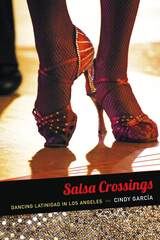 Salsa Crossings: Dancing Latinidad in Los Angeles
Cindy García
Duke University Press, 2013 In Los Angeles, night after night, the city's salsa clubs become social arenas where hierarchies of gender, race, and class, and of nationality, citizenship, and belonging are enacted on and off the dance floor. In an ethnography filled with dramatic narratives, Cindy García describes how local salseras/os gain social status by performing an exoticized L.A.–style salsa that distances them from club practices associated with Mexicanness. Many Latinos in Los Angeles try to avoid "dancing like a Mexican," attempting to rid their dancing of techniques that might suggest that they are migrants, poor, working-class, Mexican, or undocumented. In L.A. salsa clubs, social belonging and mobility depend on subtleties of technique and movement. With a well-timed dance-floor exit or the lift of a properly tweezed eyebrow, a dancer signals affiliation not only with a distinctive salsa style but also with a particular conceptualization of latinidad.
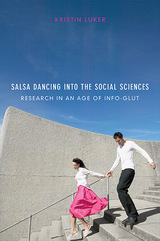 Salsa Dancing into the Social Sciences: Research in an Age of Info-glut
Kristin Luker
Harvard University Press, 2010 “You might think that dancing doesn’t have a lot to do with social research, and doing social research is probably why you picked this book up in the first place. But trust me. Salsa dancing is a practice as well as a metaphor for a kind of research that will make your life easier and better.”
Savvy, witty, and sensible, this unique book is both a handbook for defining and completing a research project, and an astute introduction to the neglected history and changeable philosophy of modern social science. In this volume, Kristin Luker guides novice researchers in: knowing the difference between an area of interest and a research topic; defining the relevant parts of a potentially infinite research literature; mastering sampling, operationalization, and generalization; understanding which research methods best answer your questions; beating writer’s block.
Most important, she shows how friendships, non-academic interests, and even salsa dancing can make for a better researcher.
“You know about setting the kitchen timer and writing for only an hour, or only 15 minutes if you are feeling particularly anxious. I wrote a fairly large part of this book feeling exactly like that. If I can write an entire book 15 minutes at a time, so can you.”
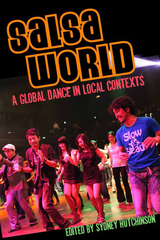 Salsa World: A Global Dance in Local Contexts
Sydney Hutchinson
Temple University Press, 2013 Since its emergence in the 1960s, salsa has transformed from a symbol of Nuyorican pride into an emblem of pan-Latinism and finally a form of global popular culture. While Latinos all over the world have developed and even exported their own “dance accents,” local dance scenes have arisen in increasingly far-flung locations, each with their own flavor and unique features.
Salsa Worldexamines the ways in which bodies relate to culture in specific places. The contributors, a notable group of scholars and practitioners, analyze dance practices in the U.S., Japan, Spain, France, Colombia, Cuba, Puerto Rico, and the Dominican Republic. Writing from the disciplines of ethnomusicology, anthropology, sociology, and performance studies, the contributors explore salsa’s kinetopias - places defined by movement, or vice versa- as they have arisen through the dance’s interaction with local histories, identities, and musical forms. Taken together, the essays in this book examine contemporary salsa dancing in all its complexity, taking special note of how it is localized and how issues of geography, race and ethnicity, and identity interact with the global salsa industry. Contributors include Bárbara Balbuena Gutiérrez,Katherine Borland, Joanna Bosse, Rossy Díaz, Saúl Escalona, Kengo Iwanaga, Isabel Llano, Jonathan S. Marion, Priscilla Renta, Alejandro Ulloa Sanmiguel, and the editor.
In the series Studies in Latin American and Caribbean Music, edited by Peter Manuel
Salt
Renee Ashley
University of Wisconsin Press, 1991 Renée Ashley describes Salt as an attempt, in part, to mythologize a period of the 1950s and early 1960s in the California Bay Area suburb where she grew up, “a racially rich, economically varied section of town east of El Camino Real—the major road and the ‘tracks’, so to speak, that one grew up on the right or wrong side of.” Many of the poems in the collection explore Ashley’s adjustment to the East Coast after a virtual lifetime in “that one place.” They deal with landscape, with marriage, with the insight distance seems to lend to hindsight, with amusement, with regret.
“Renée Ashley can tune our ears to the thoughts of a wounded sparrow, to the sibilance of snow on stone, even to the song rocks make as they thaw in spring. . . . She wakes us to an intricate, enthralling world behind, beneath, beyond the one we thought we knew, alive with particulars, laced with compassion, luminous with humor.”—Donald Finkel
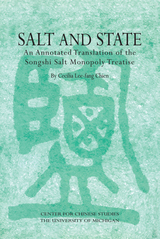 Salt and State: An Annotated Translation of the Songshi Salt Monopoly Treatise
Cecilia Lee-fang Chien
University of Michigan Press, 2004 Salt and State is an annotated translation of a treatise on salt from Song China. From its inception in the Han dynasty (206 B.C.–220 A.D.), the salt monopoly was a key component in the Chinese government's financial toolkit. Salt, with its highly localized and large-scale production, was an ideal target for bureaucratic management. In the Song dynasty (960–1279), fiscal pressures on the government had intensified with increased centralization and bureaucratization. A bloated administration and an enormous standing army maintained against incursions by aggressive steppe neighbors placed tremendous strain on Song finances. Developing the salt monopoly seemed a logical and indeed urgent strategy, but each actor in this plan—the emperor, local officials, monopoly administrators, producers, merchants, and consumers—had his own interests to protect and advance. Thus attempts to maximize the effectiveness of the monopoly meant frequent policy swings and led to levels of corruption that would ultimately undo the Song. Unlike other contemporary sources, the Songshi treatise organizes its subject into an intelligible and detailed narrative, elucidating special terminology, the bureaucracy and its processes, and debates relating to Chinese finance and politics, as well as the salt industry itself. Professor Chien's extensive annotation relies on parallel histories that corroborate and supplement the Songshi account, together providing a comprehensive study of this important institution in China's premodern political economy.
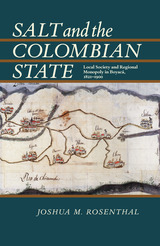 Salt and the Colombian State: Local Society and Regional Monopoly in Boyaca, 1821-1900
Joshua M. Rosenthal
University of Pittsburgh Press, 2012
In republican Colombia, salt became an important source of revenue not just to individuals, but to the state, which levied taxes on it and in some cases controlled and profited from its production. The salt trade consistently accounted for roughly ten percent of government income.
In the town of la Salina de Chita, in Boyacá province, thermal springs offered vast amounts of salt, and its procurement and distribution was placed under the jurisdiction of the Ministry of Finance. Focusing his study on la Salina, Joshua M. Rosenthal presents a fascinating glimpse into the workings of the early Colombian state, its institutions, and their interactions with local citizens during this formative period. Although historians have cited the state’s weakness, and in many cases, its absence in local affairs, Rosenthal counters these assumptions by documenting the primary role the state held in administering contracts, inspections, land rights, labor, and trade in la Salina, and contends that this was not an isolated incident. He also uncovers the frequent interaction between the state and local residents, who used the state’s liberal rhetoric to gain personal economic advantage.
Seen through the lens of the administration of la Salina’s salt works, Rosenthal provides a firsthand account of the role of local institutions and fiscal management in the larger process of state building. His study offers new perspectives on the complex network of republican Colombia’s political culture, and its involvement in provincial life across the nation.
Salt as a Factor in the Confederacy
Ella Lonn
University of Alabama Press, 1965 An exhaustive study of the role salt played in the drama of the War Between the States
It is only when a prime necessity thrusts itself upon public attention by its absence that a person ceases to take it for granted. Only when he no longer has it, does he realize what an important ingredient for his palate and digestion is plain, ordinary salt, necessary alike for man and beast. He then recalls that the salt licks and salt springs have from the earliest times been centers of interest and development.
The author has searched into the archives of most of the states of the old confederacy, and also into departments of knowledge remote from her own, so that she has had to delve into geological libraries, consult colleagues in the fields of chemistry and physiology, and do more sums in arithmetic than have fallen to her lot since she was in the primary school. But it has been a pleasant and profitable search.
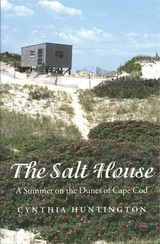 The Salt House: A Summer on the Dunes of Cape Cod
Cynthia Huntington
Dartmouth College Press, 2003 The Salt House is a beautifully observed and written memoir of a long summer's stay on the back shore of Cape Cod. Each chapter is like a prose poem, shedding increasing light on the challenge of finding "home" without the illusion of permanence, a quest based not on ownership but on affinity and familiarity with an area and its people. Cynthia Huntington expands her theme through images of the landscape, the shack, the new marriage. The shack, named "Euphoria," is built as a house set on stilts above the sand, to take the wind under it. Only a partial shelter, it is inhabited for only one season a year, yet it endures. The outer cape has the feel of a place for migrants and drifters -- for birds and other wildlife, and for people such as artists, fishermen, and coast guardsmen. A place where "year-round" often means several addresses. Similarly, her narrative describes improvised, fragile beginnings: a new marriage, learning to be at home in the world, becoming intimate with the natural world, without the necessity of settling down. The Salt House shares a world that is less natural history or memoir than it is neighborhood exploration -- the process of learning a place and becoming native to it.
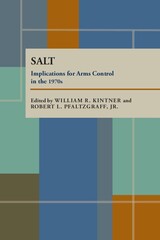 SALT: Implications for Arms Control in the 1970s
William R. Kintner
University of Pittsburgh Press, 1973
A collection of original essays dealing with many aspects of the complex problems of arms control, this volume provides an understanding of the political, strategic, technological, and bureaucratic constraints affecting the development of arms control policies by major powers. Among the diverse subjects examined are American and Soviet interests in arms control, and the rationale for arms control in alternative international systems based upon either bipolarity or multipolarity.
The volume also includes a discussion of the critical technological factors which have important implications for the Strategic Arms Limitations Talks (SALT), an examination of structural change in the international system, the emergence of additional centers of power, and the implications of SALT for would-be nuclear powers.
Contributors: Robert R. Bowie, J. I. Coffey, James E. Dougherty, Wynfred Joshua, Geoffrey Kemp, Takeshi Muramatsu, George H. Quester, Robert A. Scalapino, Ian Smart, William R. Van Cleave, Thomas W. Wolfe, and the editors.
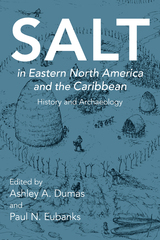 Salt in Eastern North America and the Caribbean: History and Archaeology
Edited by Ashley A. Dumas and Paul N. Eubanks
University of Alabama Press, 2021 Case studies examining the archaeological record of an overlooked mineral
Salt, once a highly prized trade commodity essential for human survival, is often overlooked in research because it is invisible in the archaeological record. Salt in Eastern North America and the Caribbean: History and Archaeology brings salt back into archaeology, showing that it was valued as a dietary additive, had curative powers, and was a substance of political power and religious significance for Native Americans. Major salines were embedded in collective memories and oral traditions for thousands of years as places where physical and spiritual needs could be met. Ethnohistoric documents for many Indian cultures describe the uses of and taboos and other beliefs about salt.
The volume is organized into two parts: Salt Histories and Salt in Society. Case studies from prehistory to post-Contact and from New York to Jamaica address what techniques were used to make salt, who was responsible for producing it, how it was used, the impact it had on settlement patterns and sociopolitical complexity, and how economies of salt changed after European contact. Noted salt archaeologist Heather McKillop provides commentary to conclude the volume.
.
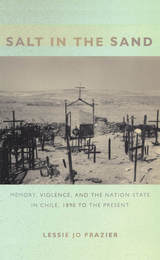 Salt in the Sand: Memory, Violence, and the Nation-State in Chile, 1890 to the Present
Lessie Jo Frazier
Duke University Press, 2007 Salt in the Sand is a compelling historical ethnography of the interplay between memory and state violence in the formation of the Chilean nation-state. The historian and anthropologist Lessie Jo Frazier focuses on northern Chile, which figures prominently in the nation’s history as a site of military glory during the period of national conquest, of labor strikes and massacres in the late nineteenth century and early twentieth, and of state detention and violence during World War II and the Cold War. It was also the site of a mass-grave excavation that galvanized the national human rights movement in 1990, during Chile’s transition from dictatorship to democracy. Frazier analyzes the creation of official and alternative memories of specific instances of state violence in northern Chile from 1890 to the present, tracing how the form and content of those memories changed over time. In so doing, she shows how memory works to create political subjectivities mobilized for specific political projects within what she argues is the always-ongoing process of nation-state formation. Frazier’s broad historical perspective on political culture challenges the conventional periodization of modern Chilean history, particularly the idea that the 1973 military coup marked a radical break with the past. Analyzing multiple memories of state violence, Frazier innovatively shapes social and cultural theory to interpret a range of sources, including local and national government archives, personal papers, popular literature and music, interviews, architectural and ceremonial commemorations, and her ethnographic observations of civic associations, women's and environmental groups, and human rights organizations. A masterful integration of extensive empirical research with sophisticated theoretical analysis, Salt in the Sand is a significant contribution to interdisciplinary scholarship on human rights, democratization, state formation, and national trauma and reconciliation.
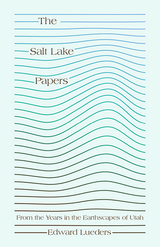 The Salt Lake Papers: From the Years in the Earthscapes of Utah
Ed Lueders
University of Utah Press, 2018 Once again cast in the companionable style of journal entries and notes that readers enjoyed in Lueders’s 1977 creative nonfiction classic The Clam Lake Papers, this new investigation into language and ways of knowing follows the author’s move from the north woods of Wisconsin to the Intermountain West of Utah. The Salt Lake Papers is divided into two sections by location and time. Book One reflects the central geophysical presence of the Great Salt Lake, in view from Leuders’s home and the University of Utah campus where he studied and taught. Researched and composed during the 1980s, it is published here for the first time. Book Two begins with his retirement to the “earthscapes” of the Torrey–Capitol Reef area of southern Utah and contemplates the Colorado River system. Hydrology thus provides both the physical and the metaphysical basis for the author’s reflective insights and for the natural flow of his advancing thought. Beautifully written, The Salt Lake Papers, in varied ways, speaks to the necessity of the humanities in the modern age. At its heart, Lueders’s small book of intellectual musings explores place and the ways landscape shapes what is observant in each of us. Hear Ed Lueders talk about his book on Utah Conversations with Ted Capener on KUED
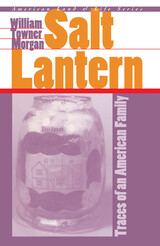 Salt Lantern: Traces of an American Family
William Towner Morgan
University of Iowa Press, 1997 As a child growing up in Pipestone, Minnesota, in the 1930s, William Morgan marveled over his great-grandmother's salt-filled chimney lantern. Full of sea salt and mementos and drawings that commemorated her British home and her journey to America in 1855, this Victorian artifact became the inspiration both for Morgan's pilgrimage to find the original salt lantern and, after many journeys both external and internal, for this multifaceted family history. Morgan began his research by visiting England and Scotland, then traveled to Vermont, Wisconsin, Minnesota, Iowa, and North Dakota searching for the buildings and landscapes related to his mother's ancestors. Tracing his father's family took him to Ireland, where he discovered the thatched-roof house in which his grandmother was born. By studying his family's houses, farm buildings, landforms, letters, and heirlooms, Bill Morgan tells the stories of his ancestors' lives. By adding fresh memories written by his sister and brothers as well as journals and other family documents, he builds upon these stories to create a full life of an American family.
 Salt Marshes: A Natural and Unnatural History
Weis, Judith S
Rutgers University Press, 2009 Tall green grass. Subtle melodies of songbirds. Sharp whines of muskrats. Rustles of water running through the grasses. And at low tide, a pungent reminder of the treasures hidden beneath the surface.All are vital signs of the great salt marshes' natural resources. Now championed as critical habitats for plants, animals, and people because of the environmental service and protection they provide, these ecological wonders were once considered unproductive wastelands, home solely to mosquitoes and toxic waste, and mistreated for centuries by the human population. Exploring the fascinating biodiversity of these boggy wetlands, Salt Marshes offers readers a wealth of essential information about a variety of plants, fish, and animals, the importance of these habitats, consequences of human neglect and thoughtless development, and insight into how these wetlands recover. Judith S. Weis and Carol A. Butler shed ample light on the human impact, including chapters on physical and biological alterations, pollution, and remediation and recovery programs. In addition to a national and global perspective, the authors place special emphasis on coastal wetlands in the Atlantic and Gulf regions, as well as the San Francisco Bay Area, calling attention to their historical and economic legacies. Written in clear, easy-to-read language, Salt Marshes proves that the battles for preservation and conservation must continue, because threats to salt marshes ebb and flow like the water that runs through them.
Salt Moon
Noel Crook
Southern Illinois University Press, 2015 Crab Orchard Review First Book Prize
Co-Winner, Julie Suk Prize
Finalist, INDIEFAB Book fo the Year
Throughout Salt Moon, Noel Crook forges the kind of tragic vision Howard Nemerov described as the mark of our finest poets: drawing on myth and memory, Crook’s fierce lyrics reveal a world that is at once “hopeless and beautiful . . . giving equal emphasis to both words.” Sacrifice and betrayal, parental love and patricide, unleashed desire and cornered despair—these antitheses fuel Crook’s Ovidian imagination, which ranges freely from Comanche raids in Texas to a slave plantation in North Carolina, from a carpet maker in Istanbul to beggars in Delhi, from her daughter’s hospital room to the war in Iraq. Rendered in unforgettable images, Salt Moon is that rare book which grows richer with each reading.
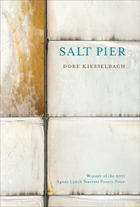 Salt Pier
Dore Kiesselbach
University of Pittsburgh Press, 2012 "Emotionally direct and visually all alike in column-shaped free verse, the poems in this debut from the Minneapolis-based Kiesselbach open up to show startling verbal skills, intellectual depths, and sensory complications. 'Beach Thanksgiving' wheels from seaside scenes into one, then another, sad memory: 'Fire’s an assortment of sparks down the beach/ beside which your new family cooks./ Asked to bear a ring,/ you pulled and pulled at your hair.' For an elderly mother, once a gardener, 'Joy’s bolted/ in her face to sorrow/ like a pair of shears.' Marital love in the present (Kiesselbach has a particular talent for love poems), what looks like abuse in the past, the cycle of green growing things, the cold of the north, and the warmth of the animal world all inform these investigations of confession and its discontents, of commitments given and withheld, sometimes through stark life story but more often, in a wonderful involution, through symbols contemplated at short remove—in turkeys, for example, whose unlikely dignity rebukes human discontents: 'In fall’s/ ballroom they bow/ and straighten, straighten,/ bow, and finish/ with a salad course.'”
—Publishers Weekly
 Salt: Poetry
Susan Elizabeth Howe
Signature Books, 2013 Poets living in the American West often muse about the rolling cheatgrass, gnarled stands of scrub oak, winding horseshoe cliffs, the scent of freshly-cut ponderosa, and even the occasional mountain-hardened rustler shielding himself against a grey winter squall.
Howe’s poems are Western but unmistakably modern, drawn from the astute observation of humanity of both rural and urban settings. Her weekly commute from the heart of Sanpete County to Utah Valley causes her to reflect on her culture and to contemplate recent events as she winds through the long, broad canyons. She sees an occasional deer chased from the road, pinyon jays, and magpies. She thinks about death, marriage, blood, and yes, even the dreamy (and occasionally steamy), country girl’s attraction to men.
In her verse, she journeys into the psyche of several women: Charles Dickens’s wife Catherine; Charlotte Brontë; an Argentine woman who unknowingly carried a fetus for several years; a woman whose pet snake tried to squeeze her to death. She recalls the rhododendrons of Kew Gardens, the house of Shakespeare’s grandmother, the sheep of Ireland, and the dogs of the Sierra Madres, but mostly she writes about the Mountain West and her home there.
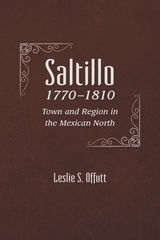 Saltillo, 1770-1810: Town and Region in the Mexican North
Leslie S. Offutt
University of Arizona Press, 2001 At the end of the eighteenth century, the community of Saltillo in northeastern Mexico was a thriving hub of commerce. Over the previous hundred years its population had doubled to 11,000, and the town was no longer limited to a peripheral role in the country's economy. Leslie Offutt examines the social and economic history of this major late-colonial trading center to cast new light on our understanding of Mexico's regional history. Drawing on a vast amount of original research, Offutt contends that northern Mexico in general has too often been misportrayed as a backwater frontier region, and she shows how Saltillo assumed a significance that set it apart from other towns in the northern reaches of New Spain. Saltillo was home to a richly textured society that stands in sharp contrast to images portrayed in earlier scholarship, and Offutt examines two of its most important socioeconomic groups—merchants and landowners—to reveal the complexity and vitality of the region's agriculture, ranching, and trade. By delineating the business transactions, social links, and political interaction between these groups, she shows how leading merchants came to dominate the larger society and helped establish the centrality of the town. She also examines the local political sphere and the social basis of officeholding—in which merchants generally held higher-status posts—and shows that, unlike other areas of late colonial Mexico, Saltillo witnessed little conflict between creoles and peninsulars. The growing significance of this town and region exemplifies the increasing complexity of Mexico's social, economic, and political landscape in the late colonial era, and it anticipates the phenomenon of regionalism that has characterized the nation since Independence. Offutt's study reassesses traditional assumptions regarding the social and economic marginality of this trading center, and it offers scholars of Mexican and borderlands studies alike a new way of looking at this important region.
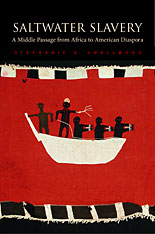 Saltwater Slavery: A Middle Passage from Africa to American Diaspora
Stephanie E. Smallwood
Harvard University Press, 2007 This bold, innovative book promises to radically alter our understanding of the Atlantic slave trade, and the depths of its horrors. Stephanie E. Smallwood offers a penetrating look at the process of enslavement from its African origins through the Middle Passage and into the American slave market.
Smallwood's story is animated by deep research and gives us a startlingly graphic experience of the slave trade from the vantage point of the slaves themselves. Ultimately, Saltwater Slavery details how African people were transformed into Atlantic commodities in the process. She begins her narrative on the shores of seventeenth-century Africa, tracing how the trade in human bodies came to define the life of the Gold Coast. Smallwood takes us into the ports and stone fortresses where African captives were held and prepared, and then through the Middle Passage itself. In extraordinary detail, we witness these men and women cramped in the holds of ships, gasping for air, and trying to make sense of an unfamiliar sea and an unimaginable destination. Arriving in America, we see how these new migrants enter the market for laboring bodies, and struggle to reconstruct their social identities in the New World.
Throughout, Smallwood examines how the people at the center of her story-merchant capitalists, sailors, and slaves-made sense of the bloody process in which they were joined. The result is both a remarkable transatlantic view of the culture of enslavement, and a painful, intimate vision of the bloody, daily business of the slave trade.
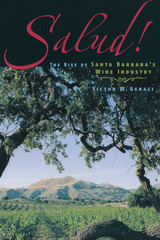 Salud!: The Rise Of Santa Barbara's Wine Industry
Victor W. Geraci
University of Nevada Press, 2018 In 1965, soil and climatic studies indicated that the Santa Ynez and Santa Maria valleys of Santa Barbara County, California, offered suitable conditions for growing high-quality wine grapes. Thus was launched a revival of the area’s two-centuries-old wine industry that by 1995 made Santa Barbara County an internationally prominent wine region. Salud! traces the evolution of Santa Barbara viticulture in the larger context of California’s history and economy, offering insight into one of the state’s most important industries. California has produced wine since Spanish missionaries first planted grapes to make sacramental wines, but it was not until the late twentieth century that changing consumer tastes and a flourishing national economy created the conditions that led to the state’s wine boom. Historian Victor W. Geraci uses the Santa Barbara wine industry as a case study to analyze the history and evolution of American viticulture from its obscure colonial beginnings to its current international acclaim. As elsewhere in the state, Santa Barbara County vintners faced the multiple challenges of selecting grape varieties appropriate to their unique conditions, protecting their crops from disease and insects, developing local wineries, and of marketing their products in a highly competitive national and international market. Geraci gives careful attention to all the details of this production: agriculture, science, and technology; capitalization and investment; land-use issues; politics; the specter posed by the behemoth Napa and multinational wine corporations; and the social and personal consequences of creating and supporting an industry vulnerable to so many natural and economic crises. His extensive research includes interviews with many industry professionals. California is today one of the world’s major wine producers, and Santa Barbara County contributes significantly to the volume and renowned quality of this wine production. Salud! offers a highly engaging overview of an industry in which the ancient romance of wine too often obscures a complex and diverse modern vintibusiness that for better, and sometimes for worse, has shaped the regions it dominates.
 Salud y Shalom: Conversations with Jewish Veterans of the Abraham Lincoln Brigade
Joseph Butwin
University of Illinois Press, 2025 Jewish volunteers made up almost one-third of the Abraham Lincoln Brigade (ALB) during the Spanish Civil War. Most belonged to a Communist Party focused on the antifascist goals of the Popular Front and faithful to the internationalist idea of erasing ethnicity, including Jewish ethnicity. Joseph Butwin’s oral history presents conversations with ten Jewish veterans of the ALB. Recorded from 1992–94 in the wake of European communism’s collapse, the interviews explore the milieus that formed the volunteers. Immigrants established the secular Yiddish-speaking socialism that became a part of many Jewish American communities. Their children, reacting to economic depression and the rise of fascism, enlisted in the ALB. Butwin follows their stories from their youthful motives and choices through their lives as Jews and leftists, and records the reckonings that took place as they reflected on their past. Insightful and revealing, Salud y Shalom explores the forces of identity and history that led young Jewish leftists to fight fascism.
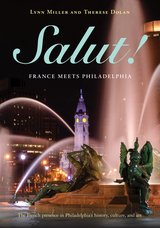 Salut!: France Meets Philadelphia
Lynn Miller and Therese Dolan
Temple University Press, 2021 One highly visible example of French influence on the city of Philadelphia is the Benjamin Franklin Parkway, modeled on the Champs-Élysées. In Salut!, Lynn Miller and Therese Dolan trace the fruitful, three-centuries-long relationship between the City of Brotherly Love and France. This detailed volume illustrates the effect of Huguenots settling in Philadelphia and 18-year-old William Penn visiting Paris, all the way up through more recent cultural offerings that have helped make the city the distinctive urban center it is today. Salut! provides a magnifique history of Philadelphia seen through a particular cultural lens. The authors chronicle the French influence during colonial and revolutionary times. They highlight the contributions of nineteenth-century French philanthropists, such as Stephen Girard and the Dupont family. And they showcase the city’s vibrant visual arts community featuring works from the Philadelphia Museum of Art, the Rodin Museum, the Barnes Foundation, and the Joan of Arc sculpture, as well as studies of artists Thomas Eakins, Mary Cassatt, and Henry Ossawa Tanner. There is also a profile of renowned Le Bec-Fin chef Georges Perrier, who made Philadelphia a renowned culinary destination in the twentieth century. With lavish illustrations and enthusiastic text, Salut!celebrates a potpourri of all things French in the Philadelphia region.
Salvador Allende: Revolutionary Democrat: Revolutionarvy Democrat
Victor Figueroa Clark
Pluto Press, 2013 This is a political biography of one of the 20th century’s most emblematic left-wing figures - Salvador Allende, who was president of Chile until he was ousted by General Pinochet in a US-supported coup in 1973.
Victor Figueroa Clark guides us through Allende's life and political project, answering some of the most frequently asked questions. Was he a revolutionary or a reformist? A bureaucrat or inspirational democrat? Clark argues that Allende and the Popular Unity Party created a unique fusion which was both revolutionary and democratic.
The process led by Allende was a symbol of hope for the left during his short time in power. Forty years on, and with left governments back in power across Latin America, this book looks back at the man and the process in order to draw vital lessons for the left in Latin America and around the world today.
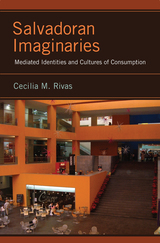 Salvadoran Imaginaries: Mediated Identities and Cultures of Consumption
Cecilia M. Rivas
Rutgers University Press, 2014 Ravaged by civil war throughout the 1980s and 1990s, El Salvador has now emerged as a study in contradictions. It is a country where urban call centers and shopping malls exist alongside rural poverty. It is a land now at peace but still grappling with a legacy of violence. It is a place marked by deep social divides, yet offering a surprising abundance of inclusive spaces. Above all, it is a nation without borders, as widespread emigration during the war has led Salvadorans to develop a truly transnational sense of identity. In Salvadoran Imaginaries, Cecilia M. Rivas takes us on a journey through twenty-first century El Salvador and to the diverse range of sites where the nation’s postwar identity is being forged. Combining field ethnography with media research, Rivas deftly toggles between the physical spaces where the new El Salvador is starting to emerge and the virtual spaces where Salvadoran identity is being imagined, including newspapers, literature, and digital media. This interdisciplinary approach enables her to explore the multitude of ways that Salvadorans negotiate between reality and representation, between local neighborhoods and transnational imagined communities, between present conditions and dreams for the future. Everyday life in El Salvador may seem like a simple matter, but Rivas digs deeper, across many different layers of society, revealing a wealth of complex feelings that the nation’s citizens have about power, opportunity, safety, migration, and community. Filled with first-hand interviews and unique archival research, Salvadoran Imaginaries offers a fresh take on an emerging nation and its people.
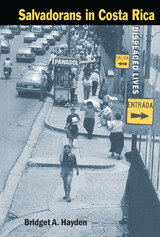 Salvadorans in Costa Rica: Displaced Lives
Bridget Hayden
University of Arizona Press, 2003 During the political and economic upheaval that swept El Salvador in the 1980s, as many as 20,000 Salvadorans took refuge in Costa Rica. Despite similarities between the countries, most Salvadorans experienced El Salvador and Costa Rica as very different places; yet some 6,000 chose to remain after the violence in their country ended, re-establishing their lives successfully enough that they claimed that they now "felt Costa Rican." Bridget Hayden examines the ways in which these people integrated into Costa Rican society and the ambiguous sense of identity they developed, exploring their experience of the process and the cultural concepts they used to interpret those experiences. Salvadorans in Costa Rica: Displaced Lives introduces readers to people from a wide range of class and educational backgrounds who had come to Costa Rica from all over El Salvador. All shared the experience of having become refugees and having settled in a new country under the same circumstances, and when the war in their own country ended, they shared a concern about the issues involved in deciding whether to return there. Their diversity allows Hayden to examine the ways in which the language of national identity played out in different contexts and sometimes contradictory ways. Drawing on contemporary theories of migration and space, Hayden identifies the discourses, narratives, and concepts that Salvadorans in Costa Rica had in common and then analyzes the ways in which their experiences and their uses of those discourses varied. She focuses on key spatial concepts that Salvadorans used in talking about displacement and re-emplacement in order to show how they constructed the experience of settlement and how such variables as gender and age influenced their experiences. Because "nationality" was an idiom they used to relate their experiences, she pays particular attention to the role of national belonging and national difference—in terms of both the ways in which the Salvadorans were received by Costa Ricans and their reactions to their new lives in Costa Rica. A concluding chapter compares them with Salvadorans who emigrated to other countries. The story of these displaced Salvadorans, focusing on the lives of real people, can give us a new understanding of how individuals feel a sense of belonging to a sociocultural space. By exploring many meanings of the nation and national belonging for different people under varying conditions, Hayden's study provides fresh insights into the dynamics of migration, gender, and nationalism.
Salvage
Hedgie Choi
University of Wisconsin Press, 2025 Part blasphemous prayer, part stand-up comedy, wholly unique, this breathtaking collection is by turns devastating, funny, and startling. Whether the site of exploration is Star Trek, Leonard Cohen, roadkill, or etymology, sublime bewilderment rubs shoulders with half-buried humiliations and accidental salvations. The voice in these poems tenderly and tenaciously inquires into how to survive—not how to survive violence but how to survive surviving. Choi is the rare poet who can elicit laughter, sober reflection, and wry bemusement all within the space of a few lines—or sometimes only one. This is a collection that you can read through in a single sitting, then return to again and again.
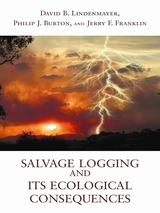 Salvage Logging and Its Ecological Consequences
David B. Lindenmayer, Philip J. Burton, and Jerry F. Franklin
Island Press, 2008 Salvage logging—removing trees from a forested area in the wake of a catastrophic event such as a wildfire or hurricane—is highly controversial. Policymakers and those with an economic interest in harvesting trees typically argue that damaged areas should be logged so as to avoid “wasting” resources, while many forest ecologists contend that removing trees following a disturbance is harmful to a variety of forest species and can interfere with the natural process of ecosystem recovery.
Salvage Logging and Its Ecological Consequences brings together three leading experts on forest ecology to explore a wide range of issues surrounding the practice of salvage logging. They gather and synthesize the latest research and information about its economic and ecological costs and benefits, and consider the impacts of salvage logging on ecosystem processes and biodiversity. The book examines
• what salvage logging is and why it is controversial
• natural and human disturbance regimes in forested ecosystems
• differences between salvage harvesting and traditional timber harvesting
• scientifically documented ecological impacts of salvage operations
• the importance of land management objectives in determining appropriate post-disturbance interventions
Brief case studies from around the world highlight a variety of projects, including operations that have followed wildfires, storms, volcanic eruptions, and insect infestations. In the final chapter, the authors discuss policy management implications and offer prescriptions for mitigating the impacts of future salvage harvesting efforts.
Salvage Logging and Its Ecological Consequences is a “must-read” volume for policymakers, students, academics, practitioners, and professionals involved in all aspects of forest management, natural resource planning, and forest conservation.
Salvage: Poems
Cynthia Dewi Oka
Northwestern University Press, 2018 How do we transform the wreckage of our identities? Cynthia Dewi Oka’s evocative collection answers this question by brimming with what we salvage from our most deep-seated battles. Reflecting the many dimensions of the poet’s life, Salvage manifests an intermixture of aesthetic forms that encompasses multiple social, political, and cultural contexts—leading readers to Bali, Indonesia, to the Pacific Northwest, and to South Jersey and Philadelphia.
Throughout it insistently interrogates what it means to reach for our humanity through the guises of nation, race, and gender. Oka’s language transports us through the many bodies of fluid poetics that inhabit our migrating senses and permeate across generations into a personal diaspora. Salvage invites us to be without borders.
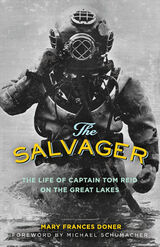 The Salvager: The Life of Captain Tom Reid on the Great Lakes
Mary Frances Doner
University of Minnesota Press, 2017 First published in 1958, The Salvager is both a narrative history of Great Lakes shipping disasters of 1880–1950 and the life story of Captain Thomas Reid, who operated one of the region’s largest salvaging companies during that era. The treacherous shoals, unpredictable storms, and sub-zero temperatures of the Great Lakes have always posed special hazards to mariners—particularly before the advent of modern navigational technologies—and offered ample opportunity for an enterprising sailor to build a salvage business up from nothing. Designing much of his equipment himself and honing a keen eye for the risks and rewards of various catastrophes, Captain Reid rose from humble beginnings and developed salvaging into a science. Using the actual records of the Reid Wrecking and Towing Company as well as Reid’s personal logs and letters, Mary Frances Doner deftly tells the stories not only of the maritime disasters and the wrecking adventures that followed, but also of those waiting back on shore for their loved ones to return.
 Salvation and Sin: Augustine, Langland, and Fourteenth-Century Theology
David Aers
University of Notre Dame Press, 2009
In Salvation and Sin, David Aers continues his study of Christian theology in the later Middle Ages. Working at the nexus of theology and literature, he combines formidable theological learning with finely detailed and insightful close readings to explore a cluster of central issues in Christianity as addressed by Saint Augustine and by four fourteenth-century writers of exceptional power.
Salvation and Sin explores various modes of displaying the mysterious relations between divine and human agency, together with different accounts of sin and its consequences. Theologies of grace and versions of Christian identity and community are its pervasive concerns. Augustine becomes a major interlocutor in this book: his vocabulary and grammar of divine and human agency are central to Aers' exploration of later writers and their works.
After the opening chapter on Augustine, Aers turns to the exploration of these concerns in the work of two major theologians of fourteenth-century England, William of Ockham and Thomas Bradwardine. From their work, Aers moves to his central text, William Langland's Piers Plowman, a long multigeneric poem contributing profoundly to late medieval conversations concerning theology and ecclesiology. In Langland's poem, Aers finds a theology and ethics shaped by Christology where the poem's modes of writing are intrinsic to its doctrine. His thesis will revise the way in which this canonical text is read. Salvation and Sinconcludes with a reading of Julian of Norwich's profound, compassionate, and widely admired theology, a reading which brings her Showings into conversation both with Langland and Augustine.
“David Aers's Salvation and Sinis an important and provocative book. It throws a particularly enticing gauntlet down to medievalists, daring us to return with Aers to the primary texts, to think with key authors, and to subject literary texts to a logical scrutiny as powerful as that we apply to theology. Beautifully organized and written, his book is a model of scholarship in its learning, clarity, and humility.” —Lynn Staley, Colgate University
“In Salvation and Sin Aers continues to break new ground in his ongoing discussion of Christology and ecclesiology in medieval literature and culture. His reading of Langland and Julian is rooted in a bold and refreshing approach to Augustine that serves as a powerful corrective to the dominant, Pelagian view of theology in Piers Plowman, one that leads the reader to embrace a new understanding of how Langland imagines divine will and human agency.” —Jim Rhodes, Southern Connecticut University
“David Aers does not reconstruct an Augustinianism for the fourteenth century—an exercise that would have been an ode to an empty abstraction. Instead he begins with a profound reading of Augustine's own struggle to acknowledge the patient work of grace. He then goes on to refract this reading through the theological inventions of William of Ockham, Thomas Bradwardine, William Langland, and Julian of Norwich. The result is, at one level, a rich grammar of incipiently modern theologies; at another, it is the amplification of an original inspiration. Some of our best theologians are apparently residing in English departments.” —James Wetzel, Villanova University
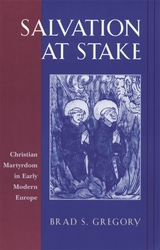 Salvation at Stake: Christian Martyrdom in Early Modern Europe
Brad S. Gregory
Harvard University Press, 2001 Thousands of men and women were executed for incompatible religious views in sixteenth-century Europe. The meaning and significance of those deaths are studied here comparatively for the first time, providing a compelling argument for the importance of martyrdom as both a window onto religious sensibilities and a crucial component in the formation of divergent Christian traditions and identities.
Brad S. Gregory explores Protestant, Catholic, and Anabaptist martyrs in a sustained fashion, addressing the similarities and differences in their self-understanding. He traces the processes and impact of their memorialization by co-believers, and he reconstructs the arguments of the ecclesiastical and civil authorities responsible for their deaths. In addition, he assesses the controversy over the meaning of executions for competing views of Christian truth, and the intractable dispute over the distinction between true and false martyrs. He employs a wide range of sources, including pamphlets, martyrologies, theological and devotional treatises, sermons, songs, woodcuts and engravings, correspondence, and legal records. Reconstructing religious motivation, conviction, and behavior in early modern Europe, Gregory shows us the shifting perspectives of authorities willing to kill, martyrs willing to die, martyrologists eager to memorialize, and controversialists keen to dispute.
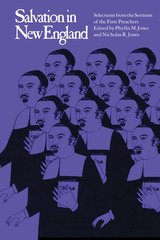 Salvation in New England: Selections from the Sermons of the First Preachers
Edited by Phyllis M. Jones and Nicholas R. Jones
University of Texas Press, 1977 The sermon as crafted by the early New England preachers was the most prominent literary form of its day, yet the earliest Puritan texts have as a rule been available only in rare-book collections. This anthology of sermons of the first generation of preachers fills a serious gap in American literature. The preachers collected here, the most widely published of their time, were among the eighty or more who emigrated to Massachusetts Bay during the 1630s. They are John Cotton of Boston, Thomas Shepard of Cambridge, and Thomas Hooker of Hartford, the three foremost "lights of the western churches," and two eminent colleagues, Peter Bulkeley of Concord and John Davenport, first of New Haven and later of Boston.
The selections are chosen to be representative of the lengthy works from which they are drawn, to reflect the major concerns and styles of the preachers' work as a whole, and to demonstrate the genre of the sermon as developed by the early American Puritans. Not only does this anthology represent an important contribution to literary history, but the sermons also illustrate a doctrine uniquely elaborated in this period—a consistent and emphatic narrative, mythlike in its repetition and heroics, of the progress of the soul from a state of nature to a state of salvation. This theme may be seen as a three-stage-development, although individual sermons may vary. These stages—preparation, vocation, and regeneration—determine the order of the selections. The editors' introductory material supplies a comprehensive and thorough discussion of the early New England sermons, concentrating on their role, history, structure, style, and subject matter. A separate essay on the texts of the sermons describes the relationship between the early printed versions and their form as delivered in the pulpit. The introduction preceding each selection presents original research on the historical circumstances of the preaching and publication of the work from which the sermon is drawn. The editors have also provided brief biographies of the preacfiers represented here, an annotated list of recommended background reading, and the most exhaustive checklist available of authoritative editions of the sermons of these five preachers. This book will be useful to colonial specialists as well as to students of early American literature, religion, and history. The texts are critically edited for readability, with modernized spelling and annotations of unfamiliar phrases and allusions.
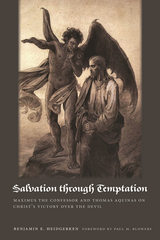 Salvation through Temptation: Maximus the Confessor and Thomas Aquinas on Christ's Victory over the Devil
Benjamin E. Heidgerken
Catholic University of America Press, 2021 Salvation through Temptation describes the development of predominant Greek and Latin Christian conceptions of temptation and of the work of Christ to heal and restore humankind in the context of that temptation, focusing on Maximus the Confessor and Thomas Aquinas as well-developed examples of Greek and Latin thought on these matters.
Maximus and Thomas represent two trajectories concerning the woundedness of human emotionality in the wake of the primordial human sin. Heidgerken argues that Maximus stands in essential continuity with earlier Greek ascetic theology, which conceives of the weakness of fallen humankind in demonological categories, so that the Pauline law of sin is bound to external demonic agents that act upon the human mind through thoughts, desires, and sensory impressions. For Thomas, on the other hand, this wound consists primarily of an internal disordering of the faculties that results from the withdrawal of original grace: concupiscence or the fomes peccati. Yet even in this framework, the devil plays a significant role in Thomas’s account of postlapsarian temptation.
On the basis of these differing frameworks for human temptation, Heidgerken demonstrates the centrality of Christ’s exemplarity in the Greek account and the centrality of Christ’s moral perfections in the Latin account. As a consequence of these emphases, the Greek tradition of Maximus places distinct limits on the ability of human emotionality (even that of Christ) to be perfected in this life, whereas Thomas’s approach allows Christ to completely embody a perfected form of human emotionality in his earthly life. Reciprocally, Thomas’s account of Christ’s moral perfections and virtue places distinct limits on his affirmation of Christ’s experience of postlapsarian temptation, whereas Maximus’s account allows for Christ to experience interior forms of temptation that more closely mirror the concrete moral experiences and circumstances of fallen human beings. Salvation through Temptation recommends a retrieval of early ascetic theology and demonology as the best contemporary systematic and ecumenically-viable approach to Christ’s temptation and victory over the devil.
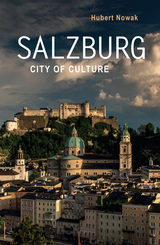 Salzburg: City of Culture
Hubert Nowak
Haus Publishing, 2020 Now in paperback, Nowak reveals the lesser-known side of Salzburg through stories of those who have lived there over the centuries.
Situated in the shadow of the Eastern Alps, Salzburg is known for its majestic baroque architecture, music, cathedrals, and gardens. The city grew in power and wealth as the seat of prince-bishops, found international fame as the birthplace of the beloved composer Mozart, and expanded to become a global destination for travel as a festival city. With all its stunning sights and rich history, Salzburg has become Austria’s second most visited city, drawing visitors from around the world.
Hubert Nowak sets out to reveal the lesser-known side of Salzburg, a small town with international renown. Leaving the famed festival district, he plunges into the narrow façade-lined streets of the old quarter, creating one of the most extensive accounts of the city published in English. Through the stories of those who visited and lived in the city over the centuries, he gives the reader a fresh perspective and gives the old city new life.
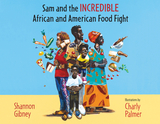 Sam and the Incredible African and American Food Fight
Shannon Gibney
University of Minnesota Press, 2023 Six-year-old Sam, with his Liberian dad and African American mom, finds a way to bring everyone in his cross-cultural family together at the dinner table Rice and okra soup: Sam’s auntie from Liberia made it, and it’s Dad’s favorite. Mom, homegrown in Minnesota, made spaghetti and meatballs. And Sam? He’s just hungry, but no matter what he chooses to eat, someone will be disappointed. Caught in the middle of his family’s African and American food fight, Sam gets a little help from his grumbling stomach—and readers of this seriously funny book by Shannon Gibney get a peek at cultures colliding in a family kitchen that work out in a very delicious way. Charly Palmer’s vibrant and captivating illustrations make this gentle lesson in getting along a bright and colorful visual feast as well. Cassava leaf torbogee or homemade sausage pizza? Sam’s family recipes bring Sam and the Incredible African and American Food Fight to an apt and happy ending—and readers can decide which dinner is best. But, really, why not both?
Sam Dellinger: Raiders of the Lost Arkansas
Robert C. Mainfort
University of Arkansas Press, 2008 This book grew out of an exhibition about Dellinger’s life and work that was curated by Bob Mainfort at the Old State House Museum in Little Rock. The book includes a detailed biography of Dellinger, as well as a discussion of his work, an overview of major collecting efforts in Arkansas by out-of-state institutions, and a history of the University of Arkansas Museum. Lavishly illustrated with over two hundred images of artifacts, this book will now permit archaeologists to see some of the pieces Dellinger’s lifetime of work saved and preserved.
Sam Houston, the Great Designer
By Llerena B. Friend
University of Texas Press, 1954 This biography of Sam Houston goes beyond the romantic frontier life of the "buckskin hero from Tennessee" to examine seriously his role as an American statesman.
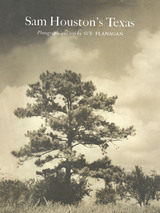 Sam Houston's Texas
Photographs and text by Sue Flanagan
University of Texas Press, 1964 When Sam Houston crossed the Red River for the first time in 1832, he termed Texas the "finest portion of the Globe that has ever blessed my vision." He soon made it his "abiding place" and became a lifelong traveller in his adopted country. By carriage and muleback his diplomatic, military, political, and personal activities took him over what is now the eastern half of the state—and he fell in love with every foot of it. With panoramic vision and broad descriptive power, he expressed his lasting affection for the country in everything he said and wrote. Sue Flanagan, having read every available word by and about Houston and having followed the trail of every trip he made in Texas, here presents the Texas which Houston knew—through his picturesque language and through the camera's carefully focused lens. Her story provides continuity for Houston's activities and perspective for her photographs; it also provides an expression of Houston's views in his own forthright and emphatic manner. But the essence of this book is its 113 photographs. The face of Texas east of San Antonio is pictured in all its varied features. With great patience and discernment, Sue Flanagan brought to bear all the skills of her artistic photography to capture the landscapes, buildings, and objects in the most revealing light and in the best atmospheric conditions for catching the appropriate mood. These spots in nature which Houston saw, these objects which he knew, these houses where he was entertained and where he lived—all are tangible reminders of "this colorful, cagey, and controversial man," this Texas hero whose life was a tragedy in divided loyalties.
 Sam Peckinpah's Feature Films
Bernard F. Dukore
University of Illinois Press, 1999 One of the greatest film directors America has produced, Sam Peckinpah revolutionized the way movies were made. In this detailed and insightful study, Bernard F. Dukore examines Peckinpah's fourteen feature films as a coherent body of work. He investigates the director's virtuosic editing techniques, thematic preoccupations that persist from his earliest to his last films, and the structure of his dramatic depiction of violence. He also addresses Peckinpah's cognizance of existentialism and the substantial traces this interest has left in the films.
At the heart of Dukore's study is an extensive and detailed examination of Peckinpah's distinctive editing techniques. Focusing on representative sequences--including the breakout from the bank and the final battle in The Wild Bunch, the half-hour siege that concludes Straw Dogs, the killing of the title characters of Pat Garrett and Billy the Kid, and combat sequences in Cross of Iron--Dukore provides a shot-by-shot analysis that illuminates Peckinpah's mastery of pacing and mood.
Sam Peckinpah's Feature Films demonstrates that Peckinpah's genius as a director and editor marks not only The Wild Bunch, Straw Dogs, and other classics but also his lesser-known feature films, even those that suffered substantial cuts at the hands of studio producers. Dukore's organic approach to the feature films reveals a highly unified body of work that remains a pointed commentary on power, violence, affection, and moral values.
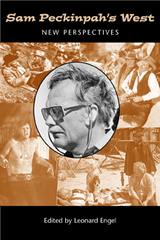 Sam Peckinpah's West
Leonard Engel
University of Utah Press, 2003
"I use violence as it is. It's ugly, brutalizing, and bloody...awful." Vilified for his violent vision of the American West as presented in films such as The Wild Bunch and Pat Garrett and Billy the Kid, the artistry of Sam Peckinpah’s work was largely overlooked in his lifetime. Dismissed by critics, he was essentially ignored in the decade following his untimely death in 1984 at the age of fifty-nine. However, with the publication of a biography in 1994 and Warner Bros.’ theatrical re-release of The Wild Bunch in 1995, Peckinpah reemerged as a distinctive voice in American film.
In Sam Peckinpah’s West eleven scholars approach the director’s oeuvre with an eye toward his minor films, touching on themes and characters previously overlooked and linking his vision to America’s literary and historical traditions. These insightful essays assure us that Peckinpah’s work will not be forgotten again, nor the vibrancy of his characters who go out "not with a whimper, nor even a bang, but a cinematic explosion that rocked Hollywood and riveted us in a way we’ll never forget."
The Samaritan Pentateuch: An Introduction to Its Origin, History, and Significance for Biblical Studi
Robert T. Anderson
SBL Press, 2012 The Samaritan Pentateuch (SP) is the sacred scripture of the Samaritans, a tenacious religious community made famous by Jesus’ Good Samaritan story that persists to this day. Not so widely known is the impact of the SP outside the Samaritan community. Recently there has been a resurgence of interest in this scripture, as evidenced by several translations of the SP as well as reference in Qumran scroll studies to the SP or an SP-like tradition in an effort to describe some of the textual evidence present in the scrolls. This volume presents a general introduction to and overview of the SP, suitable for a course text and as a reference tool for the professional scholar.
Sāmaveda Samhitā of the Kauthuma School: With Padapāṭha and the commentaries of Madhava, Bharatasvāmin and Sayaṇa
B. R. Sharma
Harvard University Press, 2000 The Samaveda contains the earliest tradition of music from India. It presents largely Rigvedic textual material in a form arranged for singing in the solemn Srauta ritual. Since the first editions by Theodor Benfey (1848) and Satyavrata Samasrami (1874–1899), there has been no complete, accented edition that also included all its important commentaries. The present edition is based on manuscripts collected from all over India and Europe. B. R. Sharma, Dean of Samaveda Studies, presents the accented text, its Padapatha, and the commentaries of Madhava, Bharata-Svamin, and Sayana in three volumes totaling 2,500 pages. These contain the Purvarcika and Uttaracika portions of the text, and a third volume the indexes and a detailed introduction to the whole work. Vols. 2 and 3 to appear soon.
Sāmaveda Samhitā of the Kauthuma School: With Padapāṭha and the commentaries of Madhava, Bharatasvāmin and Sayaṇa
B. R. Sharma
Harvard University Press The Sāmaveda contains the earliest tradition of music from India, which is largely Rigvedic textual material in a form arranged for singing in the solemn Srauta ritual. Since the first editions by Theodor Benfey (1848) and Satyavrata Samasrami (1874–1899), there has been no complete, accented edition that has also included all of its important commentaries.
In this work, B. R. Sharma presents an accented edition that is based on manuscripts collected from all over India and Europe. Its Padapāṭha and the commentaries of Madhava, Bharatasvāmin, and Sayana comprise three volumes totaling 2,500 pages.
These volumes contain the Purvarcika and Uttarārcika portions of the text. The third volume, complete with the indexes and a detailed introduction to the whole work, will be published soon.
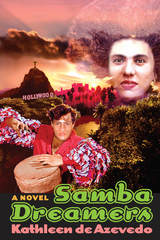 Samba Dreamers
Kathleen de Azevedo
University of Arizona Press, 2006 Rosea spoke, her voice steady. “I was in jail a long time, you know. I’m paying for my sins. Now I live in a dingy apartment. I get to watch my neighbors’ kids play and have a normal life that I’ll never have. I smell their barbecues. I’m already in hell, believe me.” Joe turned to go back to the car. “You don’t know what hell is. You have no idea.”
When José Francisco Verguerio Silva arrives at LAX, fleeing the brutal dictatorship in his native Brazil, he is determined to become Americanized at all costs. He lands a job driving a Hollywood tour bus and posing as Ricky Ricardo. He marries a blonde waitress and becomes the father of twins. Yet happiness remains elusive for Joe as he is haunted by flashbacks of prison torture. And soon a torrid affair with Rosea Socorro Katz, the crazed daughter of Hollywood’s Brazilian star Carmen Socorro, proves to be even more dangerous than the life he has fled.
Rosea spent her childhood watching her mother unravel as the celebrity system toyed with and eventually destroyed her career. Carmen had always claimed to be descended from Amazons, the woman warriors of legend, but she was tamed by Hollywood. Not Rosea. She has just finished serving jail time for setting fire to the home of her ex-husband—in an attempt to destroy his collection of Brazilian artifacts—and sets out to salvage her life.
Along the way, she manages to tear down the lives of everyone she meets. The Brazil of the imagination is shattered in this novel of two tortured souls wrestling with the myths of movies, politics, and the American Dream. Laced with fantastic tales of bird-boys and cannibal rituals, it spins a compelling story of desperation as it reminds us that American freedom and the myth of unbridled opportunity can also consume and destroy.
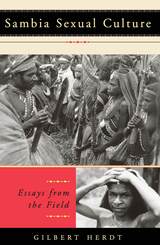 Sambia Sexual Culture: Essays from the Field
Gilbert Herdt
University of Chicago Press, 1999 Few cultures have received as much attention in the study of erotic desire, sexuality, and gender as the Sambia of Papua New Guinea. Here, for the first time, is a collection of groundbreaking essays and a new introduction on the Sambia's sexual culture by the renowned anthropologist Gilbert Herdt.
Over the course of 20 years, Herdt made 13 field trips to live with the Sambia in order to understand sexuality and ritual in the context of warfare and gender segregation. Herdt's essays examine Sambia fetish and fantasy, ritual nose-bleeding, the role of homoerotic insemination, the role of the father and mother in the process of identity formation, and the creation of a "third sex" in nature and culture. He also discusses the representation of homosexuality in cross-cultural literature on premodern societies, arguing that scholars have long viewed desires through the tropes of negative western models. Herdt asks us to reconsider the realities and subjective experiences of desires in their own context, and to rethink how the homoerotic is expressed in radically divergent sexual cultures.
 The Same River Twice: A Boatman's Journey Home
Michael Burke
University of Arizona Press, 2006 In the summer of 1991 Michael Burke, an experienced river guide, embarks on a three-week journey down a series of remote rivers in British Columbia. Leaving behind his pregnant wife, he embraces the perils of a voyage with a companion he barely knows in a raft that may not weather the trip. He attempts to reconcile the shifting fates of his life—his transition from river guide to husband, father, and academic. At the same time, he hopes to explore his connection to a distant relative, Sid Barrington, who was a champion “swiftwater pilot of the North” in the late 19th and early 20th centuries.
As Burke contemplates what he and Sid may have had in common, he meditates on the changing meaning of rivers, and the impossibility of fully recovering the past. In clear and graceful prose, Burke blends Sid’s colorful history with his own uncommon journey. He also reflects upon the quick currents of time and the fierce passion he shares with Sid for the life of river running in Alaska and the west. Unlike most river-running books that often describe waterways in the lower forty-eight states, The Same River Twice introduces readers to rough, austere, and unfamiliar rivers in the northern wilderness. Burke has an intimate understanding of these remote, free-flowing rivers. He effectively captures the thrill of moving water, the spirit of rivers and river canyons, and the life of river guides. This insightful memoir brings readers into a confluence of rivers, where past and present merge, revealing the power of wilderness and the truth about changing course.
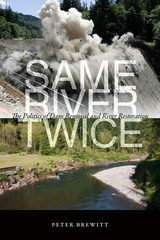 Same River Twice: The Politics of Dam Removal and River Restoration
Peter Brewitt
Oregon State University Press, 2019 Dam removal was not a realistic option in the twentieth century, and people who suggested it were dismissed as radical dreamers. Over the past twenty years, dam removal has become increasingly common, with dozens of removals now taking place each year nationwide.
How did this happen? Same River Twice answers this question by telling the stories of three major Northwestern dam removals – the politics, people, hopes, and fears that shaped three rivers and their communities. Brewitt begins each story with the dam’s construction, shows how its critics gained power, details the conflicts and controversies of removal, and explores the aftermath as the river re-established itself.
Each dam removal offers a unique case study. On the Elwha and Rogue Rivers, dam removal was a multi-decade political brawl; on the Sandy River it was swift and amicable. A key controversy in every case was the loss of the recreational lake created by the dam. Local communities loved their lakes and felt that they were natural, public spaces rather than industrial creations. They fought dam removal with passion and ingenuity. To be successful, dam removal advocates had to learn to weld together mega-coalitions that embraced most interest groups and moved forward together.
While the dams profiled here are all in the Pacific Northwest, dam removal is a national and international phenomenon, and Brewitt’s findings apply everywhere. Written for both a scholarly and a general audience, Same River Twice presents invaluable case studies for scholars of environmental politics, wildlife and public land professionals, environmental activists, and anyone interested in the intersection of politics, public policy, and dam removal.
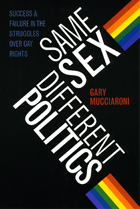 Same Sex, Different Politics: Success and Failure in the Struggles over Gay Rights
Gary Mucciaroni
University of Chicago Press, 2008 Why is it so much harder for American same-sex couples to get married than it is for them to adopt children? And why does our military prevent gays from serving openly even though jurisdictions nationwide continue to render such discrimination illegal? Illuminating the conditions that engender these contradictory policies, Same Sex, Different Politics explains why gay rights advocates have achieved dramatically different levels of success from one policy area to another. The first book to compare results across a wide range of gay rights struggles, this volume explores debates over laws governing military service, homosexual conduct, adoption, marriage and partner recognition, hate crimes, and civil rights. It reveals that in each area, the gay rights movement’s achievements depend both on Americans’ perceptions of its demands and on the political venue in which the conflict plays out. Adoption policy, for example, generally takes shape in a decentralized system of courts that enables couples to target sympathetic judges, while fights for gay marriage generally culminate in legislation or ballot referenda against which it is easier to mount opposition. Brilliantly synthesizing all the factors that contribute to each kind of outcome, Same Sex, Different Politics establishes a new framework for understanding the trajectory of a movement.
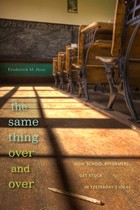 The Same Thing Over and Over: How School Reformers Get Stuck in Yesterday's Ideas
Frederick M. Hess
Harvard University Press, 2010 In this genial and challenging overview of endless debates over school reform, Rick Hess shows that even bitter opponents in debates about how to improve schools agree on much more than they realize—and that much of it must change radically. Cutting through the tangled thickets of right- and left-wing dogma, he clears the ground for transformation of the American school system.
Whatever they think of school vouchers or charter schools, teacher merit pay or bilingual education, most educators and advocates take many other things for granted. The one-teacher–one-classroom model. The professional full-time teacher. Students grouped in age-defined grades. The nine-month calendar. Top-down local district control. All were innovative and exciting—in the nineteenth century. As Hess shows, the system hasn’t changed since most Americans lived on farms and in villages, since school taught you to read, write, and do arithmetic, and since only an elite went to high school, let alone college.
Arguing that a fundamentally nineteenth century system can’t be right for a twenty-first century world, Hess suggests that uniformity gets in the way of quality, and urges us to create a much wider variety of schools, to meet a greater range of needs for different kinds of talents, needed by a vastly more complex and demanding society.
Same-Sex Dynamics among Nineteenth-Century Americans: A MORMON EXAMPLE
D. Michael Quinn
University of Illinois Press, 1996 Winner of the Herbert Feis Award from the American Historical Association and named one of the best religion books of the year by Publishers Weekly, D. Michael Quinn's Same-Sex Dynamics among Nineteenth-Century Americans has elicited critical acclaim as well as controversy. Using Mormonism as a case study of the extent of early America's acceptance of same-sex intimacy, Quinn examines several examples of long-term relationships among Mormon same-sex couples and the environment in which they flourished before the onset of homophobia in the late 1950s.
Same-sex Sexuality in Later Medieval English Culture
Tom Linkinen
Amsterdam University Press, 2015 This volume investigates the state of same-sex relations in later medieval England, drawing on a remarkably rich array of primary sources from the period that include legal documents, artworks, theological treatises, and poetry. Tom Linkinen uses those sources to build a framework of medieval condemnations of same-sex intimacy and desire and then shows how same-sex sexuality reflected - and was inflected by - gender hierarchies, approaches to crime, and the conspicuous silence on the matter in the legal systems of the period.
The Sámi People: Traditions in Transitions
Veli-Pekka Lehtola
University of Alaska Press, 2005 Sámi culture has undergone powerful changes recently. Traditions have been integrated with contemporary influences and perspectives. New kinds of Sámi participation and activism have evolved including innovative politics, informative media, expressive art and literature. Accommodating internal and external changes is nothing novel to the Sámi. The dialogue between what is traditional and what is modern is a natural part of their development towards the maintenance of Sámi cultural distinctness.
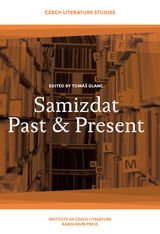 Samizdat Past+Present
Edited by Tomáš Glanc
Karolinum Press, 2019 Much of what we now consider the canon of twentieth-century Czech literature—the work of authors like Bohumil Hrabal, Ludvík Vaculík, and Jáchym Topol, among many others—has, in fact, just recently become widely available to readers. Long published only in censored form or in secret among political dissidents, this body of underground literature is collectively known as samizdat. Samizdat Past and Present provides an expert introduction to these writings and their history, offering insight into both the current wave of literary rediscovery and translation and contemporary debates over censorship. In a diverse array of chapters, Tomáš Glanc gathers together texts from representative figures of Czech samizdat and underground culture of the 1960s to ’80s and provides a useful comparison of Czech, Polish, and Russian samizdat. From literary historians to former samizdat publishers and writers with firsthand experience of communist censorship, secret police, fake trials, and imprisonment, the authors of Samizdat Past and Present illuminate the complexities of a literature written under censorship and the struggle for freedom of thought in a totalitarian regime.
 Sampling and Remixing Blackness in Hip-Hop Theater and Performance
Nicole Hodges Persley
University of Michigan Press, 2021 Sampling and Remixing Blackness is a timely and accessible book that examines the social ramifications of cultural borrowing and personal adaptation of Hip-hop culture by non-Black and non-African American Black artists in theater and performance. In a cultural moment where Hip-hop theater hits such as Hamilton offer glimpses of Black popular culture to non-Black people through musical soundtracks, GIFs, popular Hip-hop music, language, clothing, singing styles and embodied performance, people around the world are adopting a Blackness that is at once connected to African American culture--and assumed and shed by artists and consumers as they please. As Black people around the world live a racial identity that is not shed, in a cultural moment of social unrest against anti-blackness, this book asks how such engagements with Hip-hop in performance can be both dangerous and a space for finding cultural allies. Featuring the work of some of the visionaries of Hip-hop theater including Lin-Manuel Miranda, Sarah Jones and Danny Hoch, this book explores the work of groundbreaking Hip-hop theater and performance artists who have engaged Hip-hop's Blackness through popular performance. The book challenges how we understand the performance of race, Hip-hop and Blackness in the age of Instagram, TikTok and Facebook. In a cultural moment where racial identity is performed through Hip-hop culture's resistance to the status quo and complicity in maintaining it, Hodges Persley asks us to consider who has the right to claim Hip-hop's blackness when blackness itself is a complicated mixtape that offers both consent and resistance to transgressive and inspiring acts of performance.
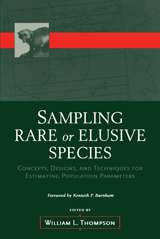 Sampling Rare or Elusive Species: Concepts, Designs, and Techniques for Estimating Population Parameters
Edited by William L. Thompson
Island Press, 2005 Information regarding population status and abundance of rare species plays a key role in resource management decisions. Ideally, data should be collected using statistically sound sampling methods, but by their very nature, rare or elusive species pose a difficult sampling challenge. Sampling Rare or Elusive Species describes the latest sampling designs and survey methods for reliably estimating occupancy, abundance, and other population parameters of rare, elusive, or otherwise hard-to-detect plants and animals. It offers a mixture of theory and application, with actual examples from terrestrial, aquatic, and marine habitats around the world. Sampling Rare or Elusive Species is the first volume devoted entirely to this topic and provides natural resource professionals with a suite of innovative approaches to gathering population status and trend data. It represents an invaluable reference for natural resource professionals around the world, including fish and wildlife biologists, ecologists, biometricians, natural resource managers, and all others whose work or research involves rare or elusive species.
SAMPSON REED: PRIMARY SOURCE MATERIAL FOR EMERSON STUDIES
George F. Dole
Swedenborg Foundation Publishers, 1992
This short work is a collection of four essays by nineteenth-century author and transcendentalist Samson Reed. "A Dissertation: On the Evidence from the Light of Nature of a Future Retribution" is a religious treatise that laid the groundwork for his aesthetic theory; the "Oration on Genius" is a vibrant speech which is probably America's earliest Romantic manifesto; "Observations on the Growth of the Mind" reflects the aesthetic theory embraced by Ralph Waldo Emerson and the New England transcendentalists; and Reed's preface to the 1838 edition of "Observations," which showed his growing disenchantment with the transcendentalist movement he helped to inspire.
Edited by George F. Dole, the collection contains a preface by Sylvia Montgomery Shaw giving the historical context to these writings.
 Samskrta-Subodhini: A Sanskrit Primer
Madhav M. Deshpande
University of Michigan Press, 1999 Saṃskṛta-Subodinī: A Sanskrit Primer marks the culmination of Professor Deshpande’s experience of teaching Sanskrit at the University of Michigan for over twenty-five years. Tested in classes at Michigan and elsewhere and successively improved for over twenty years, the teaching materials in the book now offer an effective tool to learn and teach Sanskrit. The focus is Sanskrit as a language, rather than as a religious or mystical entity. Deshpande’s primer also simplifies the process of learning Sanskrit by dissociating this language-learning process from the heavy burdens imposed both by the tradition of Indo-European linguistics and the tradition of indigenous Sanskrit grammarians in India. By treating Sanskrit as a productive language, rather than as a dead language merely to be deciphered, the book represents a significant advance over the traditional Western approach to the study of Sanskrit. Work on this book began in 1976, and now almost two generations of Professor Deshpande's students have used successively improved versions. The book’s examples include many modified versions of classical Sanskrit passages from epic texts such as the Mahabharata and the Ramayana. The book also contains examples from Hindu, Buddhist, and Jain traditions, as well as samples of Sanskrit poetry and satire.
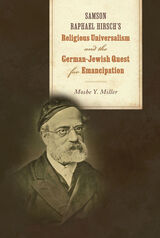 Samson Raphael Hirsch's Religious Universalism and the German-Jewish Quest for Emancipation
Moshe Y. Miller
University of Alabama Press An account of how Rabbi Samson Raphael Hirsch promulgated an inclusive vision of Judaism in the context of advancing the civic equality of German Jews in the nineteenth century In Samson Raphael Hirsch’s Religious Universalism and the German-Jewish Quest for Emancipation, Moshe Miller contends that nineteenth-century German Jews of all denominations actively sought acceptance within German society and aspired to achieve full emancipation from the many legal strictures on their status as citizens and residents. While non-Orthodox Jews sought a large measure of cultural assimilation, Orthodox Jews were content with more delimited acculturation, but they were no less enthusiastic about achieving emancipation and acceptance in German society. There was one issue, though, which was seen by non-Jewish critics of emancipation as a barrier to granting civic rights to Jews: namely, the alleged tribalism of Judaism and the supposedly chauvinistic notion of Jews as “the Chosen People.” These charges could not go unanswered, and in the writings of Rabbi Samson Raphael Hirsch (1808–1888), the leading thinker of the Orthodox camp, they did not. Hirsch stressed the universalism of the Jewish ethic and the humanistic concern for the welfare of all mankind, which he believed was one of the core teachings of Judaism. His colleagues in the German Orthodox rabbinate largely concurred with Hirsch’s assessment. Samson Raphael Hirsch’s Religious Universalism and the German-Jewish Quest for Emancipation places Hirsch’s views in their historical context and provides a detailed account of his attitude toward non-Jews and the Christianity practiced by the vast majority of nineteenth-century Europeans.
 Samuel Barber: His Life and Legacy
Howard Pollack
University of Illinois Press, 2023 A pivotal twentieth-century composer, Samuel Barber earned a long list of honors and accolades that included two Pulitzer Prizes for Music and the public support of conductors like Arturo Toscanini, Serge Koussevitzky, and Leonard Bernstein. Barber’s works have since become standard concert repertoire and continue to flourish across high art and popular culture. Acclaimed biographer Howard Pollack (Aaron Copland, George Gershwin) offers a multifaceted account of Barber’s life and music while placing the artist in his social and cultural milieu. Born into a musical family, Barber pursued his artistic ambitions from childhood. Pollack follows Barber’s path from his precocious youth through a career where, from the start, the composer consistently received prizes, fellowships, and other recognition. Stylistic analyses of works like the Adagio for Strings, the Violin Concerto, Knoxville: Summer of 1915 for voice and orchestra, the Piano Concerto, and the operas Vanessa and Antony and Cleopatra, stand alongside revealing accounts of the music’s commissioning, performance, reception, and legacy. Throughout, Pollack weaves in accounts of Barber’s encounters with colleagues like Aaron Copland and Francis Poulenc, performers from Eleanor Steber and Leontyne Price to Vladimir Horowitz and Van Cliburn, patrons, admirers, and a wide circle of eminent friends and acquaintances. He also provides an eloquent portrait of the composer’s decades-long relationship with the renowned opera composer Gian Carlo Menotti. Informed by new interviews and immense archival research, Samuel Barber is a long-awaited critical and personal biography of a monumental figure in twentieth-century American music.
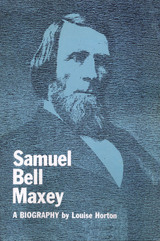 Samuel Bell Maxey: A Biography
By Louise Horton
University of Texas Press, 1974 Samuel Bell Maxey was an important political figure in nineteenth-century Texas, but no previous book-length study of his life and career has been published. Louise Horton has utilized his private papers as well as numerous other sources in preparing this biography, which includes many of Maxey's own comments on his contemporaries. The letters also provide new information on the development of railroads across the Southwest. An emigrant from Kentucky, Samuel Bell Maxey practiced law in North Texas, raised a regiment at the beginning of the Civil War, returned to Texas to defend the Indian Territory during 1863-1865, and was elected on his first candidacy to be the first Democratic senator from Texas after the Civil War. After two years in office he became Texas's senior senator and held that position until defeated by John H. Reagan in 1887. Maxey's term of office spanned the turbulent period immediately following Reconstruction, and a great deal of his influence derived from his moderation. He was concerned that the breach caused by the Civil War be healed. He was influential among Republican congressmen from the North and aided substanially in Texas's regaining its status in the Union. Louise Horton's biography of Maxey emphasizes the contribution he made to the state and the nation and fills a gap in the history of the post-Civil War period.
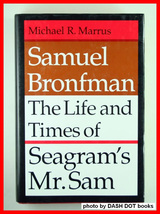 Samuel Bronfman: The Life and Times of Seagram’s Mr. Sam
Michael R. Marrus
Brandeis University Press, 1991 As the creator of the Seagram whiskey empire Sam Bronfman became a mythic figure in the business world, and in the years after his death the legend has developed further and further away from the life. Now for the first time the complete story of the man and the business he built is available. Sam Bronfman was according to Business Week "a volatile, shrewd, and highly individualistic leader [whose] technical knowledge and financial acumen remain unchallenged." For over twenty years, Forbes noted, Sam judged the U.S. market correctly -- as virtually no one else did. The story includes the passing on of the vast Seagram enterprise to the leadership of his sons, Edgar and Charles. Samuel Bronfman's father failed as a wheat farmer and then found success selling frozen fish, firewood and horses. At this point young Sam observed to his father, "The bar makes more profits than we do. Instead of selling horses, we should be selling the drinks." And thus began what was to become the Seagram whiskey empire. Sam's insight and timing were right as Canada, and especially the United States, were coming under the influence of the temperance movement. While legend often places Sam in the thick of Prohibition era bootlegging and rum running, in fact he built for the long term and kept his operations within both the law and its loopholes as he supplied American bootleggers. Sam demonstrated his marketing genius by insisting on quality in a business notorious for cutting corners and thereby set the standard for the industry in the decades to follow. Sam's success in penetrating the American market was such that after Prohibition his competitors lobbied the federal government for his protection. While Samuel Bronfman is a classic rags to riches tale, it is also the story of a Jew who remained in many ways outside business and social establishments even after becoming internationally famous. Commuting every week between his Montreal and New York office, his was a private life centered on his family and their home in Montreal and summer places such as Tarrytown, New York. In the 1950s Sam, under instructions from his daughter Phyllis Lambert, commissioned Mies van der Rohe to design a new corporate headquarters, the Seagram building at 375 Park Avenue, a landmark on the New York City skyline. As a leader of the Jewish community Sam was elected president of the Canadian Jewish Congress in 1939, and went on to organize financial aid to the fledgling state of Israel, beginning decades long involvement in Jewish affairs and support for the Jewish state. Sam was an intuitive leader and manager who knew his industry inside out and set the highest standards for his products and himself. His life makes a fascinating tale of business, power, wealth, and ethnic politics.
 The Samuel Gompers Papers, Volume 13: Cumulative Index
Samuel Gompers, Edited by Peter J. Albert and Grace Palladino
University of Illinois Press, 2013 Samuel Gompers (1850–1924) devoted his life to improving the conditions of American workers through better wages, shorter workdays, and safer workplaces, achieved through common effort, democratic organization, and practical action. His objective was betterment, or, as he often said, "more." His moral vision was grounded in a commitment to social justice and a passion for service. A cigar maker by trade, he became the American Federation of Labor's first president in 1886 and, except for one year, remained its president until his death, guiding it through prosperity and recession, war and peacetime. By the time Gompers died, the AFL was a major force on the national scene and had claimed over four million members. Gompers was a tireless writer and impassioned speaker, and he left behind an immense archive of articles and editorials, addresses and testimony before a variety of audiences, and extensive correspondence with allies and adversaries alike. His correspondents included trade unionists and political leaders, reformers and radicals, captains of industry defending their positions, and workers asking for help or advice. The twelve volumes of The Samuel Gompers Papers, edited by Stuart B. Kaufman, Peter J. Albert, and Grace Palladino, for the first time make Gompers' wide-ranging and complex documentary legacy accessible to scholars, students, historians, and serious readers in the labor movement and among the public at large. This invaluable comprehensive index provides a key to the Gompers volumes. It not only allows quick reference to individual documents but permits scholars to see at a glance the contours and emphases in subject matter and locate the substantive annotations of key individuals and unions, strikes and lockouts, conferences and meetings, and legislation and key concepts in the history of the Gompers era.
 Samuel Gridley Howe: Social Reformer
Harold Schwartz
Harvard University Press This readable book is the first authoritative biography of Samuel Gridley Howe, the remarkable Bostonian who actively participated in most of the major reform movements of the nineteenth century. He founded the Perkins School for the Blind which quickly became the foremost institution of its type in the world. There he developed techniques for teaching the deaf-blind, the first man in history to succeed in this field. He supported Horace Mann in reforming the public school system and Dorothea Dix in protecting the interests of the insane. After 1845, he spent most of his energies, political and literary, in abolitionist activities. Yet he found time to give his medical services in the Greek war of independence 1825-1830, and in our Civil War; and he worked on the presidential commission sent to Santo Domingo in 1871.
Schwartz traces Howe's public career, but he also describes Howe's childhood, his choice of a medical career, his membership--together with Longfellow, Cornelius Felton, Charles Sumner, and George Hillard--in the social circle called the Five of Clubs, and his marriage to Julia Ward. This book carries the full flavor of mid-nineteenth-century Boston.
Howe's own activities, the reform movements he supported, and the striking individuals with whom he was associated are merged into one integrated story. The spotlight often shifts from Howe to Horace Mann, John Brown, Theodore Parker, Laura Bridgman, and--most of all--Charles Sumner; and in the background we can see the slow development of the slavery issue, which eventually overrode all other reform movements. Here too is the story of a marriage: Julia Ward Howe led but half a life with a husband whose ideas about a woman's place did not stretch to include her talents.
Schwartz bases his admirable biography on extensive research in primary, and largely untouched, sources: these include the Howe papers--which contain many letters to Mann, Parker, and Sumner, and never used by their biographers--the Sumner and Laura Bridgman papers, and contemporary newspapers as well as Howe's own books, pamphlets, and articles. Schwartz is thus able to cast new light onthe personalities of the Bostonian reformers: harsh, sanctimonious, or unfair as they might appear to their opponents, they were, Schwartz reminds us, basically earnest men who, by acting on their faith in progress and their sense of duty to the helpless did, in fact, improve the lot of humanity.
 Samuel Johnson: A Biography
Peter Martin
Harvard University Press, 1974 Bewigged, muscular and for his day unusually tall, adorned in soiled, rumpled clothes, beset by involuntary tics, opinionated, powered in his conversation by a prodigious memory and intellect, Samuel Johnson (1709–1784) was in his life a literary and social icon as no other age has produced. “Johnsonianissimus,” as Boswell called him, became in the hands of his first biographers the rationalist epitome and sage of Enlightenment. These clichés—though they contain elements of truth—distort the complexity of the public and private Johnson. Peter Martin portrays a Johnson wracked by recriminations, self-doubt, and depression—a man whose religious faith seems only to have deepened his fears. His essays, scholarship, biography, journalism, travel writing, sermons, fables, as well as other forms of prose and poetry in which he probed himself and the world around him, Martin shows, constituted rational triumphs against despair and depression. It is precisely the combination of enormous intelligence and frank personal weakness that makes Johnson’s writing so compelling.
Benefiting from recent critical scholarship that has explored new attitudes toward Johnson, Martin’s biography gives us a human and sympathetic portrait of Dr. Johnson. Johnson’s criticism of colonial expansion, his advocacy for the abolition of slavery, his encouragement of women writers, his treatment of his female friends as equals, and his concern for the underprivileged and poor make him a very “modern” figure. The Johnson that emerges from this enthralling biography, published for the tercentenary of Johnson’s birth, is still the foremost figure of his age but a more rebellious, unpredictable, flawed, and sympathetic figure than has been previously known.
 Samuel Johnson: A Survey and Bibliography of Critical Studies
James L. Clifford and Donald J. Greene
University of Minnesota Press, 1970 Samuel Johnson was first published in 1970. Minnesota Archive Editions uses digital technology to make long-unavailable books once again accessible, and are published unaltered from the original University of Minnesota Press editions. For anyone interested in the work of Samuel Johnson and his place in eighteenth-century studies, this bibliography will be of great value, for it includes virtually everything of importance that has been written about Johnson from his own lifetime to the present. In addition, Professors Clifford and Greene, in an introductory essay, survey and evaluate the changing attitudes toward Johnson through the entire period covered in the bibliography. This volume is a revision and enlargement of Professor Clifford's earlier work Johnsonian Studies, 1887–1950: A Survey and Bibliography,long recognized as an indispensable tool for the study of Samuel Johnson, his circle, and his times, and now out of print. The present volume contains nearly four thousand bibliographical entries, grouped under twenty-five subject headings, and arranged chronologically within each classification. This arrangement enables the student to trace the development of the scholarship of the various aspects of Johnson's life and work. A detailed author and subject index to the whole volume makes it easy for him to find the description of the particular book or article for which he is searching.
Samuel Johnson and Moral Discipline
Paul Kent Alkon
Northwestern University Press, 1967 Paul Kent Alkon’s Samuel Johnson and Moral Discipline provides reading of Johnson that emphasizes his moral discourse. Shortly after its publication, Alkon’s book became first of all the standard reading of Johnson’s essays, contrasting them with the moral ideas Johnson discussed in his sermons, as moral writings, and second, as one of the first books on Johnson to explore the essayist’s focus on moral thinking as central to his writing.
 Samuel Johnson: Selected Writings: A Tercentenary Celebration
Samuel Johnson
Harvard University Press, 2011 Thanks to Boswell’s monumental biography of Samuel Johnson, we remember Dr. Johnson today as a great wit and conversationalist, the rationalist epitome and the sage of the Enlightenment. He is more often quoted than read, his name invoked in party conversation on such diverse topics as marriage, sleep, deceit, mental concentration, and patriotism, to generally humorous effect. But in Johnson’s own day, he was best known as an essayist, critic, and lexicographer: a gifted writer possessed of great force of mind and wisdom. Writing a century after Johnson, Ruskin wrote of Johnson’s essays: He “taught me to measure life, and distrust fortune…he saved me forever from false thoughts and futile speculations.” Peter Martin here presents “the heart of Johnson,” a selection of some of Johnson’s best moral and critical essays. At the center of this collection are the periodical essays from the Rambler, Adventurer, and Idler. Also included are Johnson’s great moral fable, Rasselas; the Prefaces to the Dictionary and his edition of Shakespeare; and selections from Lives of the Poets. Together, these works—allied in their literary, social, and moral concerns—are the ones that continue to speak urgently to readers today.
 Samuel Johnson: The Life of an Author
Lawrence Lipking
Harvard University Press, 1998 He was a servant to the public, a writer for hire. He was a hero, an author adding to the glory of his nation. But can a writer be both hack and hero? The career of Samuel Johnson, recounted here by Lawrence Lipking, proves that the two can be one. And it further proves, in its enduring interest for readers, that academic fashions today may be a bit hasty in pronouncing the "death of the author."
A book about the life of an author, about how an author is made, not born, Lipking's Samuel Johnson is the story of the man as he lived--and lives--in his work. Tracing Johnson's rocky climb from anonymity to fame, in the course of which he came to stand for both the greatness of English literature and the good sense of the common reader, the book shows how this life transformed the very nature of authorship.
Beginning with the defiant letter to Chesterfield that made Johnson a celebrity, Samuel Johnson offers fresh readings of all the writer's major works, viewed through the lens of two ongoing preoccupations: the urge to do great deeds--and the sense that bold expectations are doomed to disappointment. Johnson steers between the twin perils of ambition and despondency. Mounting a challenge to the emerging industry that glorified and capitalized on Shakespeare, he stresses instead the playwright's power to cure the illusions of everyday life. All Johnson's works reveal his extraordinary sympathy with ordinary people. In his groundbreaking Dictionary, in his poems and essays, and in The Lives of the English Poets, we see Johnson becoming the key figure in the culture of literacy that reaches from his day to our own.
Samuel Pepys in the Diary
Percival Hunt
University of Pittsburgh Press, 1958
In this work, the reader experiences the life of Samuel Pepys and his freinds, great and small, in seventeenth-century London. We see great men of war, business and letters, enhanced by Percival Hunt’s comprehensive bibliography.
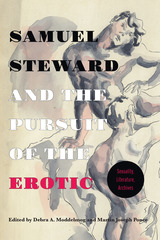 Samuel Steward and the Pursuit of the Erotic Sexuality, Literature, Archives: Sexuality, Literature, Archives
Edited by Debra A. Moddelmog and Martin Joseph Ponce
Ohio State University Press, 2017 Samuel Steward and the Pursuit of the Erotic: Sexuality, Literature, Archives examines one of the most fascinating sexual renegades of the twentieth century and the social, cultural, pedagogical, and erotic projects with which he was engaged. This innovative collection, edited by Debra A. Moddelmog and Martin Joseph Ponce, examines the life and work of Samuel Steward at their most daring and controversial. Samuel Steward—writer, literature professor, visual artist, tattoo artist, sexual archivist, unofficial sexologist, and vernacular pornographer—gave voice and vision to some of the central concerns of twentieth-century U.S. gay culture and politics. These essays frame Steward not merely as an associate or a lover of more well-known luminaries but as a significant cultural figure in his own right, one whose work anticipated some of the current aims and methods of queer studies.
With work by prominent scholars in queer, transgender, and sexuality studies, and with topics such as the queer archive, hoarding, masochism, the queer mystery, race and desire, sexology, and gay pornography, Samuel Steward and the Pursuit of the Erotic will appeal to a wide range of readers across a variety of disciplines invested in queer experience. Closing on a personal recollection from one of Steward’s last close friends, the volume will also appeal to readers interested in the personal aspects of this fascinating, idiosyncratic figure’s multifaceted life.
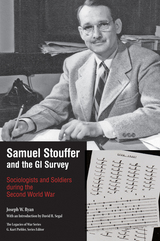 Samuel Stouffer and the GI Survey: Sociologists and Soldiers during the Second World War
Joseph W. Ryan
University of Tennessee Press, 2013 Samuel Stouffer, a little-known sociologist from Sac City, Iowa, is likely not a name World War II historians associate with other stalwart men of the war, such as Eisenhower, Patton, or MacArthur. Yet Stouffer, in his role as head of the Army Information and Education Division’s Research Branch, spearheaded an effort to understand the citizen-soldier, his reasons for fighting, and his overall Army experience. Using empirical methods of inquiry to transform general assumptions about leadership and soldiering into a sociological understanding of a draftee Army, Stouffer perhaps did more for the everyday soldier than any general officer could have hoped to accomplish.
Stouffer and his colleagues surveyed more than a half-million American GIs during World War II, asking questions about everything from promotions and rations to combat motivation and beliefs about the enemy. Soldiers’ answers often demonstrated that their opinions differed greatly from what their senior leaders thought soldier opinions were, or should be. Stouffer and his team of sociologists published monthly reports entitled “What the Soldier Thinks,” and after the war compiled the Research Branch’s exhaustive data into an indispensible study popularly referred to as The American Soldier. General George C. Marshall was one of the first to recognize the value of Stouffer’s work, referring to The American Soldier as “the first quantitative studies of the . . . mental and emotional life of the soldier.” Marshall also recognized the considerable value of The American Soldier beyond the military. Stouffer’s wartime work influenced multiple facets of policy, including demobilization and the GI Bill. Post-war, Stouffer’s techniques in survey research set the state of the art in the civilian world as well.
Both a biography of Samuel Stouffer and a study of the Research Branch, Samuel Stouffer and the GI Survey illuminates the role that sociology played in understanding the American draftee Army of the Second World War. Joseph W. Ryan tracks Stouffer’s career as he guided the Army leadership toward a more accurate knowledge of their citizen soldiers, while simultaneously establishing the parameters of modern survey research. David R. Segal’s introduction places Stouffer among the elite sociologists of his day and discusses his lasting impact on the field. Stouffer and his team changed how Americans think about war and how citizen-soldiers were treated during wartime. Samuel Stouffer and the GI Survey brings a contemporary perspective to these significant contributions.
 Samuel Taylor Coleridge and the Anglican Church
Luke Savin Herrick Wright
University of Notre Dame Press, 2010 "Wright's book establishes, persuasively, that Coleridge's radicalism, both political and theological, was indeed fleeting and that Coleridge made a very significant contribution to what has been called 'the gathering forces of Toryism.' Further, the book traces Coleridge's adaptation of Hooker as he confronted, theologically, the writings of Sacheverell and Warburton and, ultimately, traces his idea of a clerisy and influence on Gladstone and thus the Oxford Movement." --Richard S. Tomlinson, Richland College
"This erudite analysis of Coleridge's theology will provide scholars and critics with valuable new perspectives on a difficult subject." --Duncan Wu, Georgetown University
This book is the first systematic historical examination of Samuel Taylor Coleridge's prose religious works. Coleridge (1772-1834), the son of a clergyman, "was born and died a communicating member of the Church of England." He was a prolific writer on the subject of the relationship between church and state. At age twenty-three, Coleridge published his first theological work, Lectures on Revealed Religion, which focused on the concept of reason facilitating virtue. Luke Wright maintains that this theme unites Coleridge's theological writings, including the posthumous Confessions of an Inquiring Spirit (1935). Although he was an advocate of radical politics in the 1790s, by the time Coleridge published The Friend (1809), he had become high Tory. His major contribution to Anglican religious discourse was the revival of the Tory position on church and state, which saw the two as an organic unity rather than separate entities forming an alliance. His writings were vigorously opposed to the Court Whig theory of church and state. After Coleridge's death in 1834, his arguments were taken up by William Gladstone and carried forward. Wright's careful reconstruction of Coleridge's dedication to church-state issues provides a new perspective on the writer himself and on the intellectual history of early nineteenth-century England.
"This is an impressively focused work detailing Coleridge's biographical journey through radical politics and high Toryism with an initial and final commitment to Anglicanism, despite encounters and affiliations with other denominations. . . . [A]n original work of scholarship that contributes to an understanding of Coleridge's thought and to the study of church-state theory of the nineteenth century." --Claire Colebrook, Pennsylvania State University
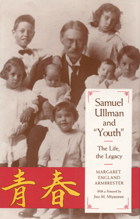 Samuel Ullman and "Youth": The Life, the Legacy
Margaret E. Armbrester
University of Alabama Press, 2009 Examines a poem that has not only withstood the vicissitudes of time, but has spread around the world like the waves lapping at a beach
Thousands of wonderful and sometimes strange fads have captured the public fancy in the almost five decades since the end of World War II. Most have been short-lived and soon faded away. There is, however, a poem that has not only withstood the vicissitudes of time, but has spread around the world like the waves lapping at a beach. This is the poem "Youth," by Samuel Ullman.
In December 1945, the Reader’s Digest published the poem and reported that General Douglas MacArthur, Commander of the Allied Forces, Far East, kept a copy of the poem near his desk.
Around that time, Yoshio Okada, a Japanese businessman, bought a copy of that December 1945 edition of the Reader's Digest, read the poem and was deeply affected by it. He translated it into Japanese and displayed it in his office as a guiding inspiration. Many of Okada's friends read the poem and were fascinated by its beauty. It began to receive national publicity through newspapers and magazines and became popular throughout Japan, especially among the intellectual community. Part of the reason for this widespread popularity is the excellence of the translation. Yoshio Okada, a man of noble character, gifted with a profound philosophy of life and literary talent, translated the poem into a beautiful, soulstirring Japanese version.
Samuel Ullman's “Youth” reflects the truth of life, and his outcry of spirituality touches the intrinsic nature of man.
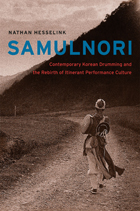 SamulNori: Contemporary Korean Drumming and the Rebirth of Itinerant Performance Culture
Nathan Hesselink
University of Chicago Press, 2012 In 1978, four musicians crowded into a cramped basement theater in downtown Seoul, where they, for the first time, brought the rural percussive art of p’ungmul to a burgeoning urban audience. In doing so, they began a decades-long reinvention of tradition, one that would eventually create an entirely new genre of music and a national symbol for Korean culture. Nathan Hesselink’s SamulNori traces this reinvention through the rise of the Korean supergroup of the same name, analyzing the strategies the group employed to transform a museum-worthy musical form into something that was both contemporary and historically authentic, unveiling an intersection of traditional and modern cultures and the inevitable challenges such a mix entails. Providing everything from musical notation to a history of urban culture in South Korea to an analysis of SamulNori’s teaching materials and collaborations with Euro-American jazz quartet Red Sun, Hesselink offers a deeply researched study that highlights the need for traditions—if they are to survive—to embrace both preservation and innovation.
Samurai and Silk: A Japanese and American Heritage
Haru Matsukata Reischauer
Harvard University Press, 1986 Samurai and Silk is a rare treasure: a book of penetrating insight into the Japanese character and the forging of modern Japan from the feudal Tokugawa shoguns to present day economic titans. Only Haru Reischauer could have written this extraordinary family account, beginning with her two illustrious grandfathers: one, a provincial samurai who became a founding father of the Meiji government; the other, a scion of a wealthy and enterprising peasant family who almost single-handedly developed the silk trade with America. Their remarkable stories, and those of their notable descendants, demonstrate the unbounded vision and determination that explain so much about Japan's legendary success.
 Samurai in the Land of the Gaucho: Transpacific Modernity and Nikkei Literature in Argentina
Koichi Hagimoto
Vanderbilt University Press, 2023 Winner of the 2024 Marysa Navarro Best Book Prize, New England Council for Latin American Studies (NECLAS)
In the early twentieth century, historical imaginings of Japan contributed to the Argentine vision of “transpacific modernity." Intellectuals such as Eduardo Wilde and Manuel Domecq García celebrated Japanese customs and traditions as important values that can be integrated into Argentine society. But a new generation of Nikkei or Japanese Argentines is rewriting this conventional narrative in the twenty-first century. Nikkei writers such as Maximiliano Matayoshi and Alejandra Kamiya are challenging the earlier, unapologetic view of Japan based on their own immigrant experiences.
Compared to the experience of political persecution against Japanese immigrants in Brazil and Peru, the Japanese in Argentina generally lived under a more agreeable sociopolitical climate. In order to understand the "positive" perception of Japan in Argentine history and literature, Samurai in the Land of the Gaucho turns to the current debate on race in Argentina, particularly as it relates to the discourse of whiteness. One of the central arguments is that Argentina's century-old interest in Japan represents a disguised method of (re)claiming its white, Western identity.
Through close readings of diverse genres (travel writing, essay, novel, short story, and film) Samurai in the Land of the Gaucho yields a multi-layered analysis in order to underline the role Japan has played in both defining and defying Argentine modernity from the twentieth century to the present.
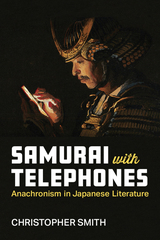 Samurai with Telephones: Anachronism in Japanese Literature
Christopher Smith
University of Michigan Press, 2024 What is going on when a graphic novel has a twelfth-century samurai pick up a telephone to make a call, or a play has an ancient aristocrat teaching in a present-day schoolroom? Rather than regarding such anachronisms as errors, Samurai with Telephones develops a theory of how texts can use different types of anachronisms to challenge or rewrite history, play with history, or open history up to new possibilities. By applying this theoretical framework of anachronism to several Japanese literary and cultural works, author Christopher Smith demonstrates how different texts can use anachronism to open up history for a wide variety of different textual projects.
From the modern period, this volume examines literature by Mori Ōgai and Ōe Kenzaburō, manga by Tezuka Osamu, art by Murakami Takashi, and a variety of other pop cultural works. Turning to the Early Modern period (Edo period, 1600–1868), which produced a literature rich with playful anachronism, he also examines several Kabuki and Bunraku plays, kibyōshi comic books, and gōkan illustrated novels. In analyzing these works, he draws a distinction between anachronisms that attempt to hide their work on history and convincingly rewrite it and those conspicuous anachronisms that highlight and disrupt the construction of historical narratives.
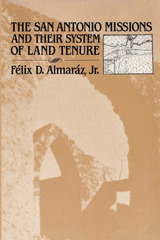 The San Antonio Missions and their System of Land Tenure
By Félix D. Almaráz, Jr.
University of Texas Press, 1989 San Antonio, Texas, is unique among North American cities in having five former Spanish missions: San Antonio de Valero (The Alamo; founded in 1718), San José y San Miguel de Aguayo (1720), Nuestra Señora de la Purísima Concepción de Acuña (1731), San Juan Capistrano (1731), and San Francisco de la Espada (1731). These missions attract a good deal of popular interest but, until this book, they had received surprisingly little scholarly study. The San Antonio Missions and Their System of Land Tenure, a winner in the Presidio La Bahía Award competition, looks at one previously unexamined aspect of mission history—the changes in landownership as the missions passed from sacred to secular owners in the late eighteenth and early nineteenth centuries. Drawing on exhaustive research in San Antonio and Bexar County archives, Félix Almaráz has reconstructed the land tenure system that began with the Spaniards' jurisprudential right of discovery and progressed through colonial development, culminating with ownership of the mission properties under successive civic jurisdictions (independent Mexico, Republic of Texas, State of Texas, Bexar County, and City of San Antonio). Several broad questions served as focus points for the research. What were the legal bases for the Franciscan missions as instruments of the Spanish Empire? What was the extent of the initial land grants at the time of their establishment in the eighteenth century? How were the missions' agricultural and pastoral lands configured? And, finally, what impact has urbanization had upon the former Franciscan foundations? The findings in this study will be valuable for scholars of Texas borderlands and Hispanic New World history. Additionally, genealogists and people with roots in the San Antonio missions area may find useful clues to family history in this extensive study of landownership along the banks of the Río San Antonio.
 San Antonio Rose: The Life and Music of Bob Wills
Charles R. Townsend; Discography and filmusicography by Bob Pinson
University of Illinois Press, 1976 "Until Hank Williams came along, it was just Bob Willis," says Willie Nelson. "He was it." And indeed he was, especially for the thousands in the Southwest who knew and loved the King of Western Swing. The colorful band leader-composer-fiddler from Turkey, Texas, lassoed the emotions of country-and-western fans nationwide. In the early 1940s, his records outsold those of any other recording artist. He was voted not only into the Country Music Hall of Fame but also into the National Cowboy Hall of Fame, the only performer other than Gene Autry to be so honored. Affectionately written by a Texan who responded to the legendary fiddler's style, San Antonio Rose captures Wills's magnetism and the musical excitement he created. Charles R. Townsend traces Wills's dynamic life from his birth into a family of frontier fiddlers through his career and stardom and on to the poignant last recording session in 1973 and his death two years later. Townsend shows how Wills brought black and white music together and examines the tremendous impact he had on both popular and country music through the more than 550 selections he recorded and the forty years he and his Texas Playboys performed in dance halls and on radio.
 San Camilo, 1936: The Eve, Feast, and Octave of St. Camillus of the Year 1936 in Madrid
Camilo José Cela
Duke University Press, 1991 Widely regarded as one of the best works by the winner of the 1989 Nobel Prize for Literature, San Camilo, 1936 appears here for the first time in English translation. One of Spain’s most popular writers, Camilo José Cela is recognized for his experiments with language and with difficult subject matter. In San Camilo, 1936, first published in 1969, these concerns converge in a fascinating narrative that is as challenging as it is rewarding, as troubling as it is compelling.
A story of history as it happens, by turns confusing and startingly clear, echoing with news and rumors, defined by grand gestures and intimate pauses, the novel leads the reader into the ordinary life of extraordinary times. Beginning on the eve of the Spanish Civil War, San Camilo, 1936 follows a twenty-year-old student’s attempts to sort out his private affairs (sex, money, career) in the midst of the turmoil overtaking his country. In vivid and richly textured prose that distinguishes Cela’s work, the emotional reality of civil war takes on a vibrant immediacy that is humorous, tender, and ultimately transforming as a young man tries to come to terms with the historical moment he inhabits—and hopes to survive.
Readers new to Cela will find in this novel ample reason for the author’s growing reputation among audiences worldwide.
The San Carlos Indian Cattle Industry
Harry T. Getty
University of Arizona Press, 1963 The Anthropological Papers of the University of Arizona is a peer-reviewed monograph series sponsored by the School of Anthropology. Established in 1959, the series publishes archaeological and ethnographic papers that use contemporary method and theory to investigate problems of anthropological importance in the southwestern United States, Mexico, and related areas.
San Francisco, 1846-1856: From Hamlet to City
Roger W. Lotchin
University of Illinois Press, 1997 Now back in print with a new introduction by the author, this is the classic study of America's most admired instant city, from its days as a sleepy Mexican village, through the Gold Rush and into its establishment as a major international port. Roger Lotchin examines the urbanizing influences in San Francisco and compares these to other urban centers, doing so against a colorful backdrop of opium dens and other sinful institutions.
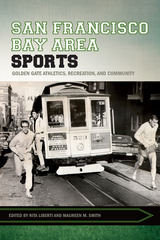 San Francisco Bay Area Sports: Golden Gate Athletics, Recreation, and Community
Rita Liberti
University of Arkansas Press, 2017 San Francisco Bay Area Sports brings together fifteen essays covering the issues, controversies, and personalities that have emerged as northern Californians recreated and competed over the last 150 years. The area’s diversity, anti-establishment leanings, and unique and beautiful natural surroundings are explored in the context of a dynamic sporting past that includes events broadcast to millions or activities engaged in by just a few. Professional and college events are covered along with lesser-known entities such as Oakland’s public parks, tennis player and Bay Area native Rosie Casals, environmentalism and hiking in Marin County, and the origins of the Gay Games. Taken as a whole, this book clarifies how sport is connected to identities based on sexuality, gender, race, and ethnicity. Just as crucial, the stories here illuminate how sport and recreation can potentially create transgressive spaces, particularity in a place known for its nonconformity.
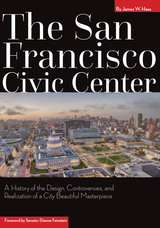 The San Francisco Civic Center: A History of the Design, Controversies, and Realization of a City Beautiful Masterpiece
James Haas
University of Nevada Press, 2019 San Francisco is known and loved around the world for its iconic man-made structures, such as the Golden Gate Bridge, cable cars, and Transamerica Pyramid. Yet its Civic Center, with the grandest collection of monumental municipal buildings in the United States, is often overlooked, drawing less global and local interest, despite its being an urban planning marvel featuring thirteen government office and cultural buildings.
In The San Francisco Civic Center, James Haas tells the complete story of San Francisco’s Civic Center and how it became one of the most complete developments envisioned by any American city. Originally planned and designed by John Galen Howard in 1912, the San Francisco Civic Center is considered in both design and materials one of the finest achievements of the American reformist City Beautiful movement, an urban design movement that began more than a century ago.
Haas meticulously unravels the Civic Center’s story of perseverance and dysfunction, providing an understanding and appreciation of this local and national treasure. He discusses why the Civic Center was built, how it became central to the urban planning initiatives of San Francisco in the early twentieth century, and how the site held onto its founders’ vision despite heated public debates about its function and achievement. He also delves into the vision for the future and related national trends in city planning and the architectural and art movements that influenced those trends.
Riddled with inspiration and leadership as well as controversy, The San Francisco Civic Center, much like the complex itself, is a stunning manifestation of the confident spirit of one of America’s most dynamic and creative cities.
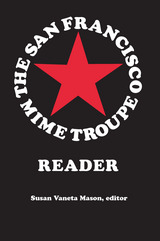 The San Francisco Mime Troupe Reader
Susan Vaneta Mason, Editor
University of Michigan Press, 2005 The San Francisco Mime Troupe Reader is a long-overdue collection of some of the finest political satires created and produced by the Tony Award-winning company during the last forty years.
It is also a history of the company that was the theater of the counterculture movement in the 1960s and that, against all odds, has managed to survive the often hostile economic climate for the arts in the United States. The plays selected are diverse, representing some of the Troupe's finest shows, and the book's illustrations capture some of the Troupe's most memorable moments.
These hilarious, edgy, and imaginative scripts are accompanied by insightful commentary by theater historian and critic Susan Vaneta Mason, who has been following the Troupe for more than three decades. The Mime Troupe Reader will engage and entertain a wide range of audiences, not only general readers but also those interested in the history of American social protest, the counterculture of the 1960s-particularly the San Francisco scene-and the evolution of contemporary political theater. It will also appeal to the legions of Troupe fans who return every year to see them stand up against another social or corporate Goliath.
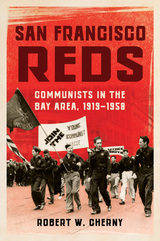 San Francisco Reds: Communists in the Bay Area, 1919-1958
Robert W. Cherny
University of Illinois Press, 2024 Founded in 1919, the Communist Party (CP) in San Francisco survived an ineffectual early period to become a force in the trade union heyday of the 1930s. Robert Cherny uses the lives and careers of more than fifty members to tell the story of the city’s CP from its founding through 1958. Cherny draws on FBI files, the records of the CP at the Russian State Archive for Social and Political History, interviews, and memoirs to follow male and female party and union leaders, rank-and-file members, and others. His history reveals why people joined the CP while charting the frequent changes in policy, constant member turnover, and disruptive factionalism that limited party aims and successes. Cherny also follows his subjects through their resignations, expulsions, or other reasons for departure and looks at the CP’s influence on their lives in subsequent years. Vivid and exhaustively researched, San Francisco Reds is a long view account of the personal motivations and activism of an Old Left generation in a West Coast city.
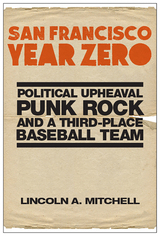 San Francisco Year Zero: Political Upheaval, Punk Rock and a Third-Place Baseball Team
Lincoln A. Mitchell
Rutgers University Press, 2019 San Francisco is a city of contradictions. It is one of the most socially liberal cities in America, but it also has some of the nation’s worst income inequality. It is a playground for tech millionaires, with an outrageously high cost of living, yet it also supports vibrant alternative and avant-garde scenes. So how did the city get this way?
In San Francisco Year Zero, San Francisco native Lincoln Mitchell traces the roots of the current situation back to 1978, when three key events occurred: the assassination of George Moscone and Harvey Milk occurring fewer than two weeks after the massacre of Peoples Temple members in Jonestown, Guyana, the explosion of the city’s punk rock scene, and a breakthrough season for the San Francisco Giants. Through these three strands, Mitchell explores the rifts between the city’s pro-business and progressive-left politicians, the emergence of Dianne Feinstein as a political powerhouse, the increasing prominence of the city’s LGBT community, punk’s reinvigoration of the Bay Area’s radical cultural politics, and the ways that the Giants helped unify one of the most ethnically and culturally diverse cities in the nation.
Written from a unique insider’s perspective, San Francisco Year Zero deftly weaves together the personal and the political, putting a human face on the social upheavals that transformed a city.
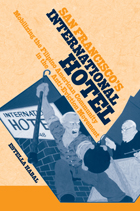 San Francisco's International Hotel: Mobilizing the Filipino American Community in the Anti-Eviction Movement
Estella Habal
Temple University Press, 2008 The struggle to save the International Hotel and prevent the eviction of its elderly residents became a focal point in the creation of the contemporary Asian American movement, especially among Filipinos. Like other minorities who were looking for positive models in their past to build an identity movement, Filipino youth found their "roots" in the stories and lives of the "manongs" (respected elders), and the anti-eviction movement became a key site for the formation of a distinct Filipino American consciousness. Estella Habal, a student activist during the anti-eviction protests, relates this history within the context of the broader left politics of the era, the urban housing movement, and San Francisco city politics. Ultimately, the hotel was razed, but a new one now occupies the site and commemorates the residents and activists who fought for low-income housing for the elderly and their right to remain in their own community.
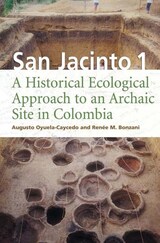 San Jacinto 1: A Historical Ecological Approach to an Archaic Site in Colombia
Augusto Oyuela-Caycedo and Renee M. Bonzani
University of Alabama Press, 2005 A significant work of neotropical archaeology presenting evidence of early hunter-gatherers who produced fiber-tempered ceramics. Few topics in the development of humans have prompted as much interest and debate as those of the origins of pottery and agriculture. The first appearance of pottery in any area of the world is heralded as a new stage in the progress of humans toward a more complex arrangement of thought and society. Cultures are defined and separated by the occurrence of pottery types, and the association of pottery with mobility and agriculture continues to drive research in anthropology. For these reasons, the discovery of the earliest fiber-tempered pottery in the New World and carbonized remains identified as maize kernels is exciting. San Jacinto 1 is the archaeological site located in the savanna region of the north coast of Colombia, South America, where excavations by led by the authors have revealed evidence of mobile hunter-gatherers who made pottery and who collected and processed plants from 6000 to 5000 B.P. The site is believed to show an early human adaptation to the tropics in the context of significant environmental changes that were taking place at the time. This volume presents the data gathered and the interpretations made during excavation and analysis of the San Jacinto 1 site. By examining the social activities of a human population in a highly seasonal environment, it adds greatly to our contemporary understanding of the historical ecology of the tropics. Study of the artifacts excavated at the site allows a window into the early processes of food production in the New World. Finally, the data reveals that the origins of ceramic technology in the tropics were tied to a reduction in mobility and an increase in territoriality and are widely applicable to similar studies of sedentism and agriculture worldwide.
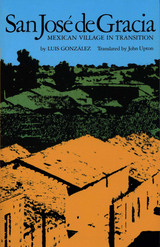 San José de Gracia: Mexican Village in Transition
By Luis González
University of Texas Press, 1974 The village of San José de Gracia is not mentioned in any history of Mexico, nor is it referred to in any of the annals of the state of Michoacán. It is not to be found at all on most maps, and almost none show its correct location. It is an unknown point in space, in time, and in the consciousness of the Mexican republic. In Luis González's classic history of the world of San José, he turns his attention in every direction: toward what is lasting and what is ephemeral, everyday and unusual, material and spiritual. The story is, to some extent, the story of rural life anywhere, in any age; to some extent it is peculiar to the world of the peasant all through Mexico's history; and to some extent it can be said to be true only of San José. The history of San José is also the history of the village as victim of the megalopolis, not only in Mexico but everywhere in our time. With the small community will be lost traditions and a sense of continuity that may prove irreplaceable and essential to human wellbeing. While Luis González does not suggest that he knows what the fate of San José will be, one feels that he knows all too well, and that his questions are only "How?" and "How soon?"
San Juan Bautista: Gateway to Spanish Texas
By Robert S. Weddle
University of Texas Press, 1968 Winner, Presidio La Bahia Award, Sons of the Republic of Texas, 1978 In their efforts to assert dominion over vast reaches of the (now U.S.) Southwest in the seventeenth century, the Spanish built a series of far-flung missions and presidios at strategic locations. One of the most important of these was San Juan Bautista del Río Grande, located at the present-day site of Guerrero in Coahuila, Mexico. Despite its significance as the main entry point into Spanish Texas during the colonial period, San Juan Bautista was generally forgotten until the first publication of this book in 1968. Weddle's narrative is a fascinating chronicle of the many religious, military, colonial, and commerical expeditions that passed through San Juan and a valuable addition to knowledge of the Spanish borderlands. It won the Texas Institute of Letters Amon G. Carter Award for Best Southwest History in 1969.
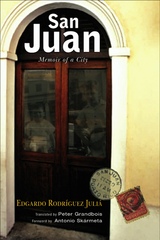 San Juan: Memoir of a City
Edgardo Rodriguez Julia; Translated by Peter Grandbois
University of Wisconsin Press, 2007 San Juan: Memoir of a City conducts readers through Puerto Rico's capital, guided by one of its most graceful and reflective writers, Edgardo Rodríguez Juliá. No mere sightseeing tour, this is culture through immersion, a circuit of San Juan's historical and intellectual vistas as well as its architecture.
In the allusive cityscape he recreates, Rodríguez Juliá invokes the ghosts of his childhood, of San Juan's elder literati, and of characters from his own novels. On the most tangible level, the city is a place of cabarets and cockfighting clubs, flâneurs and beach bums, smoke-filled bars and honking automobiles. Poised between a colonial past and a commercial future, the San Juan he portrays feels at times perilously close to the pitfalls of modernization. Tenement houses and fading mansions yield to strip malls and Tastee Freezes; asphalt hems in jacarandas and palm trees. "In Puerto Rico," he muses, "life is not simply cruel, it is also busy erasing our tracks." Through this book—available here in English for the first time—Rodríguez Juliá resists that erasure, thoughtfully etching a palimpsest that preserves images of the city where he grew up and rejoicing in the one where he still lives. Best Books for Regional General Audiences, selected by the American Association of School Librarians and the Public Library Association
 San Lorenzo: A Florentine Church
Robert W. Gaston
Harvard University Press This comprehensive, interdisciplinary collection illuminates many previously unexplored aspects of the Basilica of San Lorenzo’s history, extending from its Early Christian foundation to the modern era. Brunelleschi’s rebuilt Basilica, the center of liturgical patronage of the Medici and their grand-ducal successors until the nineteenth century, is today one of the most frequently studied churches in Florence. Modern research has tended, however, to focus on the remarkable art and architecture from ca. 1400–1600.
In this wide-ranging collection, scholars investigate: the urban setting of the church and its parish; San Lorenzo’s relations with other ecclesiastical institutions; the genesis of individual major buildings of the complex and their decorations; the clergy, chapels and altars; the chapter’s administration and financial structure; lay and clerical patronage; devotional furnishings, music, illuminated liturgical manuscripts, and preaching; as well as the annual or ephemeral festal practices on the site. Each contribution offers a profound exploration of its topic, wide-ranging in its chronological scope. One encounters here fresh archival research, the publication of relevant documents, and critical assessments of the historiography. San Lorenzo is represented in this volume as a living Florentine institution, continually reshaped by complex historical forces.
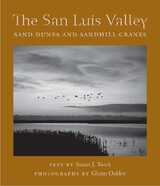 The San Luis Valley: Sand Dunes and Sandhill Cranes
Text by Susan J. Tweit; Photographs by Glenn Oakley
University of Arizona Press, 2005 It is a high valley edged by serrated peaks, a remote expanse the size of Connecticut lying, as if forgotten, between two mountain ranges. Here, North America’s tallest sand dunes blow against glacier-gouged summits, the Rio Grande begins its long journey from snowflake to saltwater, and vast reaches of desert scrub hide verdant pocket wetlands. Colorado’s San Luis Valley is not a place for the timid. Sizzling hot in summer, frigid cold in winter, this huge landscape is humbling in its openness, a place defined by the rhythms of nature—and by the thrust and parry of male courting female in the ritual dance of sandhill cranes. These majestic birds arrive by the thousands twice a year to feed, rest, and socialize in the valley’s wetlands—invisible except from the air—and their cries temper the constant wind. Susan Tweit lives in the high desert of southern Colorado not far from the valley’s dunes and wetlands. With the precision of a scientist and the passion of a poet, she guides readers through this land of sand dunes and sandhill cranes, describing its natural features and tracing its human history from buffalo hunters and conquistadors to Hispanic farming communities and UFO observatories. And in stunning images, photographer Glenn Oakley brings his intimate feel for light and landscape to portraying not only the subtle beauty of this high-desert sanctuary but also the grandeur of the cranes in flight. As an intimate look at Great Sand Dunes National Park and Preserve and the San Luis Valley, this book reveals a desert place as seductive and sobering as existence itself.
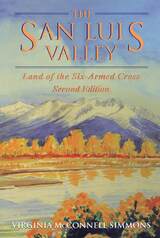 The San Luis Valley, Second Edition: Land of the Six-Armed Cross
Virginia McConnell Simmons
University Press of Colorado, 1999 Human habitation in Colorado's San Luis Valley stretches back to distant times. Ancient peoples lived there thousands of years ago, as did the Utes, who claim the valley has been theirs forever. Others, both native peoples and Europeans, knew the valley-Don Juan de Oñate claimed the valley for King Phillip II of Spain in 1598. Consequently, the San Luis Valley has many stories, told in many voices. In this sparkling new edition of The San Luis Valley: Land of the Six-Armed Cross, Virginia McConnell Simmons lays before the reader the stories and voices of this multicultural land. Ranging from prehistoric peoples and historic Indians to early Spanish settlers, trappers, American explorers, railroads, and Euro-American pioneers, this book is a comprehensive volume covering the geography and social history of Colorado's San Luis Valley. New to the second edition is additional material on Hispanic culture (in particular a description of their fiber arts) and a lengthy appendix cataloging and describing all of the San Luis Valley's Hispanic place names. In addition, the notes and bibliography have been expanded, and the book contains a new introduction by David Fridtjof Halaas, Chief Historian of the Colorado Historical Society. Acclaimed as the standard history for the south-central region of Colorado, The San Luis Valley: Land of the Six-Armed Cross is a book for students, scholars, and others interested in the history of this fascinating and culturally rich corner of the state.
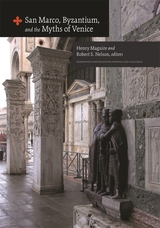 San Marco, Byzantium, and the Myths of Venice
Henry Maguire
Harvard University Press, 2010 The church of San Marco of Venice has long played a central role in Venetian political, ceremonial, and religious life. Its renowned assemblage of mosaics, sculpture, metalwork, and reliquaries are, in origin, Roman, Byzantine, Venetian, or Venetian imitation of Byzantine designs. In San Marco, Byzantium, and the Myths of Venice, the authors assess the significance of the embellishment of the church and its immediate surroundings, especially during the thirteenth and fourteenth centuries, when most of the Byzantine material was acquired, largely from Constantinople. The church and its decoration are studied in relation to Venice’s interests abroad and on mainland Italy. The authors address the diverse styles, sources, meanings, and significance of this art, both individually and as an ensemble.
Building upon developments in scholarship since Otto Demus’s masterly studies of the church, the book offers new insights into the inspiration, purposes, and mutability of San Marco and the myths that inspired and motivated Venetians.
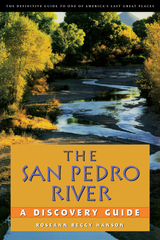 The San Pedro River: A Discovery Guide
Roseann Beggy Hanson
University of Arizona Press, 2001 The San Pedro River in southeastern Arizona not only features some of the richest wildlife habitat in the Southwest, it also is home to more kinds of animals than anywhere else in the contiguous United States. Here you'll find 82 species of mammals, dozens of different reptiles and amphibians, and nearly 400 species of birds—more than half of those recorded in the entire country. In addition, the river supports one of the largest cottonwood-willow forest canopies remaining in Arizona. It's little wonder that the San Pedro was named by the Nature Conservancy as one of the Last Great Places in the Northern Hemisphere, and by the American Bird Conservancy as its first Important Bird Area in the United States.
Roseann Hanson has spent much of her life exploring the San Pedro and its environs and has written a book that is both a personal celebration of and a definitive guide to this, the last undammed and unchanneled river in the Southwest. Taking you from the San Pedro's entry into the U.S. at the Mexican border to its confluence with the Gila River about a hundred miles north, she devotes a separate chapter to each of seven sections of river. Each chapter contains an eloquent essay on natural and cultural history, laced with Hanson's own experiences, plus an exploration guide brimming with useful information: how to get to the river, finding hiking trails, camping and other accommodations, birdwatching tips, access to biking and horseback riding, and nearby historic sites. Maps are included for each stretch of river, and the text is illustrated throughout with drawings from Roseann's copious field notebooks. Along the 40 miles of the San Pedro Riparian National Conservation Area, a sanctuary protected by the Bureau of Land Management since 1988, Hanson shows how the elimination of cattle and off-road vehicles has restored the river corridor to a more natural condition. She tells of the impact of humans on the San Pedro, from Clovis hunters to American settlers to Washington bureaucrats, and shows how, as the river winds its way north, it is increasingly threatened by groundwater pumping and urbanization.
In addition to the "discovery" sections of each chapter, Hanson has included species checklists for habitats and plants, birds, mammals, and reptiles and amphibians to make this a perfect companion for anyone exploring the area, whether as occasional tourist or frequent visitor. The book's blending of graceful prose and practical information shows that a river is the sum of many parts. Roseann Hanson will give you a special understanding—and perhaps a sense of stewardship—of this wild place.
San Rock Art
J.D. Lewis-Williams
Ohio University Press, 2011 San rock paintings, scattered over the range of southern Africa, are considered by many to be the very earliest examples of representational art. There are as many as 15,000 known rock art sites, created over the course of thousands of years up until the nineteenth century. There are possibly just as many still awaiting discovery. Taking as his starting point the magnificent Linton panel in the Iziko-South African Museum in Cape Town, J. D. Lewis-Williams examines the artistic and cultural significance of rock art and how this art sheds light on how San image-makers conceived their world. It also details the European encounter with rock art as well as the contentious European interaction with the artists’ descendants, the contemporary San people.
 The Sanchez Family: Mexican American High School and Collegiate Wrestlers from Cheyenne, Wyomin
Jorge Iber
University of Wyoming Press, 2025 The Sanchez Family is a family history detailing the Sanchez family’s experiences as immigrants to Wyoming and the ways that their US-born children’s interest in wrestling had cascading impacts across generations. By focusing on a sport and a state that have not received much attention, Jorge Iber conveys the importance of athletics as a part of the educational experience of the Latino community.
The first members of this particular Sanchez clan arrived in Wyoming during the early decades of the twentieth century. The first-generation American grandchildren of these families—Gilbert, David, Arthur, and Ray—used wrestling to radically alter their social and economic status by attending college with athletic scholarships, graduating, and moving on to professional, middle-class careers. Subsequent generations of the family followed their fathers and uncles to the mats at various institutions, also going on to earn degrees and enter professional occupations. Indeed, Iber contends that wrestling became the family’s “business,” the mechanism by which the Sanchezes extricated themselves from Cheyenne’s working class.
Revealing a previously unstudied aspect of Mexican American life in the state, The Sanchez Family sheds light on another vehicle for the educational, social, and economic advancement of Latinos in other parts of the United States. The first book to examine the role of wrestling in the lives of Mexican Americans, it serves as a foundational text for Latino studies of sports and constructing racial counterscripts.
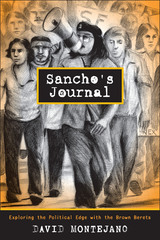 Sancho's Journal: Exploring the Political Edge with the Brown Berets
By David Montejano
University of Texas Press, 2012 How do people acquire political consciousness, and how does that consciousness transform their behavior? This question launched the scholarly career of David Montejano, whose masterful explorations of the Mexican American experience produced the award-winning books Anglos and Mexicans in the Making of Texas, 1836–1986, a sweeping outline of the changing relations between the two peoples, and Quixote’s Soldiers: A Local History of the Chicano Movement, 1966–1981, a concentrated look at how a social movement “from below” began to sweep away the last vestiges of the segregated social-political order in San Antonio and South Texas. Now in Sancho’s Journal, Montejano revisits the experience that set him on his scholarly quest—“hanging out” as a participant-observer with the South Side Berets of San Antonio as the chapter formed in 1974. Sancho’s Journal presents a rich ethnography of daily life among the “batos locos” (crazy guys) as they joined the Brown Berets and became associated with the greater Chicano movement. Montejano describes the motivations that brought young men into the group and shows how they learned to link their individual troubles with the larger issues of social inequality and discrimination that the movement sought to redress. He also recounts his own journey as a scholar who came to realize that, before he could tell this street-level story, he had to understand the larger history of Mexican Americans and their struggle for a place in U.S. society. Sancho’s Journal completes that epic story.
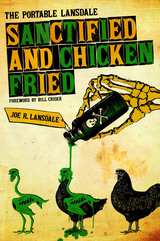 Sanctified and Chicken-Fried: The Portable Lansdale
By Joe R. Lansdale
University of Texas Press, 2009 Master of mojo storytelling, spinner of over-the-top yarns of horror, suspense, humor, mystery, science fiction, and even the Old West, Joe R. Lansdale has attracted a wide and enthusiastic following. His genre-defying work has brought him numerous awards, including the Grand Master of Horror from the World Horror Convention, the Edgar Award, the American Horror Award, seven Bram Stoker awards, the British Fantasy Award, Italy's Grinzane Prize for Literature, as well as Notable Book of the Year recognition twice from the New York Times. Sanctified and Chicken-Fried is the first "true best of Lansdale" anthology. It brings together a unique mix of well-known short stories and excerpts from his acclaimed novels, along with new and previously unpublished material. In this collection of gothic tales that explore the dark and sometimes darkly humorous side of life and death, you'll meet traveling preachers with sinister agendas, towns lost to time, teenagers out for a good time who get more than they bargain for, and gangsters and strange goings-on at the end of the world. Out of the blender of Lansdale's imagination spew tall tales about men and mules, hogs and races, that are, in his words, "the equivalent of Aesop meets Flannery O'Connor on a date with William Faulkner, the events recorded by James M. Cain." Whether you're a long-time fan of Joe R. Lansdale or just discovering his work, this anthology brings you the best of a writer whom the New York Times Book Review has praised for having "a folklorist's eye for telling detail and a front-porch raconteur's sense of pace."
 Sanctifying Signs: Making Christian Tradition in Late Medieval England
David Aers
University of Notre Dame Press, 2004 "David Aers is one of the most experienced and accomplished scholars in Middle English studies. His consistently bracing and dynamic work has opened up many extremely fertile areas in the field." --James Simpson, Cambridge University
Concentrating on the sacrament of the altar, poverty, and conflicting versions of sanctity, Sanctifying Signs presents a critical study of Christian literature, theology, and culture in late medieval England. In this notable book, David Aers considers the diverse ways in which certain late medieval Christians and their Church engaged the immense resources of the Christian tradition in their own historical moment. Using a wide range of texts, Aers explores the complex theological, institutional, and political processes that shape and preserve tradition during changing circumstances. He is particularly interested in why some texts were judged by the late medieval Church to be orthodox and others heretical, and the effect of these judgments on the conversations and debates of the fourteenth and fifteenth centuries.
Sanctifying Signs begins with accounts of the sacrament of the altar that were deemed orthodox in the late medieval Church. Aers then shifts his focus to the relationship between sanctification and the sign of poverty. Finally, he reflects on the relationship between some versions of domesticity and sanctification. Texts of William Langland, John Wyclif, Walter Brut, William Thorpe, and others are examined within the context of a broad range of earlier and contemporary writings and events. Through these modes of exploration Aers seeks to understand and reinvigorate a theological, ethical, ecclesiological, and political conversation that has been pursued through a variety of rhetorical forms since the late Middle Ages.
Students and scholars of medieval literature and theology will find David Aers's trenchant new work to be an invaluable resource.
DAVID AERS is James B. Duke Professor of English at Duke University.
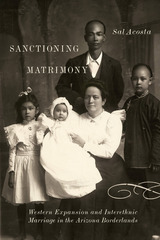 Sanctioning Matrimony: Western Expansion and Interethnic Marriage in the Arizona Borderlands
Sal Acosta
University of Arizona Press, 2016 Marriage, divorce, birth, baptism, and census records are the essential records of a community. Through them we see who marries, who divorces, and how many children are born. Sal Acosta has studied a broad base of these vital records to produce the largest quantitative study of intermarriage of any group in the West. Sanctioning Matrimony examines intermarriage in the Tucson area between 1860 and 1930. Unlike previous studies on intermarriage, this book examines not only intermarriages of Mexicans with whites but also their unions with blacks and Chinese.
Following the Treaty of Mesilla (1853), interethnic relationships played a significant part in the Southwest. Acosta provides previously unseen archival research on the scope and tenor of interracial marriages in Arizona. Contending that scholarship on intermarriage has focused on the upper classes, Acosta takes us into the world of the working and lower classes and illuminates how church and state shaped the behavior of participants in interracial unions.
Marriage practices in Tucson reveal that Mexican women were pivotal in shaping family and social life between 1854 and 1930. Virtually all intermarriages before 1900 were, according to Acosta, between Mexican women and white men, or between Mexican women and blacks or Chinese until the 1920s, illustrating the importance of these women during the transformation of Tucson from a Mexican pueblo to an American town.
Acosta’s deep analysis of vital records, census data, and miscegenation laws in Arizona demonstrates how interethnic relationships benefited from and extended the racial fluidity of the Arizona borderlands.
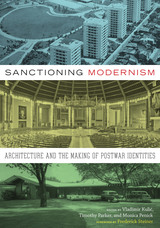 Sanctioning Modernism: Architecture and the Making of Postwar Identities
Edited by Vladimir Kulic, Timothy Parker, and Monica Penick
University of Texas Press, 2014 With new research on building programs in political, religious, and domestic settings in the United States and Europe, this collection of essays offers a fresh look at postwar modernism and the role that architecture played in constructing modern identities. In the decades following World War II, modern architecture spread around the globe alongside increased modernization, urbanization, and postwar reconstruction—and it eventually won widespread acceptance. But as the limitations of conventional conceptions of modernism became apparent, modern architecture has come under increasing criticism. In this collection of essays, experienced and emerging scholars take a fresh look at postwar modern architecture by asking what it meant to be “modern,” what role modern architecture played in constructing modern identities, and who sanctioned (or was sanctioned by) modernism in architecture. This volume presents focused case studies of modern architecture in three realms—political, religious, and domestic—that address our very essence as human beings. Several essays explore developments in Czechoslovakia, Romania, and Yugoslavia and document a modernist design culture that crossed political barriers, such as the Iron Curtain, more readily than previously imagined. Other essays investigate various efforts to reconcile the concerns of modernist architects with the traditions of the Roman Catholic Church and other Christian institutions. And a final group of essays looks at postwar homebuilding in the United States and demonstrates how malleable and contested the image of the American home was in the mid-twentieth century. These inquiries show the limits of canonical views of modern architecture and reveal instead how civic institutions, ecclesiastical traditions, individual consumers, and others sought to sanction the forms and ideas of modern architecture in the service of their respective claims or desires to be modern.
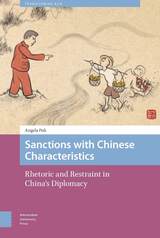 Sanctions with Chinese Characteristics: Rhetoric and Restraint in China's Diplomacy
Angela Poh
Amsterdam University Press, 2021 The view that China has become increasingly assertive under President Xi Jinping is now a common trope in academic and media discourse. However, until the end of Xi Jinping’s first term in March 2018, China had been relatively restrained in its use of coercive economic measures. This is puzzling given the conventional belief among scholars and practitioners that sanctions are a middle ground between diplomatic and military/paramilitary action.
Using a wide range of methods and data — including in-depth interviews with 76 current and former politicians, policy-makers, diplomats, and commercial actors across 12 countries and 16 cities — Sanctions with Chinese Characteristics: Rhetoric and Restraint in China’s Diplomacy examines the ways in which China had employed economic sanctions to further its political objectives, and the factors explaining China’s behaviour. This book provides a systematic investigation into the ways in which Chinese decisionmakers approached sanctions both at the United Nations Security Council and unilaterally, and shows how China’s longstanding sanctions rhetoric has had a constraining effect on its behaviour, resulting in its inability to employ sanctions in complete alignment with its immediate interests.
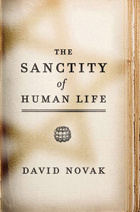 The Sanctity of Human Life
David Novak
Georgetown University Press, 2007 Heated debates are not unusual when confronting tough medical issues where it seems that moral and religious perspectives often erupt in conflict with philosophical or political positions. In The Sanctity of Human Life, Jewish theologian David Novak acknowledges that it is impossible not to take into account the theological view of human life, but the challenge is how to present the religious perspective to nonreligious people. In doing so, he shows that the two positions—the theological and the philosophical—aren't as far apart as they may seem. Novak digs deep into Jewish scripture and tradition to find guidance for assessing three contemporary controversies in medicine and public policy: the use of embryos to derive stem cells for research, socialized medicine, and physician-assisted suicide. Beginning with thinkers like Plato, Aristotle, Kant, and Nietsche, and drawing on great Jewish figures in history—Maimonides, Rashi, and various commentators on the Torah (written law) and the Mishnah (oral law)—Novak speaks brilliantly to these modern moral dilemmas. The Sanctity of Human Life weaves a rich and sophisticated tapestry of evidence to conclude that the Jewish understanding of the human being as sacred, as the image of God, is in fact compatible with philosophical claims about the rights of the human person—especially the right to life—and can be made intelligible to secular culture. Thus, according to Novak, the use of stem cells from embryos is morally unacceptable; the sanctity of the human person, and not capitalist or socialist approaches, should drive our understanding of national health care; and physician-assisted suicide violates humankind's fundamental responsibility for caring for one another. Novak's erudite argument and rigorous scholarship will appeal to all scholars and students engaged in the work of theology and bioethics.
The Sanctity of Social Life: Physician's Treatment of Critically Ill Patients
Diana Crane
Russell Sage Foundation, 1975 Reexamines the nature of death and dying as seen from the physician's point of view. Unlike other treatments of the subject, this study is concerned not with what physician's should do for the critically ill, but with their actual behavior. Based on extensive interviews with physicians in several medical specialties, more than 3000 questionnaires completed by physicians in four specialties, and studies of the records of actual hospital patients, the book shows that while withdrawal of treatment in certain types of cases is widespread, euthanasia is rare.
 The Sanctity of the Leaders: Holy Kings, Princes, Bishops and Abbots from Central Europe (11th to 13th Centuries)
Gábor Klaniczay
Central European University Press, 2023 The latest title in the Central European Medieval Texts series contains the lives of saints who were canonized in the eleventh through thirteenth centuries in the newly Christianized countries of Central and Eastern Europe (Bohemia, Poland, Hungary, and Dalmatia). A rejoinder to the earlier volume in the series, the Saints of the Christianization Age of Central Europe (CEMT, Vol. 6), containing hermits, missionaries, and martyrs, this second volume of hagiography is dominated by political or ecclesiastical leaders who became saintly patrons of their region and were highly venerated throughout the Middle Ages. The legends in the volume present the two Hungarian holy kings Stephen and Ladislas, the holy duke Emeric, the Czech holy abbot Prokop of Sázava, three bishops, the Venetian-Hungarian Gellért of Csanád, the Polish Stanislas of Cracow (both martyrs), and the Dalmatian holy bishop Saint John of Trogir. Each “vita” is published in Latin original with an English translation and with prefaces discussing the textual tradition. Saints’ lives have been recognized as an invaluable source of information on social and economic history, the history of mentalities and everyday life, cultural history, and, above all, as a special genre with crucial importance and prevalence in medieval literature.
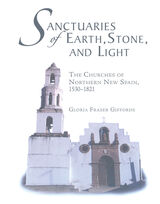 Sanctuaries of Earth, Stone, and Light: The Churches of Northern New Spain, 1530-1821
Gloria Fraser Giffords
University of Arizona Press, 2007 Over nearly three centuries, Jesuit, Franciscan, and Dominican missionaries built a network of churches throughout the “new world” of New Spain. Since the early twentieth century, scholars have studied the colonial architecture of southern New Spain, but they have largely ignored the architecture of the north. However, as this book clearly demonstrates, the colonial architecture of Northern New Spain—an area that encompasses most of the southwestern United States and much of northern Mexico—is strikingly beautiful and rich with meaning. After more than two decades of research, both in the field and in archives around the world, Gloria Fraser Giffords has authored the definitive book on this architecture.
Giffords has a remarkable eye for detail and for images both grand and diminutive. Because so many of the buildings she examines have been destroyed, she sleuthed through historical records in several countries, and she discovered that the architecture and material culture of northern New Spain reveal the influences of five continents. As she examines objects as large as churches or as small as ornamental ceramic tile she illuminates the sometimes subtle, sometimes striking influences of the religious, social, and artistic traditions of Europe (from the beginning of the Christian era through the nineteenth century), of the Muslim countries ringing the Mediterranean (from the seventh through the fifteenth centuries), and of Northern New Spain’s indigenous peoples (whose art influenced the designs of occupying Europeans).
Sanctuaries of Earth, Stone, and Light is a pathbreaking book, featuring 200 stunning photographs and over 300 illustrations ranging from ceremonial garments to detailed floor plans of the churches.
 Sanctuary Everywhere: The Fugitive Sacred in the Sonoran Desert
Barbara Andrea Sostaita
Duke University Press, 2024 In Sanctuary Everywhere, Barbara Andrea Sostaita reimagines practices of sanctuary along the U.S.-Mexico border in order to explore the possibilities for radical fugitivity in the face of militarized border enforcement. After the 2016 presidential election, churches, universities, cities, and even states began declaring themselves sanctuaries. Sostaita proposes that these calls for expanded sanctuary are insufficient when dealing with the everyday workings of immigration enforcement. Through fieldwork in migrant clinics, shelters, and the Sonoran Desert, Sostaita demonstrates that, as a sacred practice, sanctuary cannot be fixed in any one destination or mandate. She turns to those working to create sanctuary on the move, from a deported nurse offering medical care on the border to incarcerated migrant women denying rules on touch in detention facilities to collectives set up to honor those who died crossing the border. Understanding sanctuary to be a set of fugitive practices that escapes the everyday, Sostaita shows us how, in the wake of extreme violence and loss, migrants create sanctuaries of their own to care for the living and the dead.
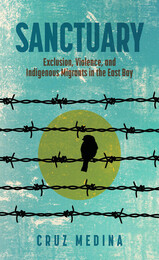 Sanctuary: Exclusion, Violence, and Indigenous Migrants in the East Bay
Cruz Medina
Ohio State University Press, 2024 In Sanctuary, Cruz Medina presents a powerful counterstory to dominant narratives surrounding Latin American and Global South im/migration by bringing attention to the displacement of Indigenous Guatemalan Maya people who seek refuge in the United States. These migrants have exchanged gang and narcotrafficker violence for the dehumanizing and exclusionary rhetoric of US political leaders, militarized immigration enforcement, false promises of empowerment through literacy, and further displacement from gentrification. Medina combines decolonial critical race theory with autoethnography to examine white supremacist policies that impact US and transnational Indigenous populations who have been displaced by neocolonial projects of capitalism.
Taking a Northern California community of migrants from Guatemala as a case study, Medina demonstrates the ways in which immigration policy and educational barriers exclude Indigenous migrant populations. He follows the community at the “Sanctuary”—a Spanish-speaking church in the East Bay Area that serves as a place of worship, English language instruction, and refuge for migrants. Medina assembles participant observations, interviews, surveys, and other data to provide points of entry into intersecting issues of immigration, violence, language, and property and to untangle aspects of citizenship, exclusion, and assumptions about literacy.
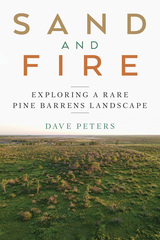 Sand and Fire: Exploring a Rare Pine Barrens Landscape
Dave Peters
Wisconsin Historical Society Press, 2023 The human and natural history of a fragile Midwestern landscape While many people are familiar with the federally protected St. Croix and Namekagon Rivers of northwestern Wisconsin, few know about the Namekagon Barrens, a rare pine barrens landscape within a few miles of their confluence. A tiny remnant of the millions of barrens acres that once covered the region, the Namekagon Barrens Wildlife Area lies in the heart of the state’s Northwest Sands, a band of pine and oak stretching from Bayfield on Lake Superior to St. Croix Falls on the Wisconsin–Minnesota border. Unfathomable amounts of glacial sand and repeated fires over thousands of years shaped a land of scrub oak and jack pine, blueberries and sweet fern, creating an ideal habitat for wolves and sharp-tailed grouse. Just as compelling is the land’s rich human history, from Paleo-Indian hunters to Ojibwe berry pickers, loggers to early road builders, and immigrants whose farming efforts failed to the wildlife habitat specialists who manage it today. The book, told in memoir style and featuring color photographs by the author, sets the land’s unusual natural history as the backdrop for a multilayered story about the impact of people on this vulnerable landscape.
Silver winner of the 2023 Midwest Book Award for History
"Peters invites his readers on a journey across time and space, to the glacial formation of the Namekagon Barrens into the present. . . . The book is replete with beautiful photographs, useful maps, and a number of other images that seem to appear on nearly every other page. This book should appeal to a wide public readership while at the same time being a useful primer for academics and researchers." —Hayden L. Nelson, Environmental History
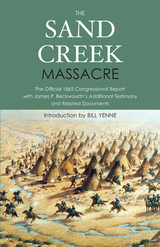 The Sand Creek Massacre: The Official 1865 Congressional Report with James P. Beckwourth's Additional Testimony and Related Documents
United States Congress
Westholme Publishing, 2015 An Important Primary Source of One of the Most Significant Atrocities in the Indian Wars with Unique Contemporary Annotations
On the morning of November 29, 1864, Colorado state cavalry under the command of Col. John Chivington attacked a peaceful encampment of mostly Cheyenne Indians along the Sand Creek in Colorado, slaughtering perhaps as many as 160 people, mostly women and children. It was one of the most egregious atrocities of the Indian Wars. Even with the country embroiled in a Civil War, the gravity of the situation can be gauged by the fact that within six weeks of the killings, a Joint Committee of Congress conducted a public hearing. Congress vilified Chivington in summarizing his cowardly and racist attack in their published report: “Wearing the uniform of the United States, which should be the emblem of justice and humanity . . . he deliberately planned and executed a foul and dastardly massacre.” The Sand Creek Massacre: The Official 1865 Report contains a facsimile of the “Report of the Joint Committee on the Conduct of the War: Massacre of the Cheyenne Indians” along with unique annotations made by a reader at the time and the attached typescript testimony of the African American pioneer James P. Beckwourth, in which he recounts the atrocity. This edition is introduced by Bill Yenne. who places the Sand Creek Massacre in context within the Civil War and Indian Wars and provides biographical information about the main persons involved.
 Sand, Snow, and Stardust: How US Military Engineers Conquered Extreme Environments
Gretchen Heefner
University of Chicago Press, 2025 A vivid tour of US military efforts to understand, survive, and command harsh environments worldwide—and beyond.
Deserts, the Arctic, outer space—these extreme environments are often seen as inhospitable places at the edges of our maps. But from the 1940s through the 1960s, spurred by the diverse and unfamiliar regions the US military had navigated during World War II, the United States defense establishment took a keen interest in these places, dispatching troops to the Aleutian Islands, North Africa, the South Pacific, and beyond. To preserve the country’s status as a superpower after the war, to pave runways and build bridges, engineers had to understand and then conquer dunes, permafrost, and even the surface of the moon.
Sand, Snow, and Stardust explores how the US military generated a new understanding of these environments and attempted to master them, intending to cement America’s planetary power. Operating in these regions depended as much on scientific and cultural knowledge as on military expertise and technology. From General George S. Patton learning the hard way that the desert is not always hot, to the challenges of constructing a scientific research base under the Arctic ice, to the sheer implausibility of modeling Martian environments on Earth, Gretchen Heefner takes us on a wry expedition into the extremes and introduces us to the people who have shaped our insight into these extraordinary environments. Even decades after the first manned space flight, plans for human space exploration and extraplanetary colonization are still based on what we know about stark habitats on Earth.
An entertaining survey of the relationship between environmental history and military might, Sand, Snow, and Stardust also serves as a warning about the further transformation of the planet—whether through desertification, melting ice caps, or attempts to escape it entirely.
Sand Theory: Poems
William Olsen
Northwestern University Press, 2011 The poems in Sand Theory, William Olsen’s fifth collection to date, bristle with intellect, sensitivity, and ambition. Engaging poets from William Blake to Theodore Roethke, Olsen takes aim at grand questions of spirituality, the instability of meaning, and the individual’s relationship with the natural world. Yet Olsen’s lithe and sinuous poems wear their metaphysical concerns lightly, shifting easily between the immediate perceptions of a passing moment and observations offered as if from a great distance, outside of time and space.
The energy of Olsen’s poems is generated by his ability to meld the intellectual and the emotional, the abstract and the concrete, into a seamless whole while maintaining a sense of wit and playfulness. Sand Theory cements Olsen’s standing as one of the most vital poets writing today, an audacious chronicler of “the supremely open moment.”
 The Sand Wasps: Natural History and Behavior
Howard E. Evans and Kevin M. O'Neill
Harvard University Press, 2007 Howard Ensign Evans was a brilliant ethologist and systematist for whom the joy of science included lying on his belly in some remote location, digging out and diagramming a wasp’s nest. During his career, Evans described over 900 species and authored more than a dozen books, both technical and popular, on a wide range of entomological and natural history subjects. Upon his death in 2002, he left behind an unfinished manuscript, intended as an update (though not a revision) of his classic 1966 work, The Comparative Ethology and Evolution of the Sand Wasps. Kevin O’Neill, Evans’s former student and coauthor, has completed and enlarged Evans’s manuscript to provide coverage of all sand-wasp tribes in Evan’s earlier book. The result is a tribe-by-tribe, species-by-species review of studies of the Bembicinae that have appeared over the last four decades.
The Sand Wasps: Natural History and Behavior already has been hailed by specialists as a new bible for those working on solitary wasps and an essential reference for scientists more broadly interested in insect behavioral evolution.
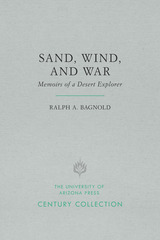 Sand, Wind, and War: Memoirs of a Desert Explorer
Ralph A. Bagnold
University of Arizona Press, 1990 Sand, Wind, and War records the work, travels and adventures of one of the last of the great British explorers, a man who served in both world wars and carved out a special niche in science through his studies of desert sands.
Ralph Alger Bagnold was born in 1896 into a military family and educated as an engineer. Posted to Egypt in 1926, he was one of a group of officers who adapted Model T Fords to desert travel and in 1932 made the first east-west crossing—6,000 miles—of the Libyan desert. Bagnold established such a name for himself that in World War II he was again posted to Egypt where he founded and trained the Long Range Desert Group that was to confound the German and Italian armies.
Bagnold’s fascination with the desert included curiosity over the formation of dunes, and beginning in 1935 he conducted wind tunnel experiments with sand that led to the book The Physics of Blown Sand and Desert Dunes. Eventually, he was to see his findings called on by NASA to interpret data on the sands of Mars. He devoted subsequent research to particle flow in fluids, and also served as a consultant to Middle Eastern governments concerned with the interference of sand flow in oil drilling.
Sand, Wind, and War is the life story of a man who not only helped shape events in one part of the world but also contributed to our understanding of it. It is a significant benchmark not only in the history of science, but also in the annals of adventure.
 Sandal and the Cave, The: The Indians of Oregon
Luther Cressman
Oregon State University Press, 2005 Luther Cressman's 1938 discovery of a 9,000-year-old sandal in Fort Rock Cave revolutionized accepted theories of western prehistory. The recovery of the woven sagebrush-bark sandal, found buried under a layer of volcanic ash from the eruption of Mount Mazama, established a human presence in the Oregon Country much earlier than previously thought. Through six decades of scientific investigation, Cressman worked to uncover the history of the first Oregonians. In The Sandal and the Cave, he offers a brief, lucid introduction to the prehistory of Oregon Indians. Cressman describes their diverse cultures, highlighting similarities and differences between the peoples of various regions: the Oregon Coast, the Klamath Highland, the Northern Great Basin, and the Columbia Plateau. In a new introduction to Cressman's classic work, Dennis Jenkins provides a short biographical profile of the "father of Oregon archaeology" and discusses the importance of Cressman's excavation results and interpretations. Jenkins also offers a concise summary of recent archaeological research in the Northern Great Basin, bringing readers the most up-to-date information about the oldest known sites in Oregon.
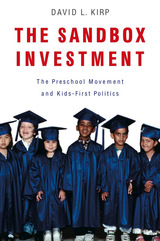 The Sandbox Investment: The Preschool Movement and Kids-First Politics
David L. Kirp
Harvard University Press, 2007 Listen to a short interview with David L. KirpHost: Chris Gondek | Producer: Heron & Crane
The rich have always valued early education, and for the past forty years, millions of poor kids have had Head Start. Now, more and more middle class parents have realized that a good preschool is the smartest investment they can make in their children's future in a competitive world. As The Sandbox Investment shows, their needs are key to the growing call for universal preschool.
Writing with the verve of a magazine journalist and the authority of a scholar, David L. Kirp makes the ideal guide to this quiet movement. He crouches in classrooms where committed teachers engage lively four-year-olds, and reveals the findings of an extraordinary longitudinal study that shows the life-changing impact of preschool. He talks with cutting-edge researchers from neuroscience and genetics to economics, whose findings increasingly show how powerfully early childhood shapes the arc of children's lives.
Kids-first politics is smart economics: paying for preschool now can help save us from paying for unemployment, crime, and emergency rooms later. As Kirp reports from the inside, activists and political leaders have turned this potent idea into campaigns and policies in red and blue states alike.
The Sandbox Investment is the first full story of a campaign that asks Americans to endorse a vision of society that does well by doing good. For anyone who is interested in politics or the social uses of research--for anyone who's interested in the children's futures--it's a compelling read.
Sanderlings
Geri Doran
Tupelo Press, 2011 Like the wading birds of the title, the poems in this collection find their sustenance in the ground, tilling the earthly measure, even as they lift questions toward the heavens. Summoning the pastoral and the oracular by turns, the poems of Sanderlings achieve a preternatural rapture, both sensual and learned.
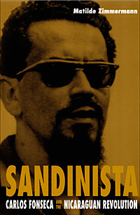 Sandinista: Carlos Fonseca and the Nicaraguan Revolution
Matilde Zimmermann
Duke University Press, 2000 “A must-read for anyone interested in Nicaragua—or in the overall issue of social change.”—Margaret Randall, author of SANDINO'S DAUGHTERS and SANDINO'S DAUGHTERS REVISITED
Sandinista is the first English-language biography of Carlos Fonseca Amador, the legendary leader of the Sandinista National Liberation Front of Nicaragua (the FSLN) and the most important and influential figure of the post–1959 revolutionary generation in Latin America. Fonseca, killed in battle in 1976, was the undisputed intellectual and strategic leader of the FSLN. In a groundbreaking and fast-paced narrative that draws on a rich archive of previously unpublished Fonseca writings, Matilde Zimmermann sheds new light on central themes in his ideology as well as on internal disputes, ideological shifts, and personalities of the FSLN.
The first researcher ever to be allowed access to Fonseca’s unpublished writings (collected by the Institute for the Study of Sandinism in the early 1980s and now in the hands of the Nicaraguan Army), Zimmermann also obtained personal interviews with Fonseca’s friends, family members, fellow combatants, and political enemies. Unlike previous scholars, Zimmermann sees the Cuban revolution as the crucial turning point in Fonseca’s political evolution. Furthermore, while others have argued that he rejected Marxism in favor of a more pragmatic nationalism, Zimmermann shows how Fonseca’s political writings remained committed to both socialist revolution and national liberation from U.S. imperialism and followed the ideas of both Che Guevara and the earlier Nicaraguan leader Augusto César Sandino. She further argues that his philosophy embracing the experiences of the nation’s workers and peasants was central to the FSLN’s initial platform and charismatic appeal.
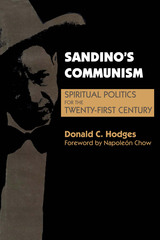 Sandino's Communism: Spiritual Politics for the Twenty-First Century
By Donald C. Hodges
University of Texas Press, 1992 Drawing on previously unknown or unassimilated sources, Donald C. Hodges here presents an entirely new interpretation of the politics and philosophy of Augusto C. Sandino, the intellectual progenitor of Nicaragua's Sandinista revolution. The first part of the book investigates the political sources of Sandino's thought in the works of Babeuf, Buonarroti, Blanqui, Proudhon, Bakunin, Most, Malatesta, Kropotkin, Ricardo Flores Magón, and Lenin—a mixed legacy of pre-Marxist and non-Marxist authoritarian and libertarian communists. The second half of the study scrutinizes the philosophy of nature and history that Sandino made his own. Hodges delves deeply into this philosophy as the supreme and final expression of Sandino's communism and traces its sources in the Gnostic and millenarian occult undergrounds. This results in a rich study of the ways in which Sandino's revolutionary communism and communist spirituality intersect—a spiritual politics that Hodges presents as more realistic than the communism of Karl Marx. While accepting the current wisdom that Sandino was a Nicaraguan liberal and social reformer, Hodges also makes a persuasive case that Sandino was first and foremost a communist, although neither of the Marxist nor anarchist variety. He argues that Sandino's eclectic communist spirituality was more of an asset than a liability for understanding the human condition, and that his spiritual politics promises to be more relevant than Marxism-Leninism for the twenty-first century. Indeed, Hodges believes that Sandino's holistic communism embraces both deep ecology and feminist spirituality—a finding that is sure to generate lively and productive debate.
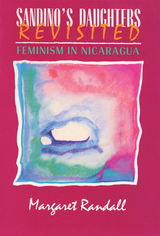 Sandino's Daughters Revisited: Feminism in Nicaragua
Randall, Margaret
Rutgers University Press, 1994 Sandino's Daughters, Margaret Randall's conversations with Nicaraguan women in their struggle against the dictator Somoza in 1979, brought the lives of a group of extraordinary female revolutionaries to the American and world public. The book remains a landmark. Now, a decade later, Randall returns to interview many of the same women and others. In Sandino's Daughters Revisited, they speak of their lives during and since the Sandinista administration, the ways in which the revolution made them strong — and also held them back. Ironically, the 1990 defeat of the Sandinistas at the ballot box has given Sandinista women greater freedom to express their feelings and ideas. Randall interviewed these outspoken women from all walks of life: working-class Diana Espinoza, head bookkeeper of a employee-owned factory; Daisy Zamora, a vice minister of culture under the Sandinistas; and Vidaluz Meneses, daughter of a Somozan official, who ties her revolutionary ideals to her Catholicism. The voices of these women, along with nine others, lead us to recognize both the failed promises and continuing attraction of the Sandinista movement for women. This is a moving account of the relationship between feminism and revolution as it is expressed in the daily lives of Nicaraguan women.
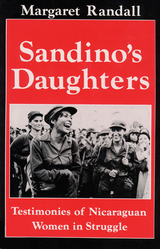 Sandino's Daughters: Testimonies of Nicaraguan Women in Struggle
Randall, Margaret
Rutgers University Press, 1995 "A collection of varied and amazing lives, all bent on shaping history. Together, these experienced, undeterred Nicaraguan women offer powerful clues about a truly revolutionary and democratizing feminism."––Adrienne Rich
"If it were not for writers like Margaret, how would women around the world find each other when there is such an institutional effort to keep us apart and silent? Here Margaret brings us the voice of Sandino's daughters, honoring his hat and wearing their own, wiser now, having been part of political and personal revolution."––Holly Near
"Powerful, moving, and challenging. Everyone interested in decency and justice will want to read Sandino's Daughters Revisited."––Blanche Wiesen Cook
Sandino's Daughters, Margaret Randall's conversations with Nicaraguan women in their struggle against the dictator Somoza in 1979, brought the lives of a group of extraordinary female revolutionaries to the American and world public. The book remains a landmark. Now, a decade later, Randall returns to interview many of the same women and others. In Sandino's Daughters Revisited, they speak of their lives during and since the Sandinista administration, the ways in which the revolution made them strong––and also held them back. Ironically, the 1990 defeat of the Sandinistas at the ballot box has given Sandinista women greater freedom to express their feelings and ideas.
Randall interviewed these outspoken women from all walks of life: working-class Diana Espinoza, head bookkeeper of a employee-owned factory; Daisy Zamora, a vice minister of culture under the Sandinistas; and Vidaluz Meneses, daughter of a Somozan official, who ties her revolutionary ideals to her Catholicism. The voices of these women, along with nine others, lead us to recognize both the failed promises and continuing attraction of the Sandinista movement for women. This is a moving account of the relationship between feminism and revolution as it is expressed in the daily lives of Nicaraguan women.
 Sandow the Magnificent: Eugen Sandow and the Beginnings of Bodybuilding
David L. Chapman
University of Illinois Press, 1994 Before Arnold Schwarzenegger, Steve Reeves, or Charles Atlas, there was German-born Eugen Sandow (1867-1925), a muscular vaudeville strongman who used his good looks, intelligence, and business savvy to forge a fitness empire. David L. Chapman tells the story of the immensely popular showman who emphasized physique display rather than lifting prowess. But he also looks at Sandow's success off-stage, where the entertainer helped found the fitness movement by establishing a worldwide chain of gyms, publishing a popular magazine, selling exercise equipment, and pioneering the use of food supplements. Chapman explains physical culture's popularity in terms of its wider social implications while delving into how Sandow, by making exercise fashionable, ushered in the fitness craze that continues today. This new edition has been revised and enlarged with an afterword that includes unpublished information, new photographs of Sandow and his contemporaries, and an updated index.
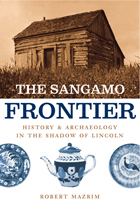 The Sangamo Frontier: History and Archaeology in the Shadow of Lincoln
Robert Mazrim
University of Chicago Press, 2006 When Abraham Lincoln moved to Illinois’ Sangamo Country in 1831, he found a pioneer community transforming from a cluster of log houses along an ancient trail to a community of new towns and state roads. But two of the towns vanished in a matter of years, and many of the activities and lifestyles that shaped them were almost entirely forgotten. In The Sangamo Frontier, archaeologist Robert Mazrim unearths the buried history of this early American community, breathing new life into a region that still rests in Lincoln’s shadow.
Named after a shallow river that cuts through the prairies of central Illinois, the Sangamo Country—an area that now encompasses the capital city of Springfield and present-day Sangamon County—was first colonized after the War of 1812. For the past fifteen years, Mazrim has conducted dozens of excavations there, digging up pieces of pioneer life, from hand-forged iron and locally made crockery to pewter spoons and Staffordshire teacups. And here, in beautifully illustrated stories of each dig, he shows how each of these small artifacts can teach us something about the lifestyles of people who lived on the frontier nearly two hundred years ago. Allowing us to see past the changed modern landscape and the clichés of pioneer history, Mazrim deftly uses his findings to portray the homes, farms, taverns, and pottery shops where Lincoln’s neighbors once lived and worked.
Drawing readers into the thrill of discovery, The Sangamo Frontier inaugurates a new kind of archaeological history that both enhances and challenges our written history. It imbues today’s landscape with an authentic ghostliness that will reawaken the curiosity of anyone interested in the forgotten people and places that helped shape our nation.
 The Sanitary Arts: Aesthetic Culture and the Victorian Cleanliness Campaigns
Eileen Cleere
Ohio State University Press, 2014 Eileen Cleere argues in this interdisciplinary study that mid-century discoveries about hygiene and cleanliness not only influenced public health, civic planning, and medical practice but also powerfully reshaped the aesthetic values of the British middle class. By focusing on paintings, domestic architecture, and interior design, The Sanitary Arts: Aesthetic Culture and the Victorian Cleanliness Campaigns shows that the “sanitary aesthetic” significantly transformed the taste of the British public over the nineteenth century by equating robust health and cleanliness with new definitions of beauty and new experiences of aisthesis. Covering everything from connoisseurs to custodians, Cleere demonstrates that Victorian art critics, engineers, and architects—and even novelists from George Eliot to Charles Dickens, Charlotte Mary Young to Sarah Grand—all participated in a vital cultural debate over hygiene, cleanliness, and aesthetic enlightenment.
The Sanitary Arts covers the mid-forties controversy over cleaning the dirt from the pictures in the National Gallery, the debate over decorative “dust traps” in the overstuffed Victorian home, and the late-century proliferation of hygienic breeding principles as a program of aesthetic perfectibility, to demonstrate the unintentionally collaborative work of seemingly unrelated events and discourses. Bringing figures like Edwin Chadwick and John Ruskin into close conversation about the sanitary status of beauty in a variety of forms and environments, Cleere forcefully demonstrates that aesthetic development and scientific discovery can no longer be understood as separate or discrete forces of cultural change.
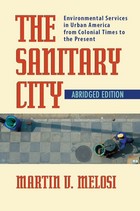 The Sanitary City: Environmental Services in Urban America from Colonial Times to the Present
Martin V. Melosi
University of Pittsburgh Press, 2008
Immersed in their on-demand, highly consumptive, and disposable lifestyles, most urban Americans take for granted the technologies that provide them with potable water, remove their trash, and process their wastewater. These vital services, however, are the byproduct of many decades of development by engineers, sanitarians, and civic planners.
In The Sanitary City, Martin V. Melosi assembles a comprehensive, thoroughly researched and referenced history of sanitary services in urban America. He examines the evolution of water supply, sewage systems, and solid waste disposal during three distinct eras: The Age of Miasmas (pre-1880); The Bacteriological Revolution (1880-1945); and The New Ecology (1945 to present-day).
Originally published in 2000, this abridged edition includes updated text and bibliographic materials. The Sanitary City is an essential resource for those interested in environmental history, environmental engineering, science and technology, urban studies, and public health.
Winner of:
George Perkins Marsh Prize from the American Society for Environmental History Urban History Association Prize for the best book in North American Urban History
Abel Wolman Prize from the Public Works Historical Society
Sidney Edelstein Prize from the Society for the History of Technology
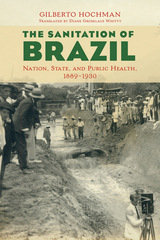 The Sanitation of Brazil: Nation, State, and Public Health, 1889-1930
Gilberto Hochman
University of Illinois Press, 2016 Celebrated as a major work since its original publication, The Sanitation of Brazil traces how rural health and sanitation policies influenced the formation of Brazil's national public health system. Gilberto Hochman's pioneering study examines the ideological, social and political forces that approached questions of health and government action. The era from 1910 to 1930 offered unique opportunities for public health reform, and Hochman examines its successes and failures. He looks at how health became a state concern, tying the emergence of public health policies to a nationalistic movement and to a convergence of the elites' social consciousness with their political and material interests. Politicians weighed the costs and benefits of state-run public health versus the burdens imposed by disease. Physicians and intellectuals, meanwhile, swayed them with warnings that endemic disease and official neglect might affect everyone--rich and poor, rural and urban, interior and coastal--if left unchecked. The book shows how disease and health were and are associated with nation-state building in Brazil.
Sanity Plea: Schizophrenia in the Novels of Kurt Vonnegut
Lawrence R. Broer
University of Alabama Press, 1994 In this revised edition of a volume originally published in 1989, Lawrence Broer extends his comprehensive critique of the body of writing by Kurt Vonnegut. Broer offers a broad psychoanalytic study of Vonnegut’s works from Player Piano to Hocus Pocus, taking a decisively new approach to the work of one of America’s most important, yet often misinterpreted writers. A compelling and original analysis, Sanity Plea, explores how Vonnegut incorporates his personal experiences into an art that is not defeatist, but rather creatively therapeutic and life-affirming.
Sans Papiers: The Social and Economic Lives of Young Undocumented Migrants
Alice Bloch, Nando Sigona, and Roger Zetter
Pluto Press, 2014 Undocumented migration is a huge global phenomenon, yet little is known about the reality of life for those involved. Sans Papiers combines a contemporary account of the theoretical and policy debates with an in-depth exploration of the lived experiences of undocumented migrants in the UK from Zimbabwe, China, Brazil, Ukraine and Turkish Kurdistan.
Built around their voices, the book provides a unique understanding of migratory processes, gendered experiences and migrant aspirations. Moving between the uniqueness of individual experience and the search for commonalities, the book explores the ambiguities and contradictions of being an undocumented migrant.
With its insights into personal experiences alongside analysis of wider policy issues, Sans Papiers will have wide appeal for students, academics, policy-makers and practitioners.
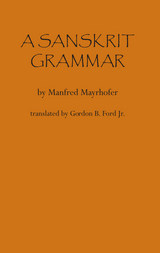 A Sanskrit Grammar
Manfred Mayrhofer
University of Alabama Press, 1972 A translation of the revised version of the 1965 German edition
Translated for the benefit of Englishspeaking students of Sanskrit and students of comparative Indo-European linguistics. Mayrhofer's Sanskrit grammar can be used successfully in three different types of course: in elementary Sanskrit courses along with such an elementary text as Jan Gonda's A Concise Elementary Grammar of the Sanskrit Language, with exercises, reading selections, and a glossary, translated from the German by Gordon B. Ford, Jr.; in courses where the linguistic structure of Sanskrit is to be presented; and, finally, in comparative lndo-European courses together with such texts as Antoine Meillet's Introduction to the Comparative Study of the Inda-European Languages, translated from the French by Gordon B. Ford, Jr. All three groups of students should find this important book extremely useful, and I hope that its publication in an English edition will promote the study of Sanskrit in the English-speaking world.
Sanskrit Poetry from Vidyakara's Treasury
Daniel H. H. Ingalls
Harvard University Press In this rich collection of Sanskrit verse, the late Daniel Ingalls provides English readers with a wide variety of poetry from the vast anthology of an eleventh-century Buddhist scholar.
Although the style of poetry presented here originated in royal courts, Ingalls shows how it was adapted to all aspects of life, and came to address issues as diverse as love, sex, heroes, nature, and peace. More than thirty years after its original publication, Sanskrit Poetry continues to be the main resource for all interested in this multifaceted and elegant tradition.
A Sanskrit Reader: Text and Vocabulary and Notes
Charles Lanman
Harvard University Press This reader is designed to serve as an introduction to the subject for the students and to provide knowledge of Sanskrit to the teachers of high schools, academies and colleges. The work helps to correct some of the false notions which are prevalent respecting the relations of Sanskrit to other languages of the Indo-European family. It also keeps saving the literature from undue depreciation and from exaggerated praise. The author has made selections from various Sanskrit writings keeping two aims in mind: firstly to provide abundant material for thorough drill in the language of classical period; and secondly, to furnish a brief introduction to the works of the Vedic period, Mantra, Brahmana and Sutra best suited for beginners.
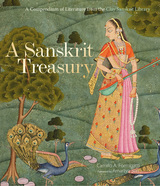 A Sanskrit Treasury: A Compendium of Literature from the Clay Sanskrit Library
Camillo A. Formigatti
Bodleian Library Publishing, 2020 This beautiful collection brings together passages from the renowned stories, poems, dramas and myths of South Asian literature, including the Mahabharata and the Ramaya?a. Drawing on the translations published by the Clay Sanskrit Library, the book presents episodes from the adventures of young Krishna, the life of Prince Rama and Hindu foundational myths, the life of the Buddha, as well as Buddhist and Jaina birth stories. Pairing key excerpts from these wonderful Sanskrit texts with exquisite illustrations from the Bodleian Library’s rich manuscript collections, the book includes images of birch-bark and palm-leaf manuscripts, vibrant Mughal miniatures, early printed books, sculptures, watercolour paintings and even early photograph albums. Each extract is presented in both English translation and Sanskrit in Devanagari script, and is accompanied by a commentary on the literature and related books and artworks. The collection is organised by geographical region and includes sections on the Himalayas, North India, Central and South India, Sri Lanka and South East Asia, Tibet, Inner and East Asia, and the Middle East and Europe. This is the perfect introduction for anyone interested in Sanskrit literature and the manuscript art of South Asia – and beyond.
Santa Fe Different: 22 Years and All I Got Was a Cheeseburger
Arnold Vigil
Museum of New Mexico Press, 2019 From 2004 to 2009, the Albuquerque Journal North ran the ¡ÓRALE! SANTA FE column by Santa Fe native and veteran journalist Arnold Vigil. The editor gave carte blanche to Vigil in his selection of topics ranging from encounters with locals and tourists to social commentary about changes that have taken place over the years. Vigil’s local perspective and humorous insights about Santa Fe, its inhabitants, and visitors struck a chord with readers—native Nuevomexicanos and long-time residents alike. Despite its popularity, the column was discontinued as a result of the economic downturn.
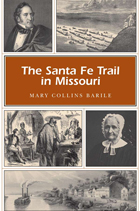 The Santa Fe Trail in Missouri
Mary Collins Barile
University of Missouri Press, 2010 For nineteenth-century travelers, the Santa Fe Trail was an indispensable route stretching from Missouri to New Mexico and beyond, and the section called “The Missouri Trail”—from St. Louis to Westport—offered migrating Americans their first sense of the West with its promise of adventure. The truth was, any easterner who wanted to reach Santa Fe had to first travel the width of Missouri. This book offers an easy-to-read introduction to Missouri’s chunk of Santa Fe Trail, providing an account of the trail’s historical and cultural significance. Mary Collins Barile tells how the route evolved, stitched together from Indian paths, trappers’ traces, and wagon roads, and how the experience of traveling the Santa Fe Trail varied even within Missouri. The book highlights the origin and development of the trail, telling how nearly a dozen Missouri towns claimed the trail: originally Franklin, from which the first wagon trains set out in 1821, then others as the trailhead moved west. It also offers a brief description of what travelers could expect to find in frontier Missouri, where cooks could choose from a variety of meats, including hogs fed on forest acorns and game such as deer, squirrels, bear, and possum, and reminds readers of the risks of western travel. Injury or illness could be fatal; getting a doctor might take hours or even days. Here, too, are portraits of early Franklin, which was surprisingly well supplied with manufactured “boughten” goods, and Boonslick, then the near edge of the Far West. Entertainment took the form of music, practical jokes, and fighting, the last of which was said to be as common as the ague and a great deal more fun—at least from the fighters’ point of view. Readers will also encounter some of the major people associated with the trail, such as William Becknell, Mike Fink, and Hanna Cole, with quotes that bring the era to life. A glossary provides useful information about contemporary trail vocabulary, and illustrations relating to the period enliven the text. The book is easy and informative reading for general readers interested in westward expansion. It incorporates history and folklore in a way that makes these resources accessible to all Missourians and anyone visiting historic sites along the trail.
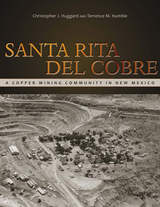 Santa Rita del Cobre: A Copper Mining Community in New Mexico
Christopher J. Huggard
University Press of Colorado, 2012 The Spanish, Mexicans, and Americans, successively, mined copper for more than 200 years in Santa Rita, New Mexico. Starting in 1799 after an Apache man led the Spanish to the native copper deposits, miners at the site followed industry developments in the nineteenth century to create a network of underground mines. In the early twentieth century these works became part of the Chino Copper Company's open-pit mining operations-operations that would overtake Santa Rita by 1970. In Santa Rita del Cobre, Huggard and Humble detail these developments with in-depth explanations of mining technology, and describe the effects on and consequences for the workers, the community, and the natural environment. Originally known as El Cobre, the mining-military camp of Santa Rita del Cobre ultimately became the company town of Santa Rita, which after World War II evolved into an independent community. From the town's beginnings to its demise, its mixed-heritage inhabitants from Mexico and United States cultivated rich family, educational, religious, social, and labor traditions. Extensive archival photographs, many taken by officials of the Kennecott Copper Corporation, accompany the text, providing an important visual and historical record of a town swallowed up by the industry that created it.
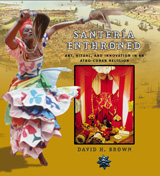 Santeria Enthroned: Art, Ritual, and Innovation in an Afro-Cuban Religion
David H. Brown
University of Chicago Press, 2003 Ever since its emergence in colonial-era Cuba, Afro-Cuban Santería (or Lucumí) has displayed a complex dynamic of continuity and change in its institutions, rituals, and iconography. In Santería Enthroned, David H. Brown combines art history, cultural anthropology, and ethnohistory to show how Africans and their descendants have developed novel forms of religious practice in the face of relentless oppression.
Focusing on the royal throne as a potent metaphor in Santería belief and practice, Brown shows how negotiation among ideologically competing interests have shaped the religion's symbols, rituals, and institutions from the nineteenth century to the present. Rich case studies of change in Cuba and the United States, including a New Jersey temple and South Carolina's Oyotunji Village, reveal patterns of innovation similar to those found among rival Yoruba kingdoms in Nigeria. Throughout, Brown argues for a theoretical perspective on culture as a field of potential strategies and "usable pasts" that actors draw upon to craft new forms and identities—a perspective that will be invaluable to all students of the African Diaspora.
American Acemy of Religion Award for Excellence in the Study of Religion (Analytical-Descriptive Category)
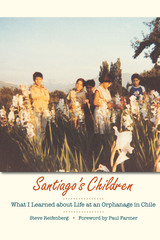 Santiago's Children: What I Learned about Life at an Orphanage in Chile
By Steve Reifenberg
University of Texas Press, 2008 Runner-up, Bronze Medal, Independent Publishers Book Awards: Memoir/Autobiography Category, 2009 Unclear about his future career path, Steve Reifenberg found himself in the early 1980s working at a small orphanage in a poor neighborhood in Santiago, Chile, where a determined single woman was trying to create a stable home for a dozen or so children who had been abandoned or abused. With little more than good intentions and very limited Spanish, the 23-year-old Reifenberg plunged into the life of the Hogar Domingo Savio, becoming a foster father to kids who stretched his capacities for compassion and understanding in ways he never could have imagined back in the United States. In this beautifully written memoir, Reifenberg recalls his two years at the Hogar Domingo Savio. His vivid descriptions create indelible portraits of a dozen remarkable kids—mature-beyond-her-years Verónica; sullen, unresponsive Marcelo; and irrepressible toddler Andrés, among them. As Reifenberg learns more about the children's circumstances, he begins to see the bigger picture of life in Chile at a crucial moment in its history. The early 1980s were a time of economic crisis and political uprising against the brutal military dictatorship of Augusto Pinochet. Reifenberg skillfully interweaves the story of the orphanage with the broader national and international forces that dramatically impact the lives of the kids. By the end of Santiago's Children, Reifenberg has told an engrossing story not only of his own coming-of-age, but also of the courage and resilience of the poorest and most vulnerable residents of Latin America.
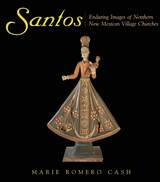 Santos: Enduring Images of Northern New Mexican Village Churches
Marie Romero Cash
University Press of Colorado, 1999 Richly illustrated with examples of eighteenth- and nineteenth-century art from northern New Mexico's village churches, Santos is an in-depth investigation into the artistic heritage of the New Mexican santero (saint maker). It is also an important study of northern New Mexican artisans and their craft.
Along with photographer Jack Parsons, Marie Romero Cash visited every church in the region and documented, identified, and measured each santos. Together they photographed more than 500 pieces, including 19 moradas (places of worship for Penitentes) and the Archdiocese of Santa Fe Collection housed at the Museum of International Folk Art.
Cash's extensive research into these formerly "anonymous" artisans fills a gap in the study of this unique form, making Santos indispensable for art historians and the general reader interested in the culture and art of the American Southwest.
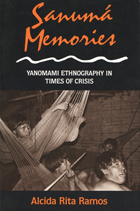 Sanuma Memories: Yanomami Ethnography in Times of Crisis
Alcida Rita Ramos
University of Wisconsin Press, 1995 The Yanomami people of Brazil first attracted anthropological and popular attention in the 1960s, when they were portrayed as essentially primitive and violent in the widely read book Yanomamo: The Fierce People. To this image of the Yanomami another has recently been added: that of victims of the economic rapacity devouring the Amazon.
Sanumá Memories moves beyond these images to provide the first anthropologically sophisticated account of the Yanomami and their social organization, kinship, and marriage, capturing both individual experiences and the broader sociological trends that engulf them. A poignant personal story as well, it draws on Alcida Ramos's extensive fieldwork among the Sanumá (the northernmost Yanomami subgroup) from 1968 to 1992, as she reports on the brutal impact of many invasions—from road construction to the gold rush that brought the Yanomami social chaos, thousands of deaths, devastation of gardens and forest, and a disquietingly uncertain future.
At the cutting edge of anthropological description and analysis, Sanumá Memories ponders the importance of "otherness" to the Sanumá; describes Sanumá spaces, from the grandiosity of the rain forest to cozy family compartments; analyzes their notions of time, from the minute reckoning of routine village life to historical and metaphysical macro-time; shows how power and authority are generated and allocated in space and time; and examines the secrecy of personal names and the all-pervading consequences of disclosing them.
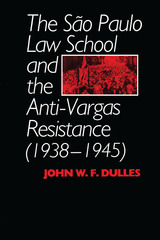 The São Paulo Law School and the Anti-Vargas Resistance (1938-1945)
By John W. F. Dulles
University of Texas Press, 1986 The São Paulo Law School, the oldest institution of higher learning in Brazil, has long been the chief training center for that country’s leadership. For the members of the school’s secret Burschenschaft society, the training consisted principally in leading demonstrations for liberal causes, such as the abolition of slavery and the overthrow of the monarchy. During the Old Republic (1889–1930), the Brazilian presidency and other high posts in Rio de Janeiro were usually occupied by alumni of the powerful society, while its members in São Paulo continued to agitate for political reform. But in the 1920s, when they formed the Nationalist League and the Democratic Party, schisms resulted. Thus the Burschenschaft was weakened before the long rule of Brazil by Getúlio Vargas, starting in 1930, brought an end to the society’s influence. The role of the school in these and other historical events is carefully reviewed by Dulles before he turns to the school’s well-known resistance to the dictatorship of Vargas. That resistance, the most persistent confronting the dictator, appeared to be unified—especially when it provoked the police into shooting the students. But, as Dulles discovered when interviewing participants and consulting documents and scrapbooks of the early 1940s, the movement was characterized by heated internal strife. In the end, however, the idealism and courage of the participants and the ultimate effectiveness of the movement contributed mightily to the fall of Vargas. This book is another in Dulles’s series of narrative histories in which he gives flesh and blood to the names and breathes life into the events of twentieth-century Brazilian politics.
|
|


